Poverty Essay for Students and Children
500+ words essay on poverty essay.
“Poverty is the worst form of violence”. – Mahatma Gandhi.


How Poverty is Measured?
For measuring poverty United nations have devised two measures of poverty – Absolute & relative poverty. Absolute poverty is used to measure poverty in developing countries like India. Relative poverty is used to measure poverty in developed countries like the USA. In absolute poverty, a line based on the minimum level of income has been created & is called a poverty line. If per day income of a family is below this level, then it is poor or below the poverty line. If per day income of a family is above this level, then it is non-poor or above the poverty line. In India, the new poverty line is Rs 32 in rural areas and Rs 47 in urban areas.
Get the huge list of more than 500 Essay Topics and Ideas
Causes of Poverty
According to the Noble prize winner South African leader, Nelson Mandela – “Poverty is not natural, it is manmade”. The above statement is true as the causes of poverty are generally man-made. There are various causes of poverty but the most important is population. Rising population is putting the burden on the resources & budget of countries. Governments are finding difficult to provide food, shelter & employment to the rising population.
The other causes are- lack of education, war, natural disaster, lack of employment, lack of infrastructure, political instability, etc. For instance- lack of employment opportunities makes a person jobless & he is not able to earn enough to fulfill the basic necessities of his family & becomes poor. Lack of education compels a person for less paying jobs & it makes him poorer. Lack of infrastructure means there are no industries, banks, etc. in a country resulting in lack of employment opportunities. Natural disasters like flood, earthquake also contribute to poverty.
In some countries, especially African countries like Somalia, a long period of civil war has made poverty widespread. This is because all the resources & money is being spent in war instead of public welfare. Countries like India, Pakistan, Bangladesh, etc. are prone to natural disasters like cyclone, etc. These disasters occur every year causing poverty to rise.
Ill Effects of Poverty
Poverty affects the life of a poor family. A poor person is not able to take proper food & nutrition &his capacity to work reduces. Reduced capacity to work further reduces his income, making him poorer. Children from poor family never get proper schooling & proper nutrition. They have to work to support their family & this destroys their childhood. Some of them may also involve in crimes like theft, murder, robbery, etc. A poor person remains uneducated & is forced to live under unhygienic conditions in slums. There are no proper sanitation & drinking water facility in slums & he falls ill often & his health deteriorates. A poor person generally dies an early death. So, all social evils are related to poverty.
Government Schemes to Remove Poverty
The government of India also took several measures to eradicate poverty from India. Some of them are – creating employment opportunities , controlling population, etc. In India, about 60% of the population is still dependent on agriculture for its livelihood. Government has taken certain measures to promote agriculture in India. The government constructed certain dams & canals in our country to provide easy availability of water for irrigation. Government has also taken steps for the cheap availability of seeds & farming equipment to promote agriculture. Government is also promoting farming of cash crops like cotton, instead of food crops. In cities, the government is promoting industrialization to create more jobs. Government has also opened ‘Ration shops’. Other measures include providing free & compulsory education for children up to 14 years of age, scholarship to deserving students from a poor background, providing subsidized houses to poor people, etc.
Poverty is a social evil, we can also contribute to control it. For example- we can simply donate old clothes to poor people, we can also sponsor the education of a poor child or we can utilize our free time by teaching poor students. Remember before wasting food, somebody is still sleeping hungry.
Customize your course in 30 seconds
Which class are you in.

- Travelling Essay
- Picnic Essay
- Our Country Essay
- My Parents Essay
- Essay on Favourite Personality
- Essay on Memorable Day of My Life
- Essay on Knowledge is Power
- Essay on Gurpurab
- Essay on My Favourite Season
- Essay on Types of Sports
Leave a Reply Cancel reply
Your email address will not be published. Required fields are marked *
Download the App

7 Essays About Poverty: Example Essays and Prompts
Essays about poverty give valuable insight into the economic situation that we share globally. Read our guide with poverty essay examples and prompts for your paper.
In the US, the official poverty rate in 2022 was 11.5 percent, with 37.9 million people living below the poverty line. With a global pandemic, cost of living crisis, and climate change on the rise, we’ve seen poverty increase due to various factors. As many of us face adversity daily, we can look to essays about poverty from some of the world’s greatest speakers for inspiration and guidance.
There is nothing but a lack of social vision to prevent us from paying an adequate wage to every American citizen whether he be a hospital worker, laundry worker, maid or day laborer. There is nothing except shortsightedness to prevent us from guaranteeing an annual minimum—and livable—income for every American family. Martin Luther King Jr., Where Do We Go from Here: Chaos or Community?
Writing a poverty essay can be challenging due to the many factors contributing to poverty and the knock-on effects of living below the poverty line . For example, homelessness among low-income individuals stems from many different causes.
It’s important to note that poverty exists beyond the US, with many developing countries living in extreme poverty without access to essentials like clean water and housing. For help with your essays, check out our round-up of the best essay checkers .
Essays About Poverty: Top Examples
1. pensioner poverty: fear of rise over decades as uk under-40s wealth falls, 2. the surprising poverty levels across the u.s., 3. why poverty persists in america, 4. post-pandemic poverty is rising in america’s suburbs.
- 5. The Basic Facts About Children in Poverty
- 6. The State of America’s Children
- 7. COVID-19: This is how many Americans now live below the poverty line
10 Poverty Essay Topics
1. the causes of poverty, 2. the negative effects of poverty, 3. how countries can reduce poverty rates, 4. the basic necessities and poverty, 5. how disabilities can lead to poverty, 6. how the cycle of poverty unfolds , 7. universal basic income and its relationship to poverty, 8. interview someone who has experience living in poverty, 9. the impact of the criminal justice system on poverty, 10. the different ways to create affordable housing.
There is growing concern about increasing pensioner poverty in the UK in the coming decades. Due to financial challenges like the cost of living crisis, rent increases, and the COVID-19 pandemic, under 40s have seen their finances shrink.
Osborne discusses the housing wealth gap in this article, where many under the 40s currently pay less in a pension due to rent prices. While this means they will have less pension available, they will also retire without owning a home, resulting in less personal wealth than previous generations. Osborne delves into the causes and gaps in wealth between generations in this in-depth essay.
“Those under-40s have already been identified as facing the biggest hit from rising mortgage rates , and last week a study by the financial advice firm Hargreaves Lansdown found that almost a third of 18- to 34-year-olds had stopped or cut back on their pension contributions in order to save money.” Hilary Osborne, The Guardian
In this 2023 essay, Jeremy Ney looks at the poverty levels across the US, stating that poverty has had the largest one-year increase in history. According to the most recent census, child poverty has more than doubled from 2021 to 2022.
Ney states that the expiration of government support and inflation has created new financial challenges for US families. With the increased cost of living and essential items like food and housing sharply increasing, more and more families have fallen below the poverty line. Throughout this essay, Ney displays statistics and data showing the wealth changes across states, ethnic groups, and households.
“Poverty in America reflects the inequality that plagues U.S. households. While certain regions have endured this pain much more than others, this new rising trend may spell ongoing challenges for even more communities.” Jeremy Ney, TIME

In this New York Times article, a Pulitzer Prize-winning sociologist explores why poverty exists in North America.
The American poor have access to cheap, mass-produced goods, as every American does. But that doesn’t mean they can access what matters most. Matthew Desmond, The New York Times
The U.S. Census Bureau recently released its annual data on poverty, revealing contrasting trends for 2022. While one set of findings indicated that the overall number of Americans living in poverty remained stable compared to the previous two years, another survey highlighted a concerning increase in child poverty. The rate of child poverty in the U.S. doubled from 2021 to 2022, a spike attributed mainly to the cessation of the expanded child tax credit following the pandemic. These varied outcomes underscore the Census Bureau’s multifaceted methods to measure poverty.
“The nation’s suburbs accounted for the majority of increases in the poor population following the onset of the pandemic” Elizabeth Kneebone and Alan Berube, Brookings
5. The Basic Facts About Children in Poverty
Nearly 11 million children are living in poverty in America. This essay explores ow the crisis reached this point—and what steps must be taken to solve it.
“In America, nearly 11 million children are poor. That’s 1 in 7 kids, who make up almost one-third of all people living in poverty in this country.” Areeba Haider, Center for American Progress
6. The State of America’s Children
This essay articles how, despite advancements, children continue to be the most impoverished demographic in the U.S., with particular subgroups — such as children of color, those under five, offspring of single mothers, and children residing in the South — facing the most severe poverty levels.
“Growing up in poverty has wide-ranging, sometimes lifelong, effects on children, putting them at a much higher risk of experiencing behavioral, social, emotional, and health challenges. Childhood poverty also plays an instrumental role in impairing a child’s ability and capacity to learn, build skills, and succeed academically.” Children’s Defense Fund
7. COVID-19: This is how many Americans now live below the poverty line
This essay explores how the economic repercussions of the coronavirus pandemic 2020 led to a surge in U.S. poverty rates, with unemployment figures reaching unprecedented heights. The writer provides data confirming that individuals at the lowest economic strata bore the brunt of these challenges, indicating that the recession might have exacerbated income disparities, further widening the chasm between the affluent and the underprivileged.
“Poverty in the U.S. increased in 2020 as the coronavirus pandemic hammered the economy and unemployment soared. Those at the bottom of the economic ladder were hit hardest, new figures confirm, suggesting that the recession may have widened the gap between the rich and the poor.” Elena Delavega, World Econmic Forum
If you’re tasked with writing an essay about poverty, consider using the below topics. They offer pointers for outlining and planning an essay about this challenging topic.
One of the most specific poverty essay topics to address involves the causes of poverty. You can craft an essay to examine the most common causes of extreme poverty. Here are a few topics you might want to include:
- Racial discrimination, particularly among African Americans, has been a common cause of poverty throughout American history. Discrimination and racism can make it hard for people to get the education they need, making it nearly impossible to get a job.
- A lack of access to adequate health care can also lead to poverty. When people do not have access to healthcare, they are more likely to get sick. This could make it hard for them to go to work while also leading to major medical bills.
- Inadequate food and water can lead to poverty as well. If people’s basic needs aren’t met, they focus on finding food and water instead of getting an education they can use to find a better job.
These are just a few of the most common causes of poverty you might want to highlight in your essay. These topics could help people see why some people are more likely to become impoverished than others. You might also be interested in these essays about poverty .
Poverty affects everyone, and the impacts of an impoverished lifestyle are very real. Furthermore, the disparities when comparing adult poverty to child poverty are also significant. This opens the doors to multiple possible essay topics. Here are a few points to include:
- When children live in poverty, their development is stunted. For example, they might not be able to get to school on time due to a lack of transportation, making it hard for them to keep up with their peers. Child poverty also leads to malnutrition, which can stunt their development.
- Poverty can impact familial relationships as well. For example, members of the same family could fight for limited resources, making it hard for family members to bond. In addition, malnutrition can stunt the growth of children.
- As a side effect of poverty, people have difficulty finding a safe place to live. This creates a challenging environment for everyone involved, and it is even harder for children to grow and develop.
- When poverty leads to homelessness, it is hard for someone to get a job. They don’t have an address to use for physical communication, which leads to employment concerns.
These are just a few of the many side effects of poverty. Of course, these impacts are felt by people across the board, but it is not unusual for children to feel the effects of poverty that much more. You might also be interested in these essays about unemployment .
Different countries take different approaches to reduce the number of people living in poverty
The issue of poverty is a major human rights concern, and many countries explore poverty reduction strategies to improve people’s quality of life. You might want to examine different strategies that different countries are taking while also suggesting how some countries can do more. A few ways to write this essay include:
- Explore the poverty level in America, comparing it to the poverty level of a European country. Then, explore why different countries take different strategies.
- Compare the minimum wage in one state, such as New York, to the minimum wage in another state, such as Alabama. Why is it higher in one state? What does raising the minimum wage do to the cost of living?
- Highlight a few advocacy groups and nonprofit organizations actively lobbying their governments to do more for low-income families. Then, talk about why some efforts are more successful than others.
Different countries take different approaches to reduce the number of people living in poverty. Poverty within each country is such a broad topic that you could write a different essay on how poverty could be decreased within the country. For more, check out our list of simple essays topics for intermediate writers .
You could also write an essay on the necessities people need to survive. You could take a look at information published by the United Nations , which focuses on getting people out of the cycle of poverty across the globe. The social problem of poverty can be addressed by giving people the necessities they need to survive, particularly in rural areas. Here are some of the areas you might want to include:
- Affordable housing
- Fresh, healthy food and clean water
- Access to an affordable education
- Access to affordable healthcare
Giving everyone these necessities could significantly improve their well-being and get people out of absolute poverty. You might even want to talk about whether these necessities vary depending on where someone is living.
There are a lot of medical and social issues that contribute to poverty, and you could write about how disabilities contribute to poverty. This is one of the most important essay topics because people could be disabled through no fault of their own. Some of the issues you might want to address in this essay include:
- Talk about the road someone faces if they become disabled while serving overseas. What is it like for people to apply for benefits through the Veterans’ Administration?
- Discuss what happens if someone becomes disabled while at work. What is it like for someone to pursue disability benefits if they are hurt doing a blue-collar job instead of a desk job?
- Research and discuss the experiences of disabled people and how their disability impacts their financial situation.
People who are disabled need to have money to survive for many reasons, such as the inability to work, limitations at home, and medical expenses. A lack of money, in this situation, can lead to a dangerous cycle that can make it hard for someone to be financially stable and live a comfortable lifestyle.
Many people talk about the cycle of poverty, yet many aren’t entirely sure what this means or what it entails. A few key points you should address in this essay include:
- When someone is born into poverty, income inequality can make it hard to get an education.
- A lack of education makes it hard for someone to get into a good school, which gives them the foundation they need to compete for a good job.
- A lack of money can make it hard for someone to afford college, even if they get into a good school.
- Without attending a good college, it can be hard for someone to get a good job. This makes it hard for someone to support themselves or their families.
- Without a good paycheck, it is nearly impossible for someone to keep their children out of poverty, limiting upward mobility into the middle class.
The problem of poverty is a positive feedback loop. It can be nearly impossible for those who live this every day to escape. Therefore, you might want to explore a few initiatives that could break the cycle of world poverty and explore other measures that could break this feedback loop.
Many business people and politicians have floated the idea of a universal basic income to give people the basic resources they need to survive. While this hasn’t gotten a lot of serious traction, you could write an essay to shed light on this idea. A few points to hit on include:
- What does a universal basic income mean, and how is it distributed?
- Some people are concerned about the impact this would have on taxes. How would this be paid for?
- What is the minimum amount of money someone would need to stay out of poverty? Is it different in different areas?
- What are a few of the biggest reasons major world governments haven’t passed this?
This is one of the best essay examples because it gives you a lot of room to be creative. However, there hasn’t been a concrete structure for implementing this plan, so you might want to afford one.
Another interesting topic you might want to explore is interviewing someone living in poverty or who has been impoverished. While you can talk about statistics all day, they won’t be as powerful as interviewing someone who has lived that life. A few questions you might want to ask during your interview include:
- What was it like growing up?
- How has living in poverty made it hard for you to get a job?
- What do you feel people misunderstand about those who live in poverty?
- When you need to find a meal, do you have a place you go to? Or is it somewhere different every day?
- What do you think is the main contributor to people living in poverty?
Remember that you can also craft different questions depending on your responses. You might want to let the interviewee read the essay when you are done to ensure all the information is accurate and correct.
The criminal justice system and poverty tend to go hand in hand. People with criminal records are more likely to be impoverished for several reasons. You might want to write an essay that hits on some of these points:
- Discuss the discriminatory practices of the criminal justice system both as they relate to socioeconomic status and as they relate to race.
- Explore just how hard it is for someone to get a job if they have a criminal record. Discuss how this might contribute to a life of poverty.
- Dive into how this creates a positive feedback loop. For example, when someone cannot get a job due to a criminal record, they might have to steal to survive, which worsens the issue.
- Review what the criminal justice system might be like for someone with resources when compared to someone who cannot afford to hire expert witnesses or pay for a good attorney.
You might want to include a few examples of disparate sentences for people in different socioeconomic situations to back up your points.
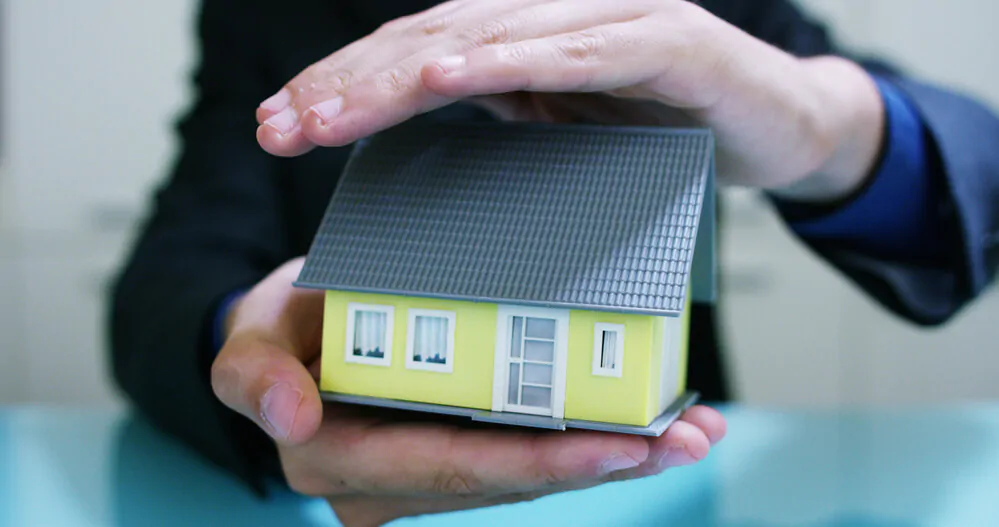
Affordable housing can make a major difference when someone is trying to escape poverty
Many poverty-related problems could be reduced if people had access to affordable housing. While the cost of housing has increased dramatically in the United States , some initiatives exist to create affordable housing. Here are a few points to include:
- Talk about public programs that offer affordable housing to people from disadvantaged backgrounds.
- Discuss private programs, such as Habitat for Humanity , doing similar things.
- Review the positive impacts that stable housing has on both adults and children.
- Dive into other measures local and federal governments could take to provide more affordable housing for people.
There are a lot of political and social angles to address with this essay, so you might want to consider spreading this out across multiple papers. Affordable housing can make a major difference when trying to escape poverty. If you want to learn more, check out our essay writing tips !

Meet Rachael, the editor at Become a Writer Today. With years of experience in the field, she is passionate about language and dedicated to producing high-quality content that engages and informs readers. When she's not editing or writing, you can find her exploring the great outdoors, finding inspiration for her next project.
View all posts
Talk to our experts
1800-120-456-456
- Poverty Essay for Students in English

Essay on Poverty
Poverty is a disease that has no cure. The deeper this disease is, the deeper its wound. By the way, man lives under compulsion. But usually one wants to avoid it. Poverty is a condition of extreme poverty for any person or human being. This is a situation when a person starts to lack important things in his life such as the roof, necessary food, clothes, medicines, etc. to continue his life.
The causes of poverty are excessive population, fatal and contagious diseases, natural disasters, low agricultural yields, unemployment, casteism, illiteracy, gender inequality, environmental problems, changing trends in the economy of the country, untouchability, little or limited access to people's rights, Problems such as political violence, sponsored crime, corruption, lack of encouragement, inaction, ancient social beliefs, etc. have to be faced.
Poverty has become a big problem of the world, efforts are being made across the world today to remove poverty, but the problem is that it does not take the name of ending. This problem affects a human's economic and daily life. Poverty teaches man to live like a slave in which he has to change the place over time, in this situation due to the lack of education of the poor, his nature and speech also make a difference. Living in a world of poor people has become a curse. Getting enough money to get food is like getting relief from a curse for the poor, that's why they do not have access to education.
Reasons of Poverty
There are many reasons that have continued with carrying it for a long time. Because of this, freedom, mental and physical fitness, and lack of security in a person remains. It is very important that in order to live a normal life, the country and the whole world will have to work together to bring proper physical and mental health, complete education, a home for everyone, and other important things.
In today's time, there is the problem of poverty which gives all the pain, pain, and despair to the poor. Due to the lack of money from poverty, I show the lack of many things. Poverty makes children spend life in compulsion. If forced to make bread, sometimes in bringing children's books. At that time he is also unable to raise children.
We can tell poverty in many ways like it has become a common thing in India. Most of the people here are unable to get the things they need. Here a vast section of the population is illiterate, hungry, and forced to live without clothes and a home. About half of India's population suffers from this epidemic of poverty.
A poor person lives his life without possession of basic things like food for two times, clean water, house, clothes, proper education, etc. There are many reasons for poverty in India. Incorrect distribution of national income is also a reason. People in the low-income group are much poorer than those in the high-income group. Children of poor families never get proper education, nutrition, and a happy childhood environment. The main cause of poverty is illiteracy, corruption, growing population, weak agriculture, the growing gap between rich and poverty, etc.
Measures to Control Poverty
Corruption has to be erased.
Unemployed will have to give proper employment
A growing population will have to be stopped
Farmers have to be given proper facilities for farming
Education should be provided to children for proper education
Poverty is not just a human problem but it is a national problem. It should be solved by implementing some effective methods on a quick basis. Every person should be united by ending corruption. A problem has been created in which he does not get even the basics. That is why at present, many measures are being taken to prevent poverty so that the standard of living of people around the world can be improved.
Short Essays on Poverty
Poverty is akin to being a slave, as a person cannot achieve anything he desires. It has various faces that alter depending on who you are, where you are, and when. It can be defined in various ways depending on how a person feels or experiences it.
Poverty is a state that no one wants to be in, but it must be removed owing to cultural norms, natural disasters, or a lack of adequate education. The individual who is experiencing it frequently wishes to flee. Poverty is a call for poor people to earn enough money to eat, have access to education, have adequate shelter, dress appropriately, and take steps to protect themselves from social and political violence.
It's a problem that goes unnoticed yet significantly impacts a person's social life. Poverty is an entirely avoidable problem, but there are various reasons why it has persisted in the past.
Poverty robs people of their freedom, mental health, physical well-being, and security. Everyone must strive to eradicate poverty from the country and the world, ensuring appropriate physical and mental health, full literacy, a home for all, and other necessities for living a simple life.
When a person cannot do anything according to his will, he is said to be in poverty. Many different faces alter depending on who you are, where you are, and time. It can be characterized in a variety of ways, depending on how the person feels or what they have achieved. Poverty is a circumstance that no one wants to be in, even if it is forced upon them due to a lack of experience, nature, natural disasters, or a lack of suitable education. Humans have won it, but they prefer to stay away from it. Poverty is a call for needed clothing and protection against social and political violence for the poor to earn enough money to buy food, receive an education, and find a suitable place to live.
This is an unseen problem that harms a person's social life. Even though numerous factors have contributed to its long-term persistence, poverty is a perfectly preventable problem. As a result, a person's freedom, mental and physical well-being, and sense of security are all compromised. It is critical to bring poverty and poverty from worldwide to work together to live everyday life, provide adequate physical and mental health, complete education, a home for everyone, and other essential things.

FAQs on Poverty Essay for Students in English
1. What are the Effects of Poverty?
When people are not able to afford their basic necessities. For example medications and hospital fees are impossible to afford for that means they choose crook ways of obtaining money i.e. stealing, robbery, etc.
2. What are the Possible Ways to Remove Poverty?
Since India is a developing country, eliminating poverty here is much tougher than in other countries but still some measures can be taken and government assistance would be much helpful in this step which requires some relevant planning and policies for those who fall under the poverty line. Another major factor of poverty is illiteracy and unemployment. Therefore education is the most efficient tool to confine the poverty line in the country.
3. What is the Poverty Line?
The Below Poverty Line (BPL) signifies the state of people who fall under poverty status. It also symbolizes an economic drawback. In addition, it is used for people who are in need of help and assistance from the government.
4. What are the causes of poverty?
Poverty has several causes, including a lack of access to essentials such as water, food, shelter, education, and healthcare. Poverty is also caused by inequities such as gender or ethnic discrimination, bad governance, conflict, exploitation, and domestic violence. These disparities not only cause a person or a society to fall into poverty, but they can also prevent people from receiving social assistance that could help them get out of it. Due to political upheaval, past or present conflict, corrupt authorities, and lousy infrastructure that restricts access to education, clean water, healthcare, and other essentials, children and communities in fragile states confront greater poverty rates.
5. What can we do to put an end to extreme poverty?
We can aid in the eradication of extreme poverty by determining what causes it in a particular community and then determining what needs to change. Because poverty manifests itself differently in different regions and is caused by different circumstances, the work to end extreme poverty differs depending on the situation. More economic resources are needed to assist people in increasing their income and better providing for themselves and their families. To ensure that poverty does not return, the work must be sustainable, regardless of the solution. As a result, the community must be involved at every stage.
6. What criteria are used to assess poverty?
Each country's government determines poverty levels by conducting home surveys of its citizens. The World Bank, for example, assists and may conduct their surveys, although data collecting is time-consuming and slow. New high-frequency surveys are being created and tested, leveraging estimations and mobile phone technologies. If you want to learn more about these topics, download the Vedantu App that has been specifically designed and curated for students by experts.
7. What is the poverty cycle?
Poverty can be a catch-22 situation. To escape poverty, a person requires access to possibilities such as education, clean water, local medical services, and financial means. Poverty creates a generational cycle if these critical factors are not there. If parents cannot afford to take their children to school, they will struggle to find work when they grow up. Even natural disasters and conflicts can exacerbate the poverty cycle by bringing more people.
8. What are the United Nations' Sustainable Development Goals (SDGs)?
The Sustainable Development Goals (SDGs) are a set of goals for countries worldwide to work together in a global partnership for the benefit of people, the environment, and prosperity. The Sustainable Development Goals aim to abolish extreme poverty for all people everywhere by 2030 and to reduce the proportion of people living in poverty in all forms by at least half. In September 2015, the United Nations member states accepted this objective as one of 17 to end extreme poverty.

30,000+ students realised their study abroad dream with us. Take the first step today
Meet top uk universities from the comfort of your home, here’s your new year gift, one app for all your, study abroad needs, start your journey, track your progress, grow with the community and so much more.

Verification Code
An OTP has been sent to your registered mobile no. Please verify

Thanks for your comment !
Our team will review it before it's shown to our readers.

- School Education /
Essay on Poverty: Samples in 100, 200, 300 Words

- Updated on
- Oct 14, 2023
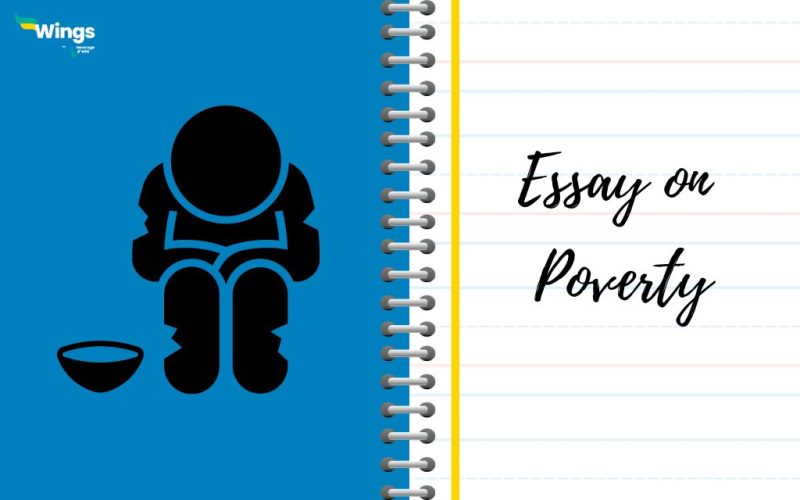
Poverty is a deep-rooted problem that continues to affect a large portion of the world’s population today. It touches on several aspects of human life including but not limited to political, economic, and social elements. Even though there are several methods to escape poverty, still issues arise due to a lack of adequate unity among the country’s citizens. Here are some essays on poverty which will give you insights about this topic.
Table of Contents
- 1 Essay on Poverty in 100 words
- 2 Essay on Poverty in 200 words
- 3.1 Reasons Behind Poverty
- 3.2 World Poverty Conditions
- 3.3 Role of NGOs to Eradicate Poverty
- 3.4 What Can be Done by Us?
Essay on Poverty in 100 words
Poverty is defined as a state of scarcity, and the lack of material possessions to such an extreme extent that people have difficulties in fulfilling their basic needs. Robert McNamara, a former World Bank President, states that extreme poverty is limited by illiteracy, malnutrition, disease, high infant mortality rate, squalid conditions of living, and low life expectancy.
In order to eradicate poverty in a country, strict measures need to be taken on all levels. The political system needs to address this issue with utmost sincerity and strategic implementation in such a way that it improves the lives of people, especially the ones living below the poverty line.
Also Read: Speech on Made in India
Essay on Poverty in 200 words
Poverty is like a parasite that degrades its host and eventually causes a lot of damage to the host. It is basically the scarcity of basic needs that leads to an extremely degraded life and even low life expectancy. It includes a lack of food, shelter, medication, education, and other basic necessities. Poverty is a more serious circumstance where people are forced to starve. It can be caused by a variety of factors depending upon the country.
Every country that is hit with pandemic diseases, experiences an increase in poverty rates. This is because of the fact that poor people are unable to receive adequate medical care and hence are unable to maintain their health. This renders the people powerless and even puts their liberty in jeopardy. This is because of the fact that poor people can become trapped in a vicious cycle of servitude. The condition of poverty is a distressing one that causes pain, despair, and grief in the lives of the ones it affects.
This is also a negative scenario that prevents a child from attending basic education. It’s the lack of money that prevents people from living sufficiently. Also, it is the cause of more serious social concerns such as slavery, child labour, etc. Hence action is needed on the same with utmost sincerity.
Essay on Poverty in 300 words
Poverty is a multifaceted concept that includes several aspects such as social aspects, political elements, economic aspects, etc. It is basically associated with undermining a variety of essential human attributes such as health, education, etc. Despite the growth and development of the economies of countries, poverty still exists in almost every one of them.
Reasons Behind Poverty
There are several contributing reasons behind poverty in a nation. Some of them are mentioned below:-
- Lack of literacy among citizens
- Lack of Capital in the country
- Large families and a rapidly growing population
- Limited employment opportunities
There are even urban areas where the slum population is increasing. These are deprived of many basic amenities such as sanitation, drainage systems, and low-cost water supply, etc.
World Poverty Conditions
According to UNICEF , around 22000 children lose their lives each day due to poverty. There are approximately 1.9 billion children in developing countries in the world and India is also among them. Out of these, approximately 640 million don’t have a proper shelter, 270 million are living without medical facilities, and approximately 400 million don’t have access to safe water. This worldwide situation is growing at a fast pace.
Role of NGOs to Eradicate Poverty
The approaches by NGOs basically include helping the poor by providing various public services such as medical services etc.
They also play a major role in mobilizing the services recommended by the government. They have various approaches and strategies that directly help the poor in various ways.
What Can be Done by Us?
We help in eradicating poverty by increasing employment opportunities.
Ensuring financial services and providing the same is another such measure that can be taken.
Recognizing social entrepreneurs as people of influence, conveying to them the seriousness of this situation, and then eventually making people aware of the same is another thing that can be done.
Related Articles:
Essay on Agriculture
Essay on Football
Essay on Isaac Newton
Essay on Knowledge is Power
Writing an essay on poverty in 200 words requires you to describe various aspects of this topic such as what causes poverty, how it affects individuals and society as a whole, etc. The condition of poverty is a distressing one that causes pain, despair, and grief in the lives of the ones it affects.
An essay on poverty may be started as follows:- Poverty is a deep-rooted problem that continues to affect a large portion of the world’s population today. It touches on several aspects of human life including but not limited to political, economic, and social elements. Even though there are several methods to escape poverty, still issues arise due to a lack of adequate unity among the country’s citizens.
Poverty in 100 words: Poverty is defined as a state of scarcity, and the lack of material possessions to such an extreme extent that people have difficulties in fulfilling their basic needs. Robert McNamara, a former World Bank President, states that extreme poverty is limited by illiteracy, malnutrition, disease, high infant mortality rate, squalid conditions of living, and low life expectancy. In order to eradicate poverty in a country, strict measures need to be taken on all levels. The political system needs to address this issue with utmost sincerity and strategic implementation in such a way that it improves the lives of people, especially the ones living below the poverty line.
For more information on such interesting topics, visit our essay writing page and follow Leverage Edu .
Deepansh Gautam
Leave a Reply Cancel reply
Save my name, email, and website in this browser for the next time I comment.
Contact no. *

Connect With Us

30,000+ students realised their study abroad dream with us. Take the first step today.

Resend OTP in

Need help with?
Study abroad.
UK, Canada, US & More
IELTS, GRE, GMAT & More
Scholarship, Loans & Forex
Country Preference
New Zealand
Which English test are you planning to take?
Which academic test are you planning to take.
Not Sure yet
When are you planning to take the exam?
Already booked my exam slot
Within 2 Months
Want to learn about the test
Which Degree do you wish to pursue?
When do you want to start studying abroad.
January 2024
September 2024
What is your budget to study abroad?

How would you describe this article ?
Please rate this article
We would like to hear more.
Have something on your mind?

Make your study abroad dream a reality in January 2022 with
India's Biggest Virtual University Fair

Essex Direct Admission Day
Why attend .

Don't Miss Out
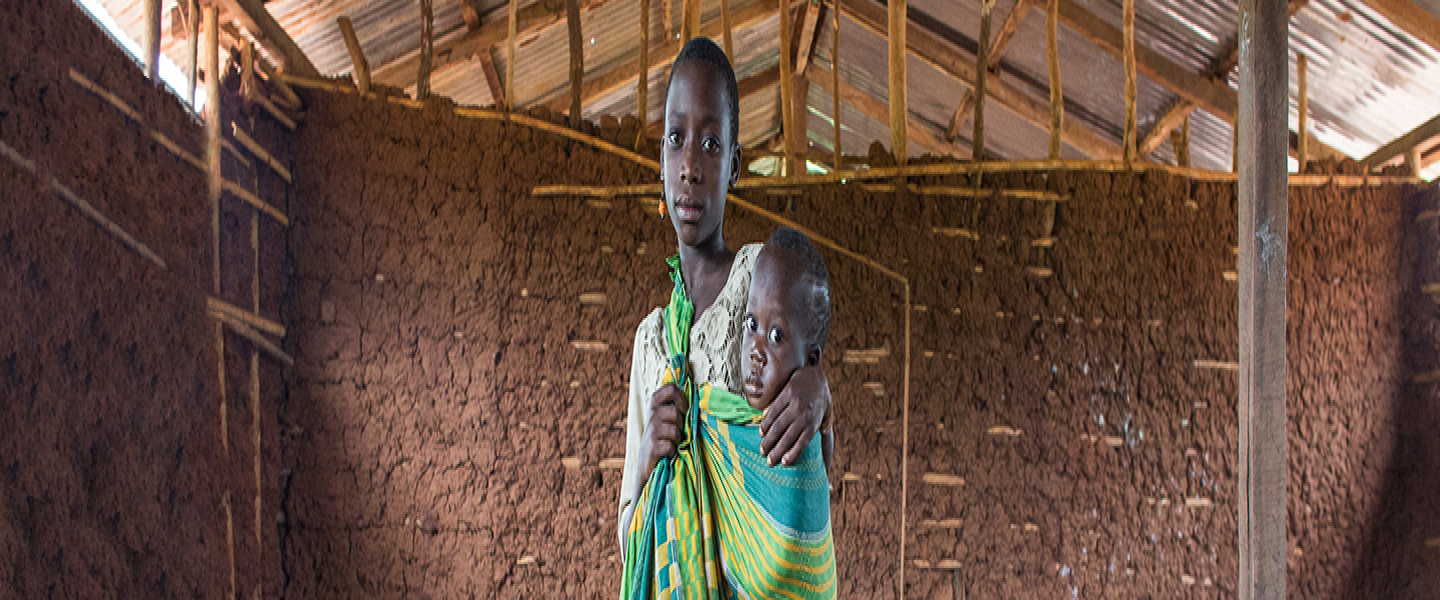
The World Bank Group is committed to fighting poverty in all its dimensions. We use the latest data, evidence and analysis to help countries develop policies to improve people's lives, with a focus on the poorest and most vulnerable.
Around 700 million people live on less than $2.15 per day, the extreme poverty line. Extreme poverty remains concentrated in parts of Sub-Saharan Africa, fragile and conflict-affected areas, and rural areas.
After decades of progress, the pace of global poverty reduction began to slow by 2015, in tandem with subdued economic growth. The Sustainable Development Goal of ending extreme poverty by 2030 remains out of reach.
Global poverty reduction was dealt a severe blow by the COVID-19 pandemic and a series of major shocks during 2020-22, causing three years of lost progress. Low-income countries were most impacted and have yet to recover. In 2022, a total of 712 million people globally were living in extreme poverty, an increase of 23 million people compared to 2019.
We cannot reduce poverty and inequality without also addressing intertwined global challenges, including slow economic growth, fragility and conflict, and climate change.
Climate change is hindering poverty reduction and is a major threat going forward. The lives and livelihoods of poor people are the most vulnerable to climate-related risks.
Millions of households are pushed into, or trapped in, poverty by natural disasters every year. Higher temperatures are already reducing productivity in Africa and Latin America, and will further depress economic growth, especially in the world’s poorest regions.
Eradicating poverty requires tackling its many dimensions. Countries cannot adequately address poverty without also improving people’s well-being in a comprehensive way, including through more equitable access to health, education, and basic infrastructure and services, including digital.
Policymakers must intensify efforts to grow their economies in a way that creates high quality jobs and employment, while protecting the most vulnerable.
Jobs and employment are the surest way to reduce poverty and inequality. Impact is further multiplied in communities and across generations by empowering women and girls, and young people.
Last Updated: Apr 02, 2024
Closing the gaps between policy aspiration and attainment
Too often, there is a wide gap between policies as articulated and their attainment in practice—between what citizens rightfully expect, and what they experience daily. Policy aspirations can be laudable, but there is likely to be considerable variation in the extent to which they can be realized, and in which groups benefit from them. For example, at the local level, those who have the least influence in a community might not be able to access basic services. It is critical to forge implementation strategies that can rapidly and flexibly respond to close the gaps.
Enhancing learning, improving data
From information gathered in household surveys to pixels captured by satellite images, data can inform policies and spur economic activity, serving as a powerful weapon in the fight against poverty. More data is available today than ever before, yet its value is largely untapped. Data is also a double-edged sword, requiring a social contract that builds trust by protecting people against misuse and harm, and works toward equal access and representation.
Investing in preparedness and prevention
The COVID-19 pandemic demonstrated that years of progress in reducing poverty can quickly disappear when a crisis strikes. Prevention measures often have low political payoff, with little credit given for disasters averted. Over time, populations with no lived experience of calamity can become complacent, presuming that such risks have been eliminated or can readily be addressed if they happen. COVID-19, together with climate change and enduring conflicts, reminds us of the importance of investing in preparedness and prevention measures comprehensively and proactively.
Expanding cooperation and coordination
Contributing to and maintaining public goods require extensive cooperation and coordination. This is crucial for promoting widespread learning and improving the data-driven foundations of policymaking. It is also important for forming a sense of shared solidarity during crises and ensuring that the difficult policy choices by officials are both trusted and trustworthy.
Overall, with more than 60 percent of the world’s extreme poor living in middle-income countries, we cannot focus solely on low-income countries if we want to end extreme poverty. We need to focus on the poorest people, regardless of where they live, and work with countries at all income levels to invest in their well-being and their future.
The goal to end extreme poverty works hand in hand with the World Bank Group’s goal to promote shared prosperity. Boosting shared prosperity broadly translates into improving the welfare of the least well-off in each country and includes a strong emphasis on tackling persistent inequalities that keep people in poverty from generation to generation.
Our work at the World Bank Group is based on strong country-led programs to improve living conditions—to drive growth, raise median incomes, create jobs, fully incorporate women and young people into economies, address environmental and climate challenges, and support stronger, more stable economies for everyone.
We continue to work closely with countries to help them find the best ways to improve the lives of their least advantaged citizens.
Last Updated: Oct 17, 2023
How the Pandemic Drove Increases in Poverty | Poverty & Shared Prosperity 2022
Around the bank group.
Find out what the World Bank Group's branches are doing to reduce poverty.
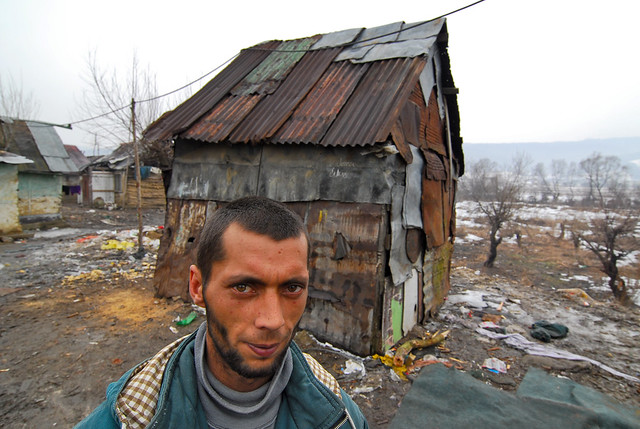
STAY CONNECTED
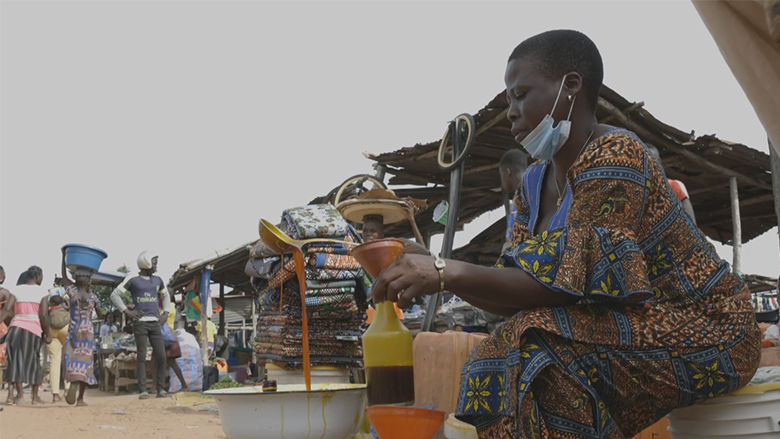
COVID-19 Dealt a Historic Blow to Poverty Reduction
The 2022 Poverty and Prosperity Report provides the first comprehensive analysis of the pandemic’s toll on poverty in developing countries and of the role of fiscal policy in protecting vulnerable groups.
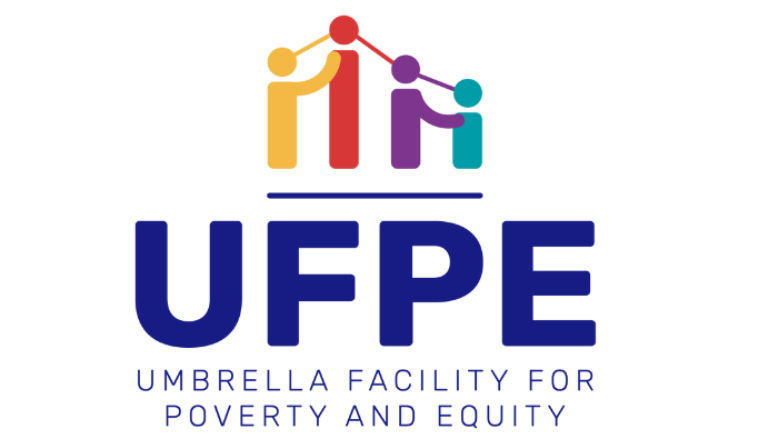
Umbrella Facility for Poverty and Equity
The Umbrella Facility for Poverty and Equity (UFPE) is the first global trust fund to support the cross-cutting poverty and equity agenda.
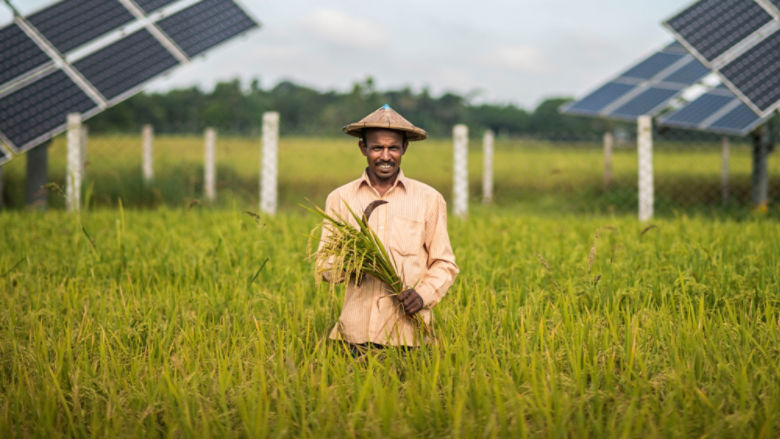
IDA: Our Fund for the Poorest
The International Development Association (IDA) aims to reduce poverty by providing funding for programs that boost economic growth.
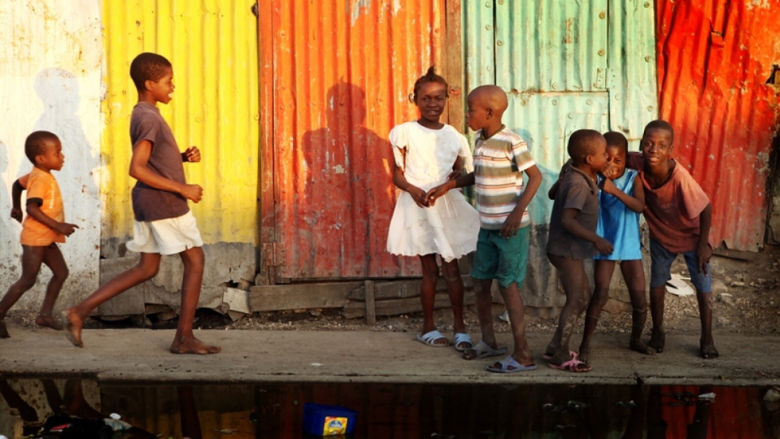
As the World Bank’s behavioral sciences team within the Poverty and Equity Global Practice, eMBeD uses behavioral sciences to fight global poverty and reduce inequality.
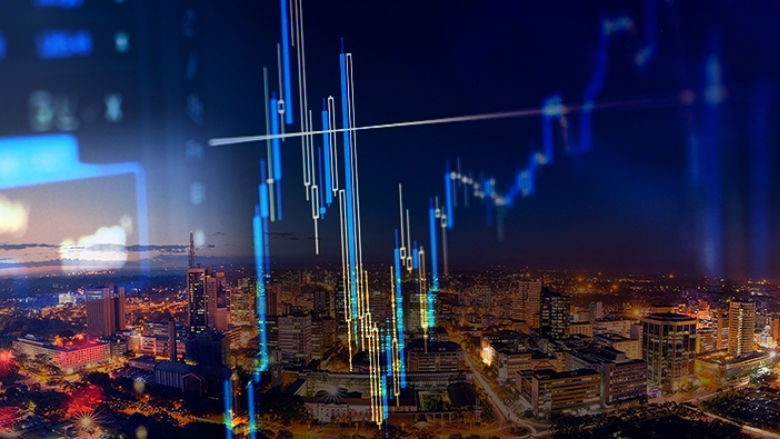
High-Frequency Monitoring Systems to Track the Impacts of COVID-19
The World Bank and partners are monitoring the crisis and the socioeconomic impacts of COVID-19 through a series of high-frequency phone surveys.
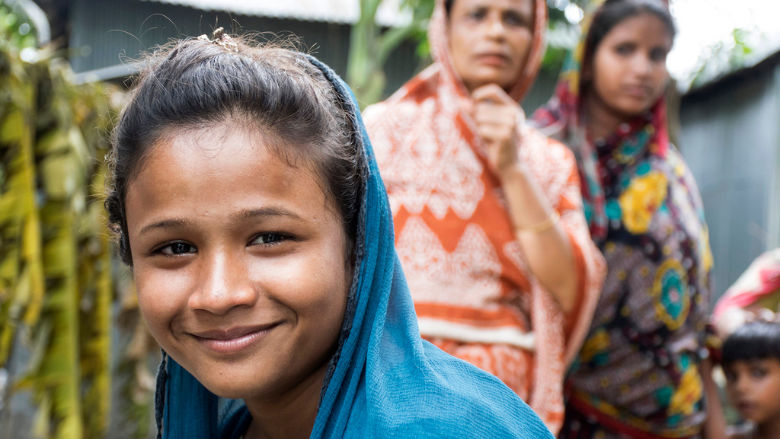
An Adjustment to Global Poverty Lines
The World Bank uses purchasing power parities (PPPs) to estimate global poverty. With the release of 2017 PPPs, we’ll start using in Fall 2022 new poverty lines to determine the share of the world population in poverty.
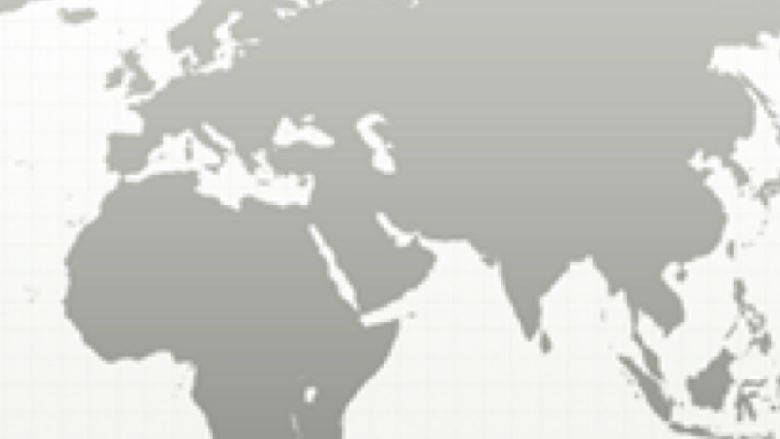
Systematic Country Diagnostics
The SCD looks at issues in countries and seeks to identify barriers and opportunities for sustainable poverty reduction.
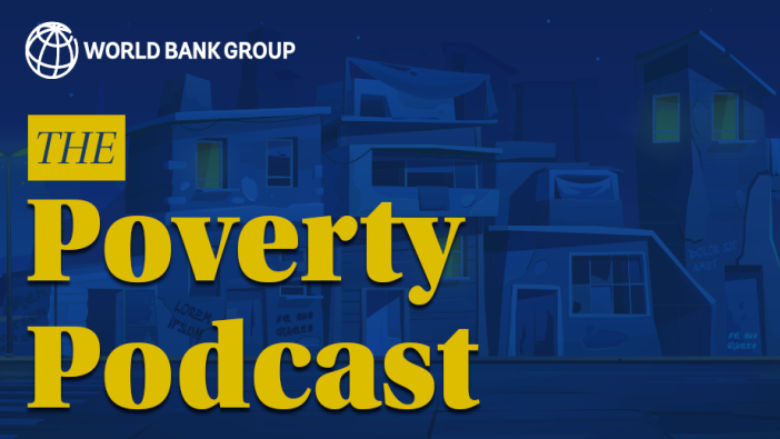
Poverty Podcast
Join us and poverty specialists as we explore the latest data and research on poverty reduction, shared prosperity, and equity around the globe in this new World Bank Group podcast series.
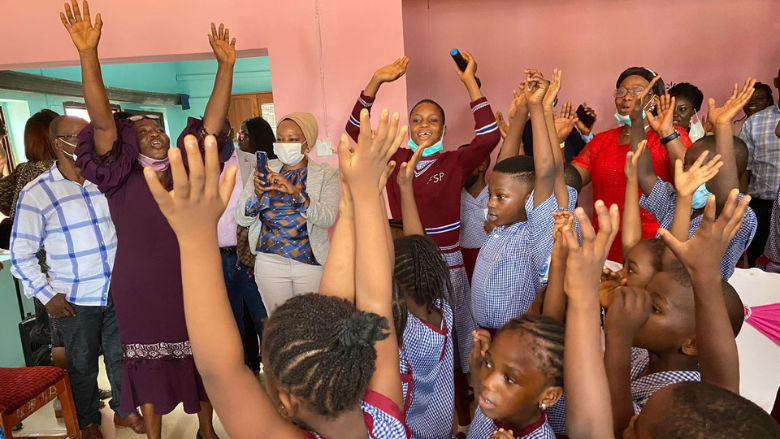
Correcting Course to Accelerate Poverty Reduction
Mari Pangestu, World Bank Managing Director of Development Policy and Partnerships, speaks about how we must respond to current challenges in ways that do not further impoverish the poor today and focus on creating ...
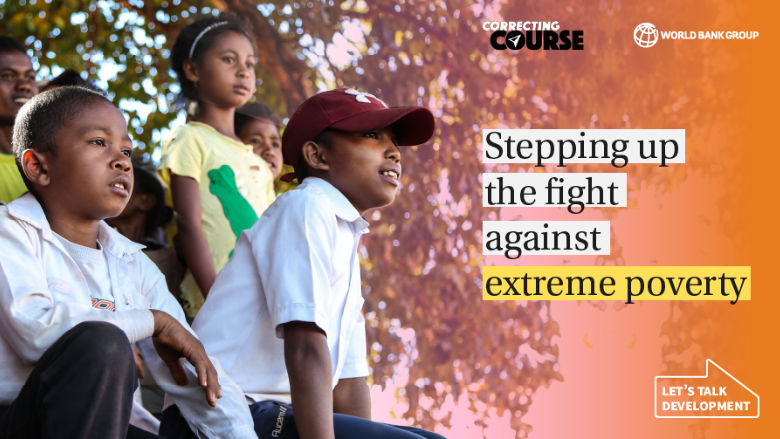
Stepping Up the Fight Against Extreme Poverty
To avert the risk of more backsliding, policymakers must put everything they can into the effort to end extreme poverty.
Additional Resources
This site uses cookies to optimize functionality and give you the best possible experience. If you continue to navigate this website beyond this page, cookies will be placed on your browser. To learn more about cookies, click here .

Goal 1: End poverty in all its forms everywhere
Eradicating extreme poverty for all people everywhere by 2030 is a pivotal goal of the 2030 Agenda for Sustainable Development. Extreme poverty, defined as surviving on less than $2.15 per person per day at 2017 purchasing power parity, has witnessed remarkable declines over recent decades.
However, the emergence of COVID-19 marked a turning point, reversing these gains as the number of individuals living in extreme poverty increased for the first time in a generation by almost 90 million over previous predictions.
Even prior to the pandemic, the momentum of poverty reduction was slowing down. By the end of 2022, nowcasting suggested that 8.4 per cent of the world’s population, or as many as 670 million people, could still be living in extreme poverty. This setback effectively erased approximately three years of progress in poverty alleviation.
If current patterns persist, an estimated 7% of the global population – around 575 million people – could still find themselves trapped in extreme poverty by 2030, with a significant concentration in sub-Saharan Africa.
A shocking revelation is the resurgence of hunger levels to those last observed in 2005. Equally concerning is the persistent increase in food prices across a larger number of countries compared to the period from 2015 to 2019. This dual challenge of poverty and food security poses a critical global concern.
Why is there so much poverty
Poverty has many dimensions, but its causes include unemployment, social exclusion, and high vulnerability of certain populations to disasters, diseases and other phenomena which prevent them from being productive.
Why should I care about other people’s economic situation?
There are many reasons, but in short, because as human beings, our well- being is linked to each other. Growing inequality is detrimental to economic growth and undermines social cohesion, increas- ing political and social tensions and, in some circumstances, driving instability and conflicts.
Why is social protection so important?
Strong social protection systems are essential for mitigating the effects and preventing many people from falling into poverty. The COVID-19 pandemic had both immediate and long-term economic consequences for people across the globe – and despite the expansion of social protection during the COVID-19 crisis, 55 per cent of the world’s population – about 4 billion people – are entirely unprotected.
In response to the cost-of-living crisis, 105 countries and territories announced almost 350 social protection measures between February 2022 and February 2023. Yet 80 per cent of these were short-term in nature, and to achieve the Goals, countries will need to implement nationally appropriate universal and sustainble social protection systems for all.
What can I do about it?
Your active engagement in policymaking can make a difference in addressing poverty. It ensures that your rights are promoted and that your voice is heard, that inter-generational knowledge is shared, and that innovation and critical thinking are encouraged at all ages to support transformational change in people’s lives and communities.
Governments can help create an enabling environment to generate pro- productive employment and job opportunities for the poor and the marginalized.
The private sector has a major role to play in determining whether the growth it creates is inclusive and contributes to poverty reduction. It can promote economic opportunities for the poor.
The contribution of science to end poverty has been significant. For example, it has enabled access to safe drinking water, reduced deaths caused by water-borne diseases, and improved hygiene to reduce health risks related to unsafe drinking water and lack of sanitation.
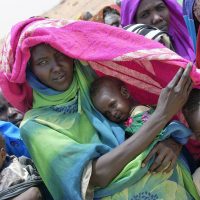
Facts and Figures
Goal 1 targets.
- If current trends continue, 575 million people will still be living in extreme poverty and only one-third of countries will have halved their national poverty levels by 2030.
- Despite the expansion of social protection during the COVID-19 crisis, over 4 billion people remain entirely unprotected. Many of the world’s vulnerable population groups, including the young and the elderly, remain uncovered by statutory social protection programmes.
- The share of government spending on essential services, such as education, health and social protection, is significantly higher in advanced economies than in emerging and developing economies.
- A surge in action and investment to enhance economic opportunities, improve education and extend social protection to all, particularly the most excluded, is crucial to delivering on the central commitment to end poverty and leave no one behind.
- The global poverty headcount ratio at $2.15 is revised slightly up by 0.1 percentage points to 8.5 percent, resulting in a revision in the number of poor people from 648 to 659 million. ( World Bank)
Source: The Sustainable Development Goals Report 2023
1.1 By 2030, eradicate extreme poverty for all people everywhere, currently measured as people living on less than $2.15 a day
1.2 By 2030, reduce at least by half the proportion of men, women and children of all ages living in poverty in all its dimensions according to national definitions
1.3 Implement nationally appropriate social protection systems and measures for all, including floors, and by 2030 achieve substantial coverage of the poor and the vulnerable
1.4 By 2030, ensure that all men and women, in particular the poor and the vulnerable, have equal rights to economic resources, as well as access to basic services, ownership and control over land and other forms of property, inheritance, natural resources, appropriate new technology and financial services, including microfinance
1.5 By 2030, build the resilience of the poor and those in vulnerable situations and reduce their exposure and vulnerability to climate-related extreme events and other economic, social and environmental shocks and disasters
1.A Ensure significant mobilization of resources from a variety of sources, including through enhanced development cooperation, in order to provide adequate and predictable means for developing countries, in particular least developed countries, to implement programmes and policies to end poverty in all its dimensions
1.B Create sound policy frameworks at the national, regional and international levels, based on pro-poor and gender-sensitive development strategies, to support accelerated investment in poverty eradication actions
- United Nations Development Programme
- UN Children’s Fund
- International Monetary Fund
- UN Global Compact
- UN International Strategy for Disaster Reduction
Fast Facts: No Poverty
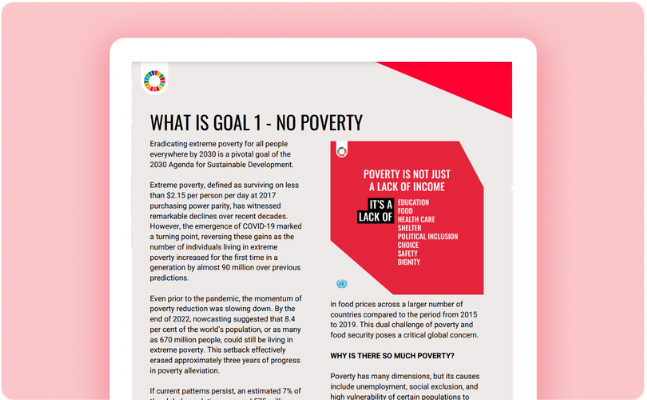
Infographic: No Poverty

Related News

Press Release | UN Conference on Small Island Developing States delivers new era of resilience amidst SIDS’ crippling debt crisis
Yinuo 2024-05-30T19:14:14-04:00 30 May 2024 |
The Fourth United Nations Conference on Small Island Developing States (SIDS4) wrapped up today in Antigua and Barbuda with unanimous support for a bold new 10-year plan of action that will deliver meaningful change for this group of vulnerable countries.
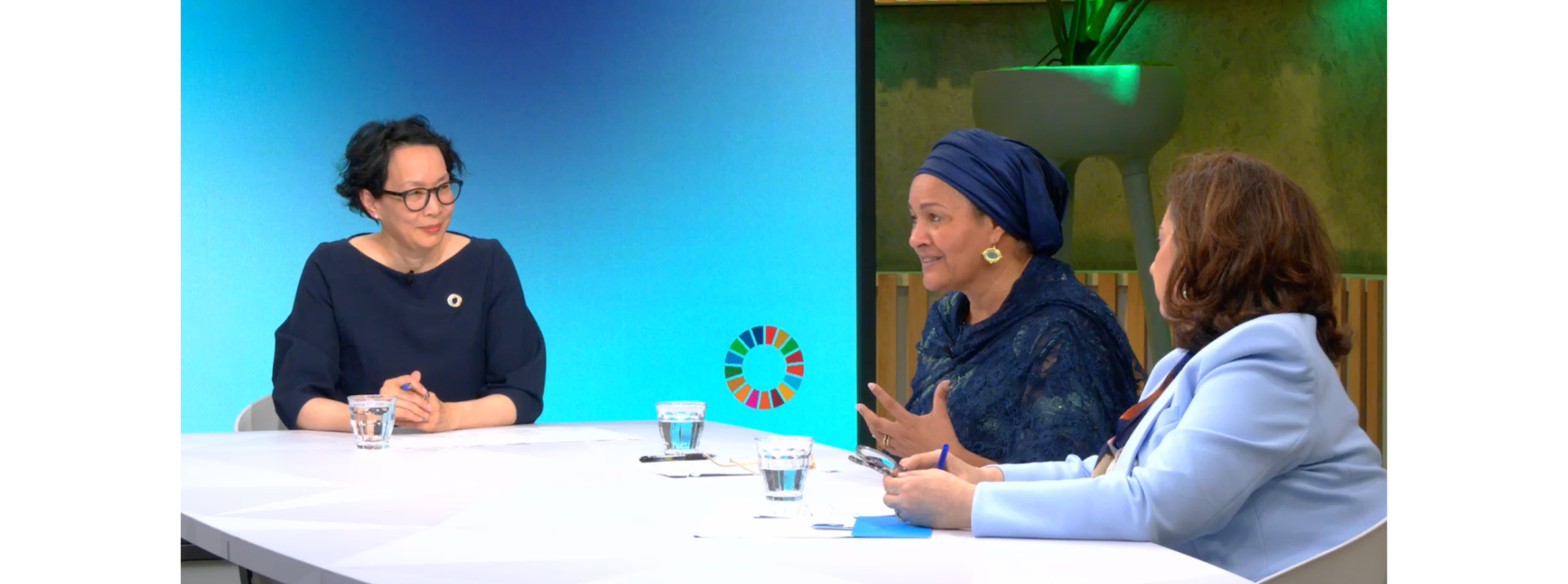
Global We the Women survey reveals women’s resolve to champion rights and representation in government
Yinuo 2024-05-30T16:25:21-04:00 30 May 2024 |
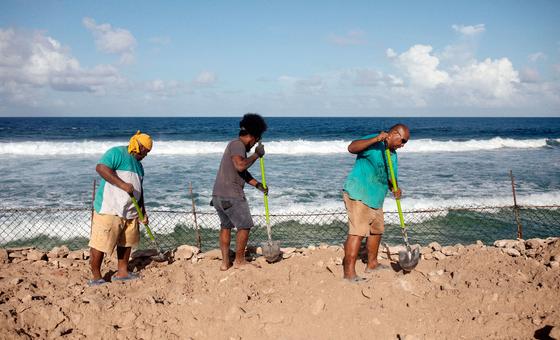
More climate funding needed to ‘transition from rhetoric to decisive action’
dpicampaigns 2024-05-29T08:00:00-04:00 29 May 2024 |
Climate action taken so far to help fund efforts in cash-strapped small island developing States (SIDS) “does not measure up to what has been said” in the wake of COP28 in Dubai last year. Read [...]
Related Videos
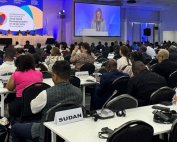
Yinuo 2024-05-30T19:14:14-04:00 30 May 2024 | Featured , Press material |
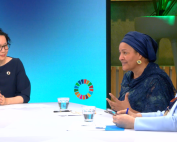
Yinuo 2024-05-30T16:25:21-04:00 30 May 2024 | Featured |

dpicampaigns 2024-05-29T08:00:00-04:00 29 May 2024 | Goal 13: Climate Action , News |
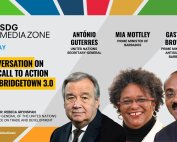
SDG Stimulus for SIDS
Yinuo 2024-05-28T16:45:52-04:00 28 May 2024 | Featured |

5 Essays About Poverty Everyone Should Know
Poverty is one of the driving forces of inequality in the world. Between 1990-2015, much progress was made. The number of people living on less than $1.90 went from 36% to 10%. However, according to the World Bank , the COVID-19 pandemic represents a serious problem that disproportionately impacts the poor. Research released in February of 2020 shows that by 2030, up to ⅔ of the “global extreme poor” will be living in conflict-affected and fragile economies. Poverty will remain a major human rights issue for decades to come. Here are five essays about the issue that everyone should know:
“We need an economic bill of rights” – Martin Luther King Jr.
The Guardian published an abridged version of this essay in 2018, which was originally released in Look magazine just after Dr. King was killed. In this piece, Dr. King explains why an economic bill of rights is necessary. He points out that while mass unemployment within the black community is a “social problem,” it’s a “depression” in the white community. An economic bill of rights would give a job to everyone who wants one and who can work. It would also give an income to those who can’t work. Dr. King affirms his commitment to non-violence. He’s fully aware that tensions are high. He quotes a spiritual, writing “timing is winding up.” Even while the nation progresses, poverty is getting worse.
This essay was reprinted and abridged in The Guardian in an arrangement with The Heirs to the Estate of Martin Luther King. Jr. The most visible representative of the Civil Rights Movement beginning in 1955, Dr. King was assassinated in 1968. His essays and speeches remain timely.
“How Poverty Can Follow Children Into Adulthood” – Priyanka Boghani
This article is from 2017, but it’s more relevant than ever because it was written when 2012 was the worst economic crisis since the Great Depression. That’s no longer the case. In 2012, around ¼ American children were in poverty. Five years later, children were still more likely than adults to be poor. This is especially true for children of colour. Consequences of poverty include anxiety, hunger, and homelessness. This essay also looks at the long-term consequences that come from growing up in poverty. A child can develop health problems that affect them in adulthood. Poverty can also harm a child’s brain development. Being aware of how poverty affects children and follows them into adulthood is essential as the world deals with the economic fallout from the pandemic.
Priyanka Boghani is a journalist at PBS Frontline. She focuses on U.S. foreign policy, humanitarian crises, and conflicts in the Middle East. She also assists in managing Frontline’s social accounts.
“5 Reasons COVID-19 Will Impact the Fight to End Extreme Poverty” – Leah Rodriguez
For decades, the UN has attempted to end extreme poverty. In the face of the novel coronavirus outbreak, new challenges threaten the fight against poverty. In this essay, Dr. Natalie Linos, a Harvard social epidemiologist, urges the world to have a “social conversation” about how the disease impacts poverty and inequality. If nothing is done, it’s unlikely that the UN will meet its Global Goals by 2030. Poverty and COVID-19 intersect in five key ways. For one, low-income people are more vulnerable to disease. They also don’t have equal access to healthcare or job stability. This piece provides a clear, concise summary of why this outbreak is especially concerning for the global poor.
Leah Rodriguez’s writing at Global Citizen focuses on women, girls, water, and sanitation. She’s also worked as a web producer and homepage editor for New York Magazine’s The Cut.
“Climate apartheid”: World’s poor to suffer most from disasters” – Al Jazeera and news Agencies
The consequences of climate change are well-known to experts like Philip Alston, the special rapporteur on extreme poverty and human rights. In 2019, he submitted a report to the UN Human Rights Council sounding the alarm on how climate change will devastate the poor. While the wealthy will be able to pay their way out of devastation, the poor will not. This will end up creating a “climate apartheid.” Alston states that if climate change isn’t addressed, it will undo the last five decades of progress in poverty education, as well as global health and development .
“Nickel and Dimed: On (not) getting by in America” – Barbara Ehrenreich
In this excerpt from her book Nickel and Dimed, Ehrenreich describes her experience choosing to live undercover as an “unskilled worker” in the US. She wanted to investigate the impact the 1996 welfare reform act had on the working poor. Released in 2001, the events take place between the spring of 1998 and the summer of 2000. Ehrenreich decided to live in a town close to her “real life” and finds a place to live and a job. She has her eyes opened to the challenges and “special costs” of being poor. In 2019, The Guardian ranked the book 13th on their list of 100 best books of the 21st century.
Barbara Ehrenreich is the author of 21 books and an activist. She’s worked as an award-winning columnist and essayist.
You may also like

16 Inspiring Civil Rights Leaders You Should Know

15 Trusted Charities Fighting for Housing Rights

15 Examples of Gender Inequality in Everyday Life

11 Approaches to Alleviate World Hunger

15 Facts About Malala Yousafzai

12 Ways Poverty Affects Society

15 Great Charities to Donate to in 2024

15 Quotes Exposing Injustice in Society

14 Trusted Charities Helping Civilians in Palestine

The Great Migration: History, Causes and Facts

Social Change 101: Meaning, Examples, Learning Opportunities

Rosa Parks: Biography, Quotes, Impact
About the author, emmaline soken-huberty.
Emmaline Soken-Huberty is a freelance writer based in Portland, Oregon. She started to become interested in human rights while attending college, eventually getting a concentration in human rights and humanitarianism. LGBTQ+ rights, women’s rights, and climate change are of special concern to her. In her spare time, she can be found reading or enjoying Oregon’s natural beauty with her husband and dog.
Poverty - List of Free Essay Examples And Topic Ideas
Poverty, a state of deprivation of basic human needs and economic opportunities, is a pervasive issue across the globe. Essays could explore the systemic causes of poverty, its impact on individuals and communities, and the various strategies employed to alleviate poverty. Additionally, discussions might delve into the role of international aid, the impact of globalization, and the ethical responsibilities of affluent individuals and nations toward poverty reduction. A substantial compilation of free essay instances related to Poverty you can find at PapersOwl Website. You can use our samples for inspiration to write your own essay, research paper, or just to explore a new topic for yourself.
Poverty and Drug Abuse Addiction
One popular stereotype associated with drug use is that it is rampant among the poor. However, this is not entirely true since insufficient money linked with the poor cannot probably sustain drug use. The link between the two factors is multifaceted, and the connectedness of poverty is complex. Poverty entails unstable family and interpersonal associations, low-skilled jobs and low status, high arrest degrees, illegitimacy, school dropping out, deprived physical health, high mental conditions, and high mortality rates. Such factors resemble […]
Changing the Face of Poverty Summary
In Changing the Face of Poverty the author, Diana George, begins with her annual food drive at St. Vincent de Paul, and every day she receives bills and catalogs with appeals like the Navajo Health Foundation, little Brothers, and many others. In those was Habitat for Humanity. As a member of this club, I know the duties and responsibility towards this organization. George states that Habitat for Humanity is not as helpful as it seems. She says that the organization […]
Racism in Criminal Justice System
Scott Woods once said, The problem is that white people see racism as conscious hate, when racism is bigger than that. Racism is a complex system of social and political levers and pulleys set up generations ago to continue working on the behalf of whites at other people's expense, whether whites know/like it or not. Racism is an insidious cultural disease. It is so insidious that it doesn't care if you are a white person who likes black people; it's […]
We will write an essay sample crafted to your needs.
Impact of Poverty on the Society
This is a very challenging question because nearly every ""pressing problem or social issue"" has underlying factors and historical influences. So I will try to explain my understanding of these topics. There are two important lenses from which to consider this issue; first, from the individual circumstance and second, from specific community conditions. The inability of individuals to earn enough money to afford to meet their basic needs and maintain a healthy lifestyle is, in my opinion, the most pressing […]
Poverty in the United States
Poverty is a major issue in our world today, it is when people are not able to afford a minimum standard of living to survive. Poverty is the removal of financial stability to afford necessities. Bill Fay, veteran journalist defined poverty as a pervasive human condition of being unable to obtain or provide a standard level of food, water, and shelter. In 2015, a study was done and reported that 60% of people will experience at least 1 year of […]
Unemployment a Major Cause of Homelessness
Homelessness or known as extreme poverty can be interpreted as a circumstance when people have no place to stay with the result that they end up live in the street, under the bridge even at the side of the river. There are 3.5 million Americans are homeless each year. Of these, more than 1 million are children and on any given night, more than 300,000 children are homeless. They who do not have an occupation are the one that is […]
Breaking the Poverty Trap
One of the reasons the rich get richer, and the poor get poorer, is because of the lack of not knowing and ignorance hindering half the world, allowing the cycle of poverty to continue. Poverty trap is as a spiraling mechanism, that forces people to remain poor binding many to no hope of escaping. The poverty trap has been an ongoing cycle within generations even those close to me, that has tremendously taken a negative toll on society and my […]
Childhood Poverty
Abstract Poverty is viewed throughout the world as a large social problem that continues to advance with time. Since 1960, poverty has continued to flourish into a problem that has affected a large majority of the population, including our children. Childhood poverty affects the psychological and biological development, as well as three main levels of social systems: micro, mezzo and macro. Even though there has been active research on poverty, generational poverty and childhood poverty, no active changes have been […]
Homelessness in the United States
Homelessness is a social problem that has long plagued the United States and surrounding Countries for centuries. It is an economic and social problem that has affected people from all walks of life, including children, families, veterans, and the elderly. Kilgore (2018). States homelessness is believed to have affected an estimated amount of 2.5-3.5 million people each year in the United States alone. Recent evidence suggests economic conditions have increased the number of people affected by homelessness in the United […]
Poverty in Developing Countries
Introduction A. (Opening Device) How many of you ever had to think or worry about your next meal? Most of us, we don't have to think about that, we don't think about where we having that meal. But in developing countries people have to think about everything they do in daily life, The goal for the day is to have meal with family and have a shelter, or to live in a house to hope for better lifestyle. To make […]
Closing the Education Gap by Attacking Poverty Among Children
Looking around the campus of an Ivy League schools, one wonders how students from such diverse backgrounds ultimately wound up at the same place. From having a mother who works in admissions, I grew up hearing that no matter where you came from, your socioeconomic status, and even sometimes your grades, all kids have the potential to attend a prestigious university. However, I find that hard to believe. With a combination of taking this class on homelessness this semester, growing […]
The Patient Protection and Affordable Care Act
Introduction The three main objectives of the Patient Protection and Affordable Care Act, signed in October 2010, include the following: reforming the private insurance market, mainly for individuals and small group purchasers; expanding Medicaid to the working poor, whose maximum income is around 33 percent of the federal poverty level; and altering the way medical decisions are made in the country (Silvers, 2013). These three objectives are primarily determined by private choices rather than government regulation, with the expectation that […]
Financial Education and Poverty
The most pressing social issue that has the most impact on the ability of people to be healthy and economically self-sufficient is financial education. For an individual or family unit to become economically viable, they must be educated in the proper uses of their income. An individual can be gainfully employed and still be in danger of becoming homeless. This occurs when this individual or familial unit exceeds their income through purchases that are not needed. As we approach the […]
The Poverty Among Us
In our current society, poverty is an issue that plagues third world nations. All countries are interwoven with one another because of everyone needing each other for certain resources. When one country is in need, it interrupts a process that all countries have with one another. Poverty is an issue that everyone should pay attention to even if it does not occur where we live or does not affect us directly as much as it does other nations. Not only […]
Effect of Rural-Urban Migation on the Poverty Status of Farming Households in Ogbomoso
CHAPTER ONE INTRODUCTION 1.1 Background of the study Needless to say, poverty is a global problem; however, the menace of poverty is most devastating in the developing countries of the world. Food production has hardly kept pace with population size, and the quantity, as well as quality of health, has also massively deteriorated. According to the World Bank Development Report (2013), about 10.7 percent of the world's population lived below poverty line (US $1.90 a day). Poverty is one of […]
What is Poverty?
Poverty is a pervasive human condition of being unable to obtain or provide a standard level of food, water, and/or shelter (Fay, n.d.). The United States has the highest rate of poverty among wealthy countries. The official poverty line is based on what the federal government considers to be the minimum amount of money required for living at a subsistence level (Kendell, 2018). Sociologists define poverty in two ways: absolute and relative. Absolute poverty is when the household income is […]
Increasing Federal Minimum Wage
The magnitude of the impacts of federal minimum payments has been a typical topic of discussion for years. Economic policymakers and academic researchers base minimum wage discussions in the context of poverty and increasing the wages. However, critics argue that there are many adverse effects on small businesses and the general economy of the country. A rise in the nation payments will have impacts on the economy of the American states in which the increase in minimum wage law is […]
How Poverty Correlates with Non English Speaking American Families
How does poverty affect the people in the United states today? Poverty is currently affecting 16.3 percent of women, 13.8 of men, and 21 percent of all children in America. The highest poverty rate by race is found among Native Americans, which is 27.6 percent. African americans have 26.2 percent poverty and Hispanics having 23.4 percent. How do these families provide for their children and help them succeed if they can barely even pay the bills? Families all over the […]

Poverty and Crime
Poverty isn't the 'mother of crime.' However it is one noteworthy benefactor. Crime exists, since individuals need something they don't have, and are not willing to comply with the law(s) on the books to get it. What poverty does is, it decreases the things needy individuals have accessible to them, along these lines offering undeniably more things for needy individuals to want—and substantially more inspiration to them to carry out a crime to get it. Along these lines, more needy […]
Poverty in America
Poverty has been a ongoing, social issue that throughout the years has changed its meaning. Poverty is defined lacking basic necessities such as water, food, shelter, wealth, etc… About fifty years ago, war was declared on poverty by President Johnson hoping that it would end, but fast forward today, it is one of the biggest social issues America is dealing with. We don’t really know why poverty is still occurring, because the reasons seem to always be changing. The reasons […]
Poverty Life in the Industrial Age
Tenement Housing Tenement housing was cheap, unsanitary, and extremely crowded. They were placed by factories, so the air and water became very polluted and unsafe because of all the fumes and such from the factory. Most didn’t have indoor plumbing or proper ventilation which caused tons of health issues. At night the only light they had was from the streetlights so of course the only level of the housing that had light was the level that was level with the […]
Economic Inequality and Governmental Responsibility
Ever since the emergence of civilization several hundreds of years ago, social inequality has been a prevalent aspect of many societies across the world. This social structure developed as a result of several factors, amongst them political and economic status in the society. During the early stages of civilization, social and political status was closely related whereby the few powerful political leaders tended to be wealthier than the lesser politically influential majority. Although this dynamic is still prevalent in developing […]
Poverty and Homelessness in America
Poverty and Homelessness in America is a daunting subject which everyone recognizes but do not pay attention to. A homeless person is stereotypically thought to be a person who sleeps at the roadside, begging for money and influenced by drug with dirty ragged clothes and a person who is deprived of basic facilities in his or her life such as; education, electricity, proper clothes, shelter, water with a scarcity of balanced diet is termed as person living under the line […]
Poverty in Haiti: is there a Solution?
Abstract Haiti is a Latin American country that is often ignored. People do not hear much about it, except if a natural disaster such as the earthquake in 2010 happens. It was once the richest colony of the Caribbean and nowadays is known as the poorest country of the Western Hemisphere. Haiti has been facing a cycle of poverty since it became independent. Haiti’s location and deforestation have contributed to make the situation worse. More than half of the population […]
Causes of Poverty
Some causes of poverty in the United States are: unemployment, inflation, poor management of resources, government policies, debt, corruption, extreme weather, lack of control in local food, lack of access to education, mental illness ( lack of proper psychiatric care), diseases, automation, and overpopulation. Poverty is a pervasive human condition of being unable to obtain or provide a standard level of food, water and/or shelter. It exists in every country in varying degrees, and it is unlikely to disappear anytime […]
Affordable Housing Takes on Poverty
Without affordable housing there will be a continuous increase in minorities which also leads to a higher poverty rate. Poverty is the state of being extremely poor. Affordable housing helps decrease poverty in many ways than one. Affordable housing fulfills a human’s basic need for shelter as well as provides privacy for families. Those who receive affordable housing assistance and have children, benefit from better nutrition. Affordable housing would reduce poverty and should be available to those who are in […]
The Impacts of Neoliberalism in the Transition to Democracy in Chile
Compared to other developing countries in Latin America, Chile's political and economic development is distinctive. The country is one of the democratic exceptions, owing to its relatively poor and small population at the time of Spanish colonial rule. The indigenous population is also rather small, and the country has a high degree of ethnic and cultural homogeneity (Hillman and D’Agostino 2011, 67-107). However, today's regime wasn't always democratic. Between 1973 and 1990, Chile was under an authoritarian regime led by […]
Living in Poverty and being Rich
Poverty is such a simple word, but it is so complicated at the same time. The vast majority of individuals will not fully comprehend the real implication of poverty just by reading its literal meaning from the dictionary, but by learning from their surroundings and experiencing hardship itself. Defining poverty can be being poor financially but is also defined as a comfortable way of living as well as spiritually too. What does it mean actually to be poor? Most […]
Poverty and Obesity
It is a known fact that the individual exert influences on the environment and vice versa. However, no man is an Island and as such, these influences reflect through various levels of social and interpersonal relationships. The social environment of the individual include interaction with peers, friend and family members, through such mechanism as role modeling, social support and social norms (Mary, Karen, Ramona, Karen .Annu. Rev. Public Health 2008.Creating Healthy food and Eating Environments, para 2). The physical environment […]
A Problem Child Poverty and Effects on Education
“The impact of poverty on a child’s academic achievement is significant and starts early,” – Jonah Edelman, co-founder and chief executive officer of Stand for Children (Taylor, 2017). According to the U.S. Census Bureau in 2015, around 20 percent of children in the U.S. lived in poverty (Taylor, 2017). Rather than focusing all our time, attention, and resources on rewriting standards and adding higher stakes standardized tests, are we missing a larger looming issue? Studies have shown that student poverty […]
Related topic
Additional example essays.
- Analysis of "The True Cost" Documentary
- War On Drugs and Mass Incarceration
- Solution of Child Labor Problem
- College May Not Be Worth It Anymore By Ellen Ruppel Shell
- Socioautobiography Choices and Experiences Growing up
- A Class Divided
- Gender Inequality in Education
- Racism in A Raisin in the Sun
- Mental Illness and Gun Control
- Dogs Are Better Than Cats Essay
- Personal Philosophy of Leadership
- Personal Narrative: My Family Genogram
Essay About Poverty It has existed for many years and still exists today, growing and intensifying. Today poverty remains one of the biggest. In Singer’s essay “The Solution to World poverty,” he suggests the Americans should donate all their money that is not required for necessities to help feed those that are less fortunate. This claim is not true due to the fact that Singer fails to mention how much people struggle and suffer from poverty in America alone, people worked hard for their money; therefore, they deserve to spend their hard-earned money, and how the economy depends on the Americans expenses, so if people don’t spend money on expenses, the economy will crash. Singer begins by comparing Dora, the woman who sells an orphan for a new television set. Singer then introduces Bob and how he chooses to save his expensive Bugatti from a train instead of saving a child’s life, he compares this story to Americans and their lack of donation and aids and how we “too have opportunities to save the lives of children” (2). In his essay, Singer’s aim is to target all Americans, implying that everyone should donate and help. But what he fails to mention is how even in America people also struggle and suffer from poverty. In the journal “Poverty in America: Trends and Explanations,” Hilary W. Hoynes, Marianne E. Page and Ann Huff Stevens state, “The official poverty rate is 12.3 percent, based on the U.S. Census Bureau’s 2017 estimates. That year, an estimated 39.7 million Americans lived in poverty according to the official measure. 18.5 million People reported deep poverty, which means a household income below 50 percent of their 2017 poverty threshold. These individuals represented an estimated 5.7 percent of all Americans and 46.7 percent of those in poverty.” There are so many people in America who are also in need, people that are also suffering. There are without work and without insurance, people whose homes are lose to fires, storms, and bankruptcy. The idea that individuals must help their own first before helping others is reasonable and rational. Though it could be great to help all those in need, American should aid their own first and end poverty in their own country before helping to others for there are times when it is just not possible.
1. Tell Us Your Requirements
2. Pick your perfect writer
3. Get Your Paper and Pay
Hi! I'm Amy, your personal assistant!
Don't know where to start? Give me your paper requirements and I connect you to an academic expert.
short deadlines
100% Plagiarism-Free
Certified writers
Poverty Alleviation and Sustainable Development Essay
- To find inspiration for your paper and overcome writer’s block
- As a source of information (ensure proper referencing)
- As a template for you assignment
Introduction
Causes of poverty, how poverty alleviation may help in achieving sustainable development.
The Millennium Development Goals (MDG), which were set by 189 countries, consisted of global targets aimed at improving livelihoods and eliminating numerous deprivations, among them poverty. In fact, the countries considered poverty as the most serious problem and affirmed their dedication to eradicating extreme poverty and hunger. According to Tagler and Cozzarelli (2013), poverty is an economic condition that is characterized by sustained low levels of income. The status affects access to basic services of education, health, food, and shelter. The research focuses on the causes of poverty and the benefits of poverty alleviation in achieving sustainable development.
Poverty is a long-term consequence of economic, social, and political failures. According to Williams (2013), an author with ‘The Borgen Project (NGO)’, causes of poverty are categorized into four major categories. One of the causes of poverty is discrimination and social inequality. Levels of inequalities in income distribution, access to basic amenities, legal structures, and information lead to serious economic disparities that subject victims to poverty. Additionally, Burton and Development Programme United Nations (2005) consider war and political instability as a leading cause of poverty. Political instabilities and wars affect insecurities and social and legal structures responsible for enhancing equitable distribution of resources and wealth. Ineffective policies expose people to exploitation and corruption. Sociopolitical failures affect literacy levels and access to information, which is vital in promoting self-actualization. Similarly, geopolitical histories and locations are other major causes of poverty. At-risk countries exposed to frequent natural catastrophes experience serious challenges in sustaining infrastructure development, effective information communications, and delivery of communal amenities. Additionally, historical political conflicts led to the depletion of vital resources from colonies of historic superpowers. The last cause of poverty is the national debt accrued from local and international loans. The loans increase financial constraints in the affected countries and deter the implementation of development initiatives that empower citizens.
The Commission on Human Rights considers poverty eradication as an effective strategy for combating social and economic inequalities. There have been different poverty alleviation measures, including food distribution, the building of infrastructures and schools, intervening in politically unstable countries, and providing financial support, among others. Lloyd-Jones and Rakodi (2013) argue that poverty alleviation programs contribute greatly to achieving sustainable development. One of the benefits of poverty alleviation programs in achieving sustainable development is in empowering the poor. Provision of education, electricity, stable political structures and favorable market conditions are some of the poverty alleviation strategies that empower poor people. The other sustainable development target in poverty alleviation is introducing equality and non-discrimination measures. These initiatives ensure that affected persons are self-sufficient. Equality and accountability are also assured in poverty alleviation when funding goes from donors to governments yet to streamline local structures. Additionally, civil and social rights are streamlined through poverty alleviation strategies.
Poverty is one of the most challenging issues among global institutions. The causes of poverty have been associated with political failures, historical implications, and infringed human rights. The research demonstrates the need to address poverty in order to uphold human rights for the welfare of global sustained developments. Whereas human rights are not rigid, poverty needs a flexible platform to integrate affected people while targeting corrupt and compromised officials in the global governments.
Burton, I., & Development Programme United Nations. (2005). Adaptation policy frameworks for climate change: developing strategies, policies and measures. Cambridge, MA: Cambridge University Press.
Lloyd-Jones, T., & Rakodi, C. (2013). Urban livelihoods: A people-centred approach to reducing poverty . Ney York, NY: Routledge.
Tagler, M. J., & Cozzarelli, C. (2013). Feelings toward the poor and beliefs about the causes of poverty: The role of affective-cognitive consistency in help-giving. The Journal of psychology , 147 (6), 517-539.
Williams, D. (2013). What are Causes of Global Poverty? Web.
- "Halving Global Poverty" by Besley and Burges
- Poverty, Government and Unequal Distribution of Wealth in Philippines
- Poverty in Urban Areas
- Intro to Sociology: Poverty
- Central Outreach and Advocacy Center
- Thesis Statement on Dumpster Diving
- Urban Planning Optimization and Homelessness
- Chad-Cameroon Pipeline Project
- Chicago (A-D)
- Chicago (N-B)
IvyPanda. (2022, January 25). Poverty Alleviation and Sustainable Development. https://ivypanda.com/essays/poverty-alleviation-and-sustainable-development/
"Poverty Alleviation and Sustainable Development." IvyPanda , 25 Jan. 2022, ivypanda.com/essays/poverty-alleviation-and-sustainable-development/.
IvyPanda . (2022) 'Poverty Alleviation and Sustainable Development'. 25 January.
IvyPanda . 2022. "Poverty Alleviation and Sustainable Development." January 25, 2022. https://ivypanda.com/essays/poverty-alleviation-and-sustainable-development/.
1. IvyPanda . "Poverty Alleviation and Sustainable Development." January 25, 2022. https://ivypanda.com/essays/poverty-alleviation-and-sustainable-development/.
Bibliography
IvyPanda . "Poverty Alleviation and Sustainable Development." January 25, 2022. https://ivypanda.com/essays/poverty-alleviation-and-sustainable-development/.
Home — Essay Samples — Social Issues — Homelessness — Introduction to Poverty: Causes, Effects, and Management
Introduction to Poverty: Causes, Effects, and Management
- Categories: Homelessness Hunger Poverty in America
About this sample

Words: 2156 |
11 min read
Published: May 17, 2022
Words: 2156 | Pages: 5 | 11 min read
Table of contents
Introduction, global trends of poverty, causes of poverty, effects/impacts of poverty on the family, management and control, poverty in europe, poverty in africa, poverty in kenya, lack/poor education, feminization, low economic growth performance, divorce/separation, stress/depression, emotional and physical wellbeing of the children, the governments should come up with initiatives to alleviate poverty, educating the families and equipping them with technical skills.

Cite this Essay
Let us write you an essay from scratch
- 450+ experts on 30 subjects ready to help
- Custom essay delivered in as few as 3 hours
Get high-quality help

Verified writer
- Expert in: Social Issues

+ 120 experts online
By clicking “Check Writers’ Offers”, you agree to our terms of service and privacy policy . We’ll occasionally send you promo and account related email
No need to pay just yet!
Related Essays
2 pages / 732 words
2 pages / 937 words
3 pages / 1403 words
2 pages / 695 words
Remember! This is just a sample.
You can get your custom paper by one of our expert writers.
121 writers online
Still can’t find what you need?
Browse our vast selection of original essay samples, each expertly formatted and styled
Related Essays on Homelessness
Imagine walking down the street and seeing a person huddled under a blanket, with a cardboard sign asking for help. What would you do? Would you walk past them, pretending not to see their suffering? Or would you stop and offer [...]
Homelessness is a pressing issue that continues to plague societies around the world, prompting debates on how best to address the needs of those without stable housing. From individuals living on the streets to families [...]
Social work is a profession that is dedicated to helping individuals, families, and communities navigate through challenging circumstances and improve their overall well-being. It requires a unique combination of empathy, [...]
Homelessness is a pressing issue that affects millions of individuals worldwide. It is a complex problem that arises from a variety of factors, including economic hardship, lack of affordable housing, mental illness, substance [...]
Homelessness alone is a very rampant and unfortunate problem in the united states, as of right now 564,708 people in the United States are homeless and of that 206,286 thousand are families (Snapshot of Homelessness, 2016). At [...]
Homelessness is a multifaceted social issue that plagues societies around the world. By employing the social pathology model, we can delve into the intricate web of factors that contribute to homelessness and gain a deeper [...]
Related Topics
By clicking “Send”, you agree to our Terms of service and Privacy statement . We will occasionally send you account related emails.
Where do you want us to send this sample?
By clicking “Continue”, you agree to our terms of service and privacy policy.
Be careful. This essay is not unique
This essay was donated by a student and is likely to have been used and submitted before
Download this Sample
Free samples may contain mistakes and not unique parts
Sorry, we could not paraphrase this essay. Our professional writers can rewrite it and get you a unique paper.
Please check your inbox.
We can write you a custom essay that will follow your exact instructions and meet the deadlines. Let's fix your grades together!
Get Your Personalized Essay in 3 Hours or Less!
We use cookies to personalyze your web-site experience. By continuing we’ll assume you board with our cookie policy .
- Instructions Followed To The Letter
- Deadlines Met At Every Stage
- Unique And Plagiarism Free
- Search Search Please fill out this field.
What Is Poverty?
Understanding poverty, aspects of poverty, discrimination and poverty, how poverty is measured, how to reduce poverty, the bottom line, what is poverty meaning, causes, and how to measure.
James Chen, CMT is an expert trader, investment adviser, and global market strategist.
:max_bytes(150000):strip_icc():format(webp)/photo__james_chen-5bfc26144cedfd0026c00af8.jpeg)
Thomas J Catalano is a CFP and Registered Investment Adviser with the state of South Carolina, where he launched his own financial advisory firm in 2018. Thomas' experience gives him expertise in a variety of areas including investments, retirement, insurance, and financial planning.
:max_bytes(150000):strip_icc():format(webp)/P2-ThomasCatalano-d5607267f385443798ae950ece178afd.jpg)
- A History of Income Inequality in the United States
- How Education and Training Affect the Economy
- Work Experience vs. Education: What's the Difference?
- Unemployment Rate by State
- Can a Family Survive on the U.S. Minimum Wage
- The Economics of Labor Mobility
- Forced Retirement
- Predatory Lending
- Underbanked
- Underinsurance
- Which Income Class Are You?
- Definition of Poverty CURRENT ARTICLE
- Gini Index vs. Palma Ratio
- Lorenz Curve
- Human Development Index
- Criticism of the Human Development Index
- The Poverty Trap
- Conflict Theory
- The Disappearing Middle Class
- Hollowing Out
- Social Justice
- Economic Justice
- Welfare Economics
- Egalitarianism
- The Nordic Model
- Equity vs. Efficiency
- Martin Luther King's Economic Message
Investopedia / Laura Porter
The term poverty refers to the state or condition in which people or communities lack the financial resources and other essentials for a minimum standard of living . As such, they cannot meet their basic human needs.
People and families who live in poverty may go without proper housing, clean water, healthy food, and medical attention. Each nation may have its own criteria for determining the poverty line and counting how many of its people live in poverty.
Poverty is a socioeconomic condition that is the result of multiple factors—not just income. These factors include race, sexual identity, sexual orientation, and access to education, among others.
Key Takeaways
- Poverty is a state or condition in which a person or community lacks the financial resources and other essentials for a minimum standard of living.
- Poverty-stricken people and families might go without proper housing, clean water, healthy food, and medical attention.
- Poverty is an individual concern as well as a broader social problem.
- Welfare programs are used by governments to help alleviate poverty.
- Poverty is the result of a confluence of factors, and not determined solely by income.
Poverty refers to the lack of adequate financial resources such that individuals, households, and entire communities don't have the means to subsist or to acquire the basic necessities for a flourishing life. This absence of means can result in struggles to obtain food, clothing, shelter, and medicine.
Poverty is both an individual concern as well as a broader social problem. At the individual or household level, not being able to make ends meet can lead to a range of social, physical, and mental issues. At the societal level, high poverty rates can be a damper on economic growth and be associated with problems like crime, unemployment , urban decay, poor education, and poor public health.
Governments often put social welfare programs in place to help lift individuals, families, and communities out of poverty. Some countries have stronger welfare states (social safety nets) than others. For instance, the United States tends to be much more individualistic and has relatively limited welfare programs. European countries, in comparison, have a much broader range of welfare programs and supports for those in need.
37.9 Million
According to the latest census, the number of people in the U.S. who lived in poverty in 2022, or 11.5% of the nation's population.
Poverty in the U.S.
Poverty status in the U.S. is assigned to people whose income falls under a certain threshold, which is set by the Department of Health and Human Services (HHS) . U.S. poverty rates, or the percentage of the U.S. population living in poverty, are calculated by the U.S. Census Bureau .
When measuring poverty, the Census Bureau excludes the following people:
- Institutionalized people
- People living in military quarters
- People living in college dormitories
- Individuals under the age of 15
U.S. Poverty Thresholds
Each year, the Census Bureau updates its poverty threshold statistics. The table below shows the 2022 income thresholds for those in poverty. Each column represents the number of people living in a household under the age of 18.
- The poverty income threshold for a family of four with two children under the age of 18 was $29,678 per year.
- For two people over age 65 with no children under 18, the poverty threshold was $17,689 per year.
Poverty thresholds, as well as the number of children under the age of 18 in a home, are important because they help determine how government aid such as food assistance and medical care should be allocated. The measurement for those in poverty uses pretax income or income before taxes are taken out by the Internal Revenue Service (IRS) .
Global Poverty
Poverty has decreased in developed countries since the Industrial Revolution . Increased production reduced the cost of goods, making them more affordable, while advancements in agriculture increased crop yields , as well as food production.
The international poverty line is a monetary threshold under which an individual is considered to be living in poverty. This figure is calculated by taking the poverty threshold from each country—given the value of the goods needed to sustain one adult—and converting it into U.S. dollars. The current international poverty line is $2.15 per day.
Many people around the globe still struggle to make ends meet. According to the World Bank , an estimated 700.6 million people lived in extreme poverty in September 2023.
It's estimated that more than 40% of the world's population lives in poverty, with the U.S. scoring the worst among developed nations. According to a report published in the journal Frontiers in Public Health, communities of color are more susceptible to poverty because of "racist notions of racial inferiority and frequent denial of the structural forms of racism and classism" globally and within the U.S.
COVID-19 was responsible for plunging roughly 100 million more people into extreme poverty, according to the World Bank.
Poverty and Children
The impact of poverty on children is substantial. Children who grow up in poverty typically suffer from severe and frequent health problems. Infants born into poverty have an increased chance of low birth weight, which can lead to physical and mental disabilities.
In certain developing countries, poverty-stricken infants are nine times more likely to die in their first month compared to babies born in high-income countries. Those who live may have hearing and vision problems.
Children in poverty tend to miss more school due to sickness and endure more stress at home. Homelessness is particularly hard on children because they often have little to no access to healthcare and lack proper nutrition, which often results in frequent health issues.
What Causes Poverty?
Poverty is a difficult cycle to break and can pass from one generation to the next. It is often determined by socioeconomic status, ethnicity, gender, and geography.
Many people are born into poverty and have little hope of overcoming it. Others may fall into poverty because of negative economic conditions, natural disasters , or surging living costs, as well as drug addiction, depression, and mental health issues.
Other root causes of poverty include:
- Limited to no job growth
- Poor infrastructure
- Conflict and war
- High cost of living
- Social barriers
- Lack of government support
For those able to move out of poverty, progress is often temporary. Economic shocks, food insecurity , and climate change threaten their gains and may force them back into poverty.
Typical consequences of poverty include alcohol and substance abuse, little to no access to education, poor housing and living conditions, and increased levels of disease. Access to good schools, healthcare, electricity, clean drinking water, and other critical services remains elusive for many in poverty.
Heightened poverty is likely to cause increased tensions in society as inequality increases and, in turn, lead to rising crime rates.
As noted above, poverty isn't simply related to income levels. In fact, there are a number of factors that can push people to or below the poverty line. Discrimination is just one of them.
In some cases, governments may pass certain laws and regulations that prevent certain individuals or communities from accessing services, such as healthcare, education, or social services. These people may also be denied access to the labor market or housing, which can prevent them from reaching a suitable standard of living. In other cases, deep-rooted societal beliefs can isolate individuals, families, and entire communities.
Some of the most common groups of people who may experience this type of discrimination include:
- People living with HIV/AIDS
- Black, Indigenous, and People of Color
- Women, including single mothers
- Members of the LGBTQ+ community
According to the most recent statistics from the Williams Institute at the UCLA School of Law, poverty rates among members of the LGBTQ+ community have dropped since the COVID-19 pandemic. But rates are still higher than for those who don't identify as LGBTQ+. The most recent report showed that:
- 17% of LGBT people in the U.S. lived in poverty in 2021 compared to 12% in non-LGBT communities
- 21% of transgender people lived in poverty in the U.S. in 2021 compared to 20% of cisgender bisexual women
- 26% of LGBT families with children experienced poverty in 2021
The report also indicated that LGBTQ+ people of color—notably, "Black, Latinx/Hispanic, Native Hawaiian/Pacific Islander (NH/PI), American Indian/Alaskan Native (AI/AN), and Multiracial people"—are more likely to experience poverty compared to White or Asian Americans.
Poverty is commonly measured using income thresholds in many countries. Centralized bodies like the Census Bureau collect data and update the information on an annual basis based on inflation .
This information, which, in the U.S., is reported through the Consumer Price Index for All Urban Consumers (CPI-U) , generally includes income thresholds compiled from different sizes and types of families or households. Each family member in a household that falls under the threshold is considered to be in poverty, according to the Census Bureau.
Certain types of individuals are not included in the count, as their level of poverty cannot be determined. These groups include:
- People within certain group settings like prisons and nursing homes
- Individuals living in military barracks
- Those living in college dorms
- People under the age of 15 whose income cannot be determined
Keep in mind that using income thresholds is just one way that countries measure poverty.
The United Nations and the World Bank are major advocates of reducing world poverty. The World Bank has an ambitious target of reducing poverty to less than 3% of the global population by 2030. Some of the actionable plans to eliminate poverty include the following:
- Installing wells that provide access to clean drinking water
- Educating farmers on how to produce more food
- Constructing shelter for those in need
- Building schools to educate disadvantaged communities
- Providing enhanced access to better healthcare services by building medical clinics and hospitals
For poverty to be eradicated as the World Bank intends, communities, governments, and corporations need to collaborate to implement strategies that improve living conditions for the world’s poor.
Some of these strategies may include boosting socioeconomic conditions, fighting and eliminating systemic racism, establishing minimum wages that align with the cost of living, providing paid leave, and promoting pay equity .
What Countries Have the Highest Poverty Rates?
The countries with the highest poverty rates include South Sudan (82.30%), Equatorial Guinea (76.80%), Madagascar (70.70%), Central African Republic (68.80%), and Burundi (64.09%).
Which States Have the Highest Poverty Rates?
As of 2024, the states with the highest poverty rates were Louisiana (19.60%), Mississippi (19.40%), New Mexico (18.40%), West Virginia (16.80%), and Kentucky (16.50%). The District of Columbia's poverty rate is 16.50%.
Can Poverty Be Solved?
The answer to this question is complicated and nuanced. Social welfare programs and private philanthropy are some avenues through which to provide for those in poverty, along with access to essentials like clean water, good food, and adequate healthcare. However, more is needed. Programs that encourage and help impoverished individuals to obtain skills, jobs, and education are crucial for a longer-term cure.
Poverty is defined as the state or condition where people and communities cannot meet a minimum standard of living because they lack the proper resources . These include (but aren't limited to) financial resources, basic healthcare and education, clean drinking water, and infrastructure.
Living in the socioeconomic condition of poverty is a result of multiple factors such as race, sexual identity, sexual orientation, and access to education, among others.
Organizations such as the United Nations and the World Bank, which believe that poverty will continue to grow well beyond 2030, urge nations to fight it by implementing policies and regulations that can drastically improve the quality of living for all communities.
U.S. Census Bureau. " Poverty in the United States: 2022 ."
U.S. Department of Health & Human Services. " Poverty Guidelines ."
U.S. Census Bureau. " Differences Between Available Surveys & Programs for Poverty ."
U.S. Census Bureau. " How the Census Bureau Measures Poverty ."
U.S. Census Bureau. " Poverty Thresholds ."
U.S. Department of Health & Human Services. " Programs that Use the Poverty Guidelines as a Part of Eligibility Determination ."
The World Bank. " Fact Sheet: An Adjustment to Global Poverty Lines ."
The World Bank. " Global Poverty Monitoring Technical Note: September 2023 Update to the Poverty and Inequality Platform (PIP) ."
Frontiers. " Poverty, Racism, and the Public Health Crisis in America ."
The World Bank. " Poverty ."
National Library of Medicine. " Distribution and Determinants of Low Birth Weight in Developing Countries ."
The World Bank. " A Child Under 15 Dies Every Five Seconds Around the World – UN Report ."
UNICEF. " Levels and Trends in Child Mortality ."
UCLA School of Law Williams Institute. " LGBT Poverty in the United States ."
The World Bank. " Ending Extreme Poverty ."
World Population Review. " Poverty Rate by Country 2024 ."
World Population Review. " Poverty Rate by State 2024 ."
:max_bytes(150000):strip_icc():format(webp)/terms_f_fpl_FINAL-c5159a39c60649f48b47adb308364bf8.jpg)
- Terms of Service
- Editorial Policy
- Privacy Policy
- Your Privacy Choices

By: Joe Hasell , Max Roser , Esteban Ortiz-Ospina and Pablo Arriagada
Global poverty is one of the most pressing problems that the world faces today. The poorest in the world are often undernourished , without access to basic services such as electricity and safe drinking water ; they have less access to education , and suffer from much poorer health .
In order to make progress against such poverty in the future, we need to understand poverty around the world today and how it has changed.
On this page you can find all our data, visualizations and writing relating to poverty. This work aims to help you understand the scale of the problem today; where progress has been achieved and where it has not; what can be done to make progress against poverty in the future; and the methods behind the data on which this knowledge is based.
Key Insights on Poverty
Measuring global poverty in an unequal world.
There is no single definition of poverty. Our understanding of the extent of poverty and how it is changing depends on which definition we have in mind.
In particular, richer and poorer countries set very different poverty lines in order to measure poverty in a way that is informative and relevant to the level of incomes of their citizens.
For instance, while in the United States a person is counted as being in poverty if they live on less than roughly $24.55 per day, in Ethiopia the poverty line is set more than 10 times lower – at $2.04 per day. You can read more about how these comparable national poverty lines are calculated in this footnote. 1
To measure poverty globally, however, we need to apply a poverty line that is consistent across countries.
This is the goal of the International Poverty Line of $2.15 per day – shown in red in the chart – which is set by the World Bank and used by the UN to monitor extreme poverty around the world.
We see that, in global terms, this is an extremely low threshold indeed – set to reflect the poverty lines adopted nationally in the world’s poorest countries. It marks an incredibly low standard of living – a level of income much lower than just the cost of a healthy diet .
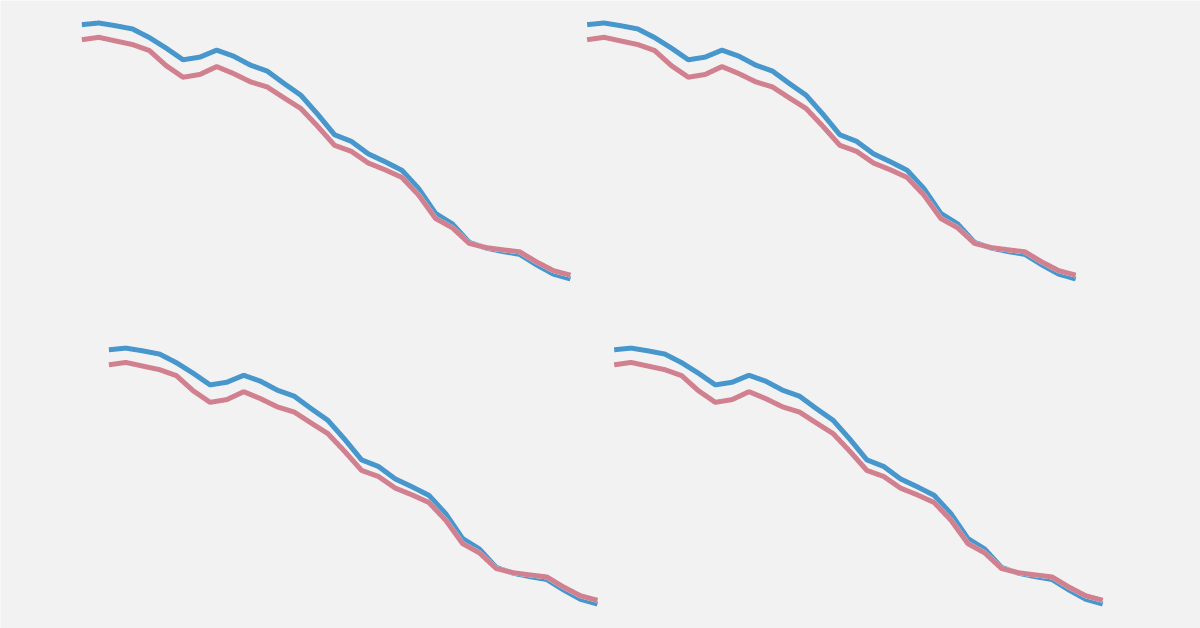
From $1.90 to $2.15 a day: the updated International Poverty Line
What you should know about this data.
- Global poverty data relies on national household surveys that have differences affecting their comparability across countries or over time. Here the data for the US relates to incomes and the data for other countries relates to consumption expenditure. 2
- The poverty lines here are an approximation of national definitions of poverty, made in order to allow comparisons across the countries. 1
- Non-market sources of income, including food grown by subsistence farmers for their own consumption, are taken into account. 3
- Data is measured in 2017 international-$, which means that inflation and differences in the cost of living across countries are taken into account. 4
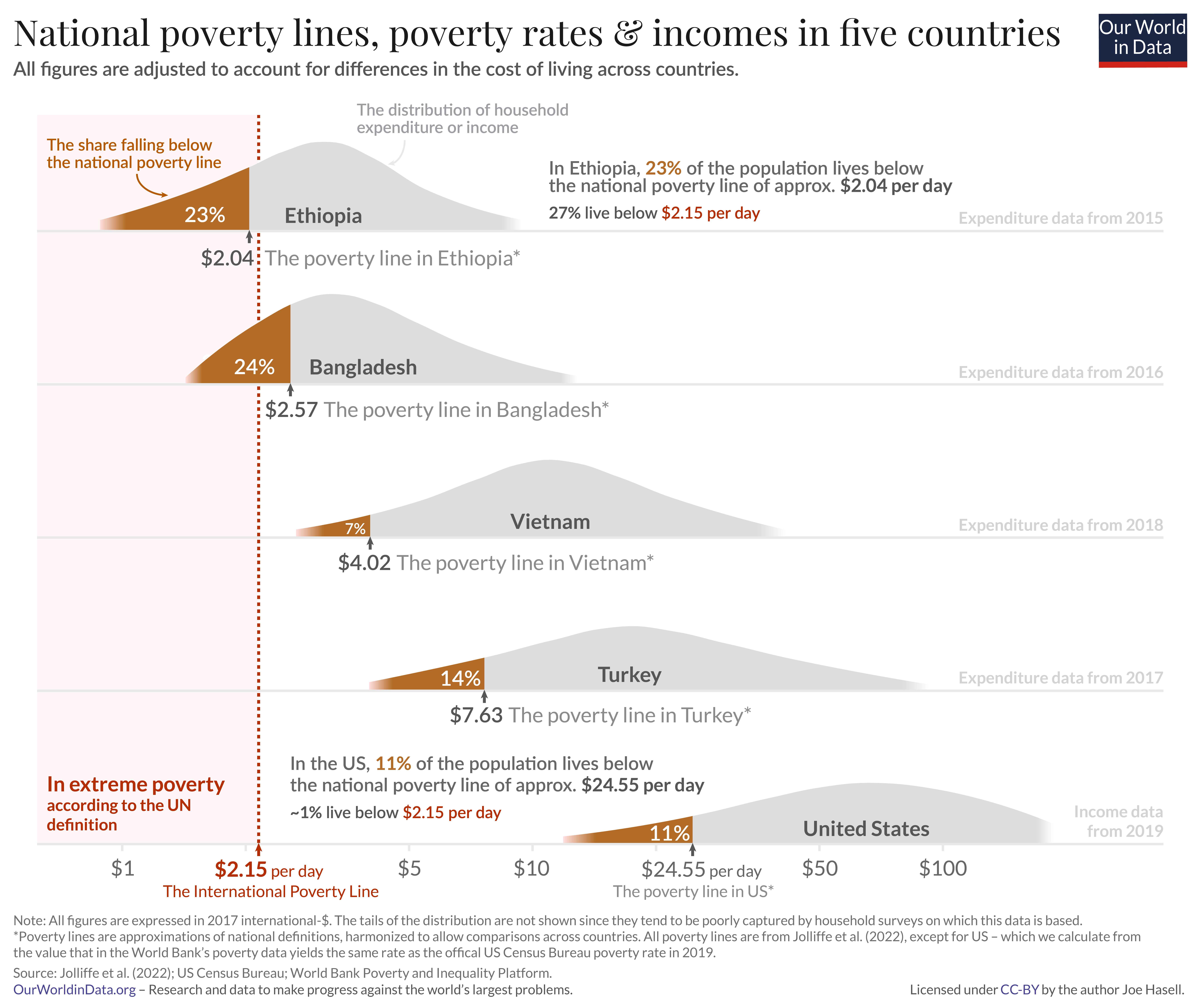
Global extreme poverty declined substantially over the last generation
Over the past generation extreme poverty declined hugely. This is one of the most important ways our world has changed over this time.
There are more than a billion fewer people living below the International Poverty Line of $2.15 per day today than in 1990. On average, the number declined by 47 million every year, or 130,000 people each day. 5
The scale of global poverty today, however, remains vast. The latest global estimates of extreme poverty are for 2019. In that year the World Bank estimates that around 650 million people – roughly one in twelve – were living on less than $2.15 a day.
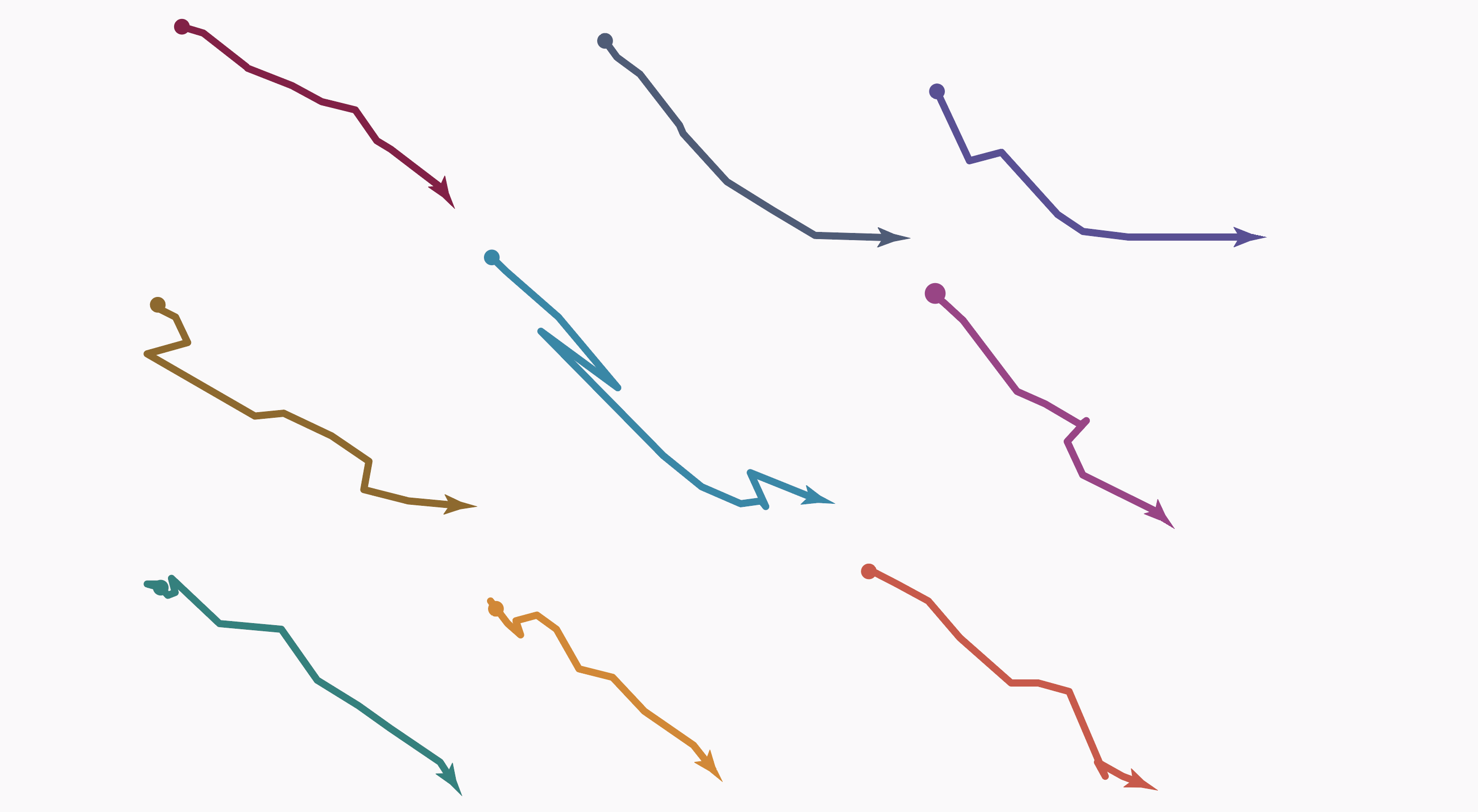
Extreme poverty: how far have we come, how far do we still have to go?
- Extreme poverty here is defined according to the UN’s definition of living on less than $2.15 a day – an extremely low threshold needed to monitor and draw attention to the living conditions of the poorest around the world. Read more in our article, From $1.90 to $2.15 a day: the updated International Poverty Line .
- Global poverty data relies on national household surveys that have differences affecting their comparability across countries or over time. 2
- Surveys are less frequently available in poorer countries and for earlier decades. To produce regional and global poverty estimates, the World Bank collates the closest survey for each country and projects the data forward or backwards to the year being estimated. 6
- Data is measured in 2017 international-$, which means that inflation and differences in the cost of living across countries are taken into account . 4
The pandemic pushed millions into extreme poverty
Official estimates for global poverty over the course of the Coronavirus pandemic are not yet available.
But it is clear that the global recession it brought about has had a terrible impact on the world’s poorest.
Preliminary estimates produced by researchers at the World Bank suggest that the number of people in extreme poverty rose by around 70 million in 2020 – the first substantial rise in a generation – and remains around 70-90 million higher than would have been expected in the pandemic’s absence. On these preliminary estimates, the global extreme poverty rate rose to around 9% in 2020. 7
- Figures for 2020-2022 are preliminary estimates and projections by World Bank researchers, based on economic growth forecasts. The pre-pandemic projection is based on growth forecasts prior to the pandemic. You can read more about this data and the methods behind it in the World Bank’s Poverty and Shared Prosperity 2022 report. 8
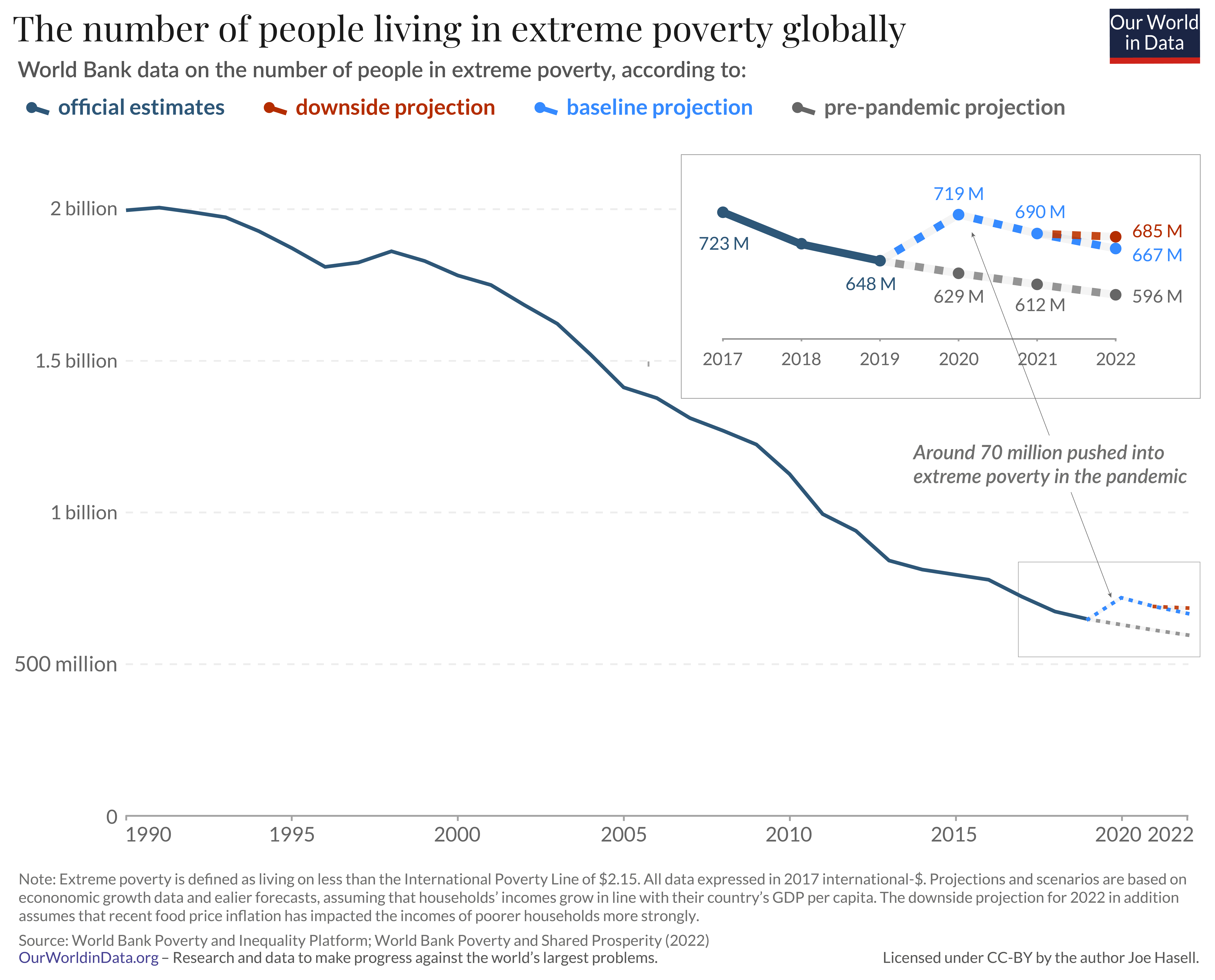
Hundreds of millions will remain in extreme poverty on current trends
Extreme poverty declined during the last generation because the majority of the poorest people on the planet lived in countries with strong economic growth – primarily in Asia.
The majority of the poorest now live in Sub-Saharan Africa, where weaker economic growth and high population growth in many countries has led to a rising number of people living in extreme poverty.
The chart here shows projections of global extreme poverty produced by World Bank researchers based on economic growth forecasts. 9
A very bleak future is ahead of us should such weak economic growth in the world’s poorest countries continue – a future in which extreme poverty is the reality for hundreds of millions for many years to come.
- The extreme poverty estimates and projections shown here relate to a previous release of the World Bank’s poverty and inequality data in which incomes are expressed in 2011 international-$. The World Bank has since updated its methods, and now measures incomes in 2017 international-$. As part of this change, the International Poverty Line used to measure extreme poverty has also been updated: from $1.90 (in 2011 prices) to $2.15 (in 2017 prices). This has had little effect on our overall understanding of poverty and inequality around the world. You can read more about this change and how it affected the World Bank estimates of poverty in our article From $1.90 to $2.15 a day: the updated International Poverty Line .
- Figures for 2018 and beyond are preliminary estimates and projections by Lakner et al. (2022), based on economic growth forecasts. You can read more about this data and the methods behind it in the related blog post. 10
- Data is measured in 2011 international-$, which means that inflation and differences in the cost of living across countries are taken into account. 4
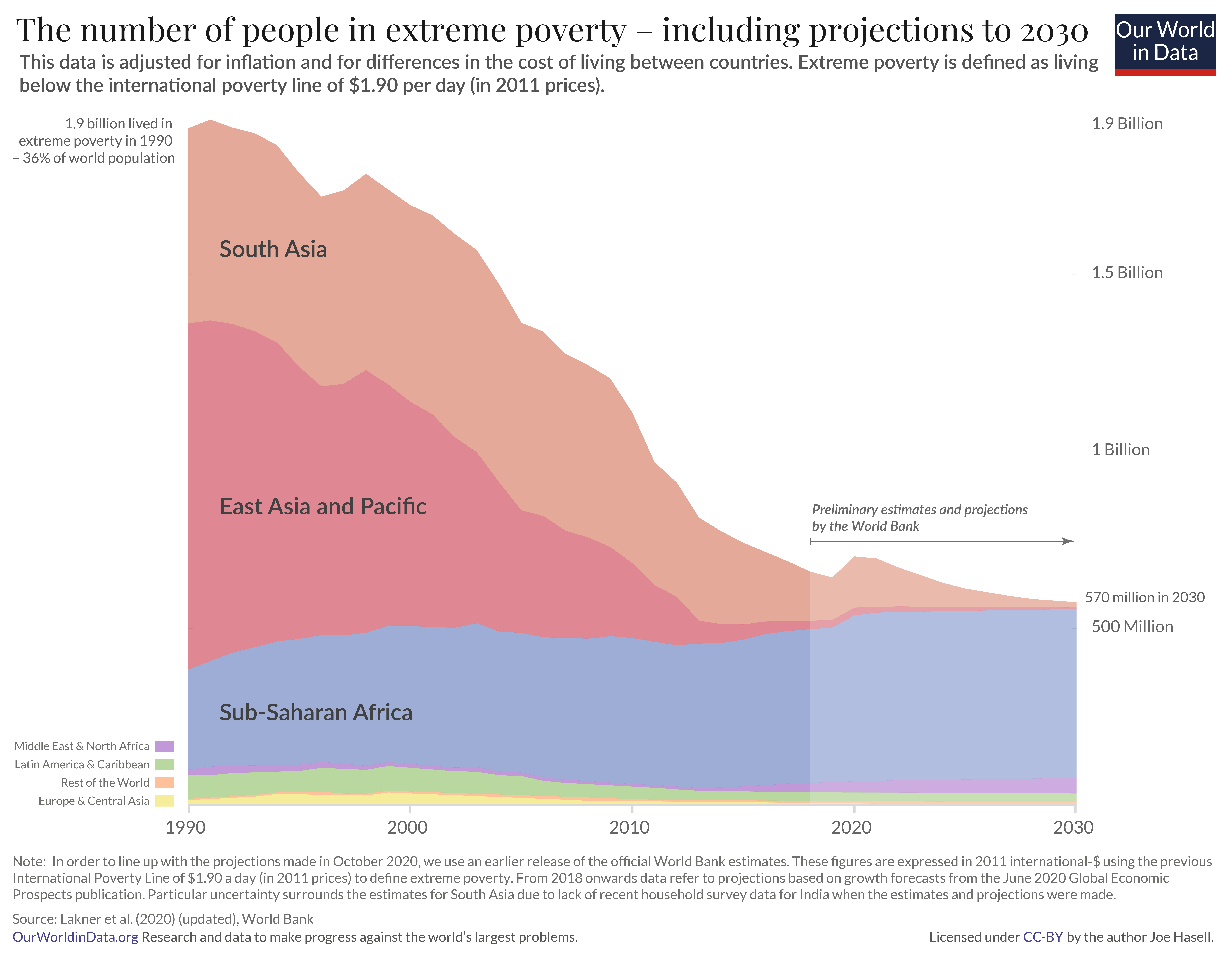
The rapid progress seen in many countries shows an end to poverty is possible
Each of the countries shown in the chart achieved large declines in extreme poverty over the last generation. 11
The fact that rapid progress against poverty has been achieved in many places is one of the most important lessons we can learn from the available data on extreme poverty.
For those who are not aware of such progress – which is the majority of people – it would be easy to make the mistake of believing that poverty is inevitable and that action to tackle poverty is hence doomed to fail.
The huge progress seen in so many places shows that this view is incorrect.
Interactive visualization requires JavaScript.
After 200 years of progress the fight against global poverty is just beginning
Over the past two centuries the world made good progress against extreme poverty. But only very recently has poverty fallen at higher poverty lines.
Global poverty rates at these higher lines remain very high:
- 25% of the world lives on less than $3.65 per day – a poverty line broadly reflective of the lines adopted in lower-middle income countries.
- 47% of the world lives on less than $6.85 per day – a poverty line broadly reflective of the lines adopted in upper-middle income countries.
- 84% live on less than $30 per day – a poverty line broadly reflective of the lines adopted in high income countries. 12
Economic growth over the past two centuries has allowed the majority of the world to leave extreme poverty behind. But by the standards of today’s rich countries, the world remains very poor. If this should change, the world needs to achieve very substantial economic growth further still.
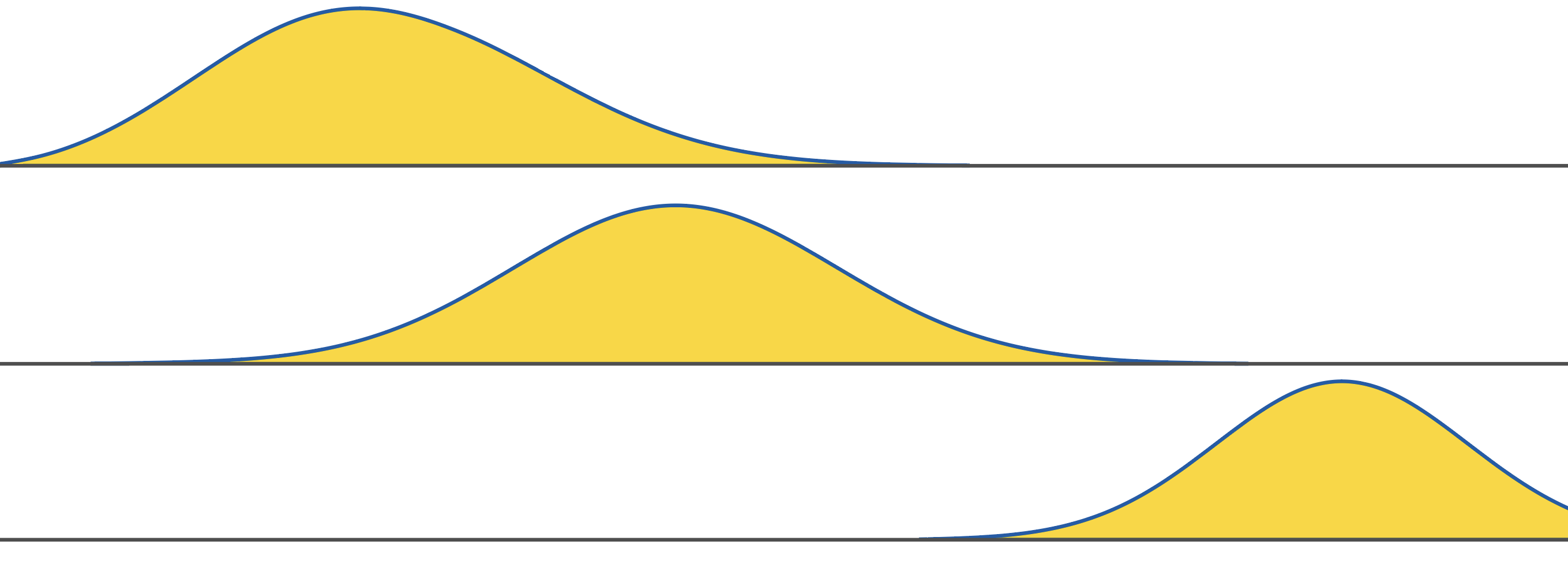
The history of the end of poverty has just begun
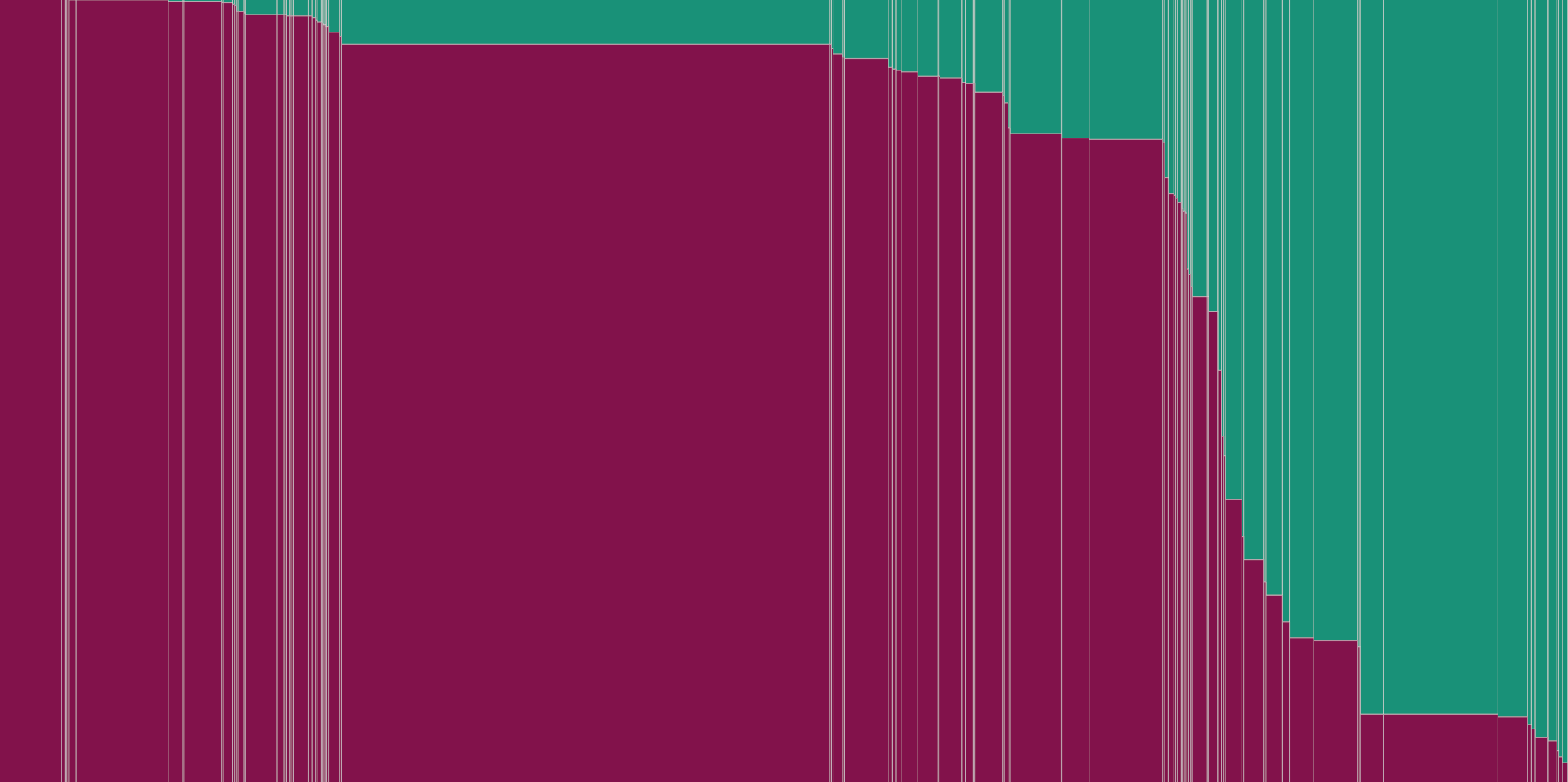
How much economic growth is necessary to reduce global poverty substantially?
- The data from 1981 onwards is based on household surveys collated by the World Bank. Earlier figures are from Moatsos (2021), who extends the series backwards based on historical reconstructions of GDP per capita and inequality data. 13
- All data is measured in international-$ which means that inflation and differences in purchasing power across countries are taken into account. 4
- The World Bank data for the higher poverty lines is measured in 2017 international-$. Recently, the World Bank updated its methodology having previously used 2011 international-$ to measure incomes and set poverty lines. The Moatsos (2021) historical series is based on the previously-used World Bank definition of extreme poverty – living on less than $1.90 a day when measured in 2011 international-$. This is broadly equivalent to the current World Bank definition of extreme poverty – living on less than $2.15 a day when measured in 2017 international-$. You can read more about this update to the World Bank’s methodology and how it has affected its estimates of poverty in our article From $1.90 to $2.15 a day: the updated International Poverty Line .
- The global poverty data shown from 1981 onwards relies on national household surveys that have differences affecting their comparability across countries or over time. 2
- Such surveys are less frequently available in poorer countries and for earlier decades. To produce regional and global poverty estimates, the World Bank collates the closest survey for each country and projects the data forward or backwards to the year being estimated. 6
- Non-market sources of income, including food grown by subsistence farmers for their own consumption, are taken into account. This is also true of the historical data – in producing historical estimates of GDP per capita on which these long-run estimates are based, economic historians take into account such non-market sources of income, as we discuss further in our article How do we know the history of extreme poverty?
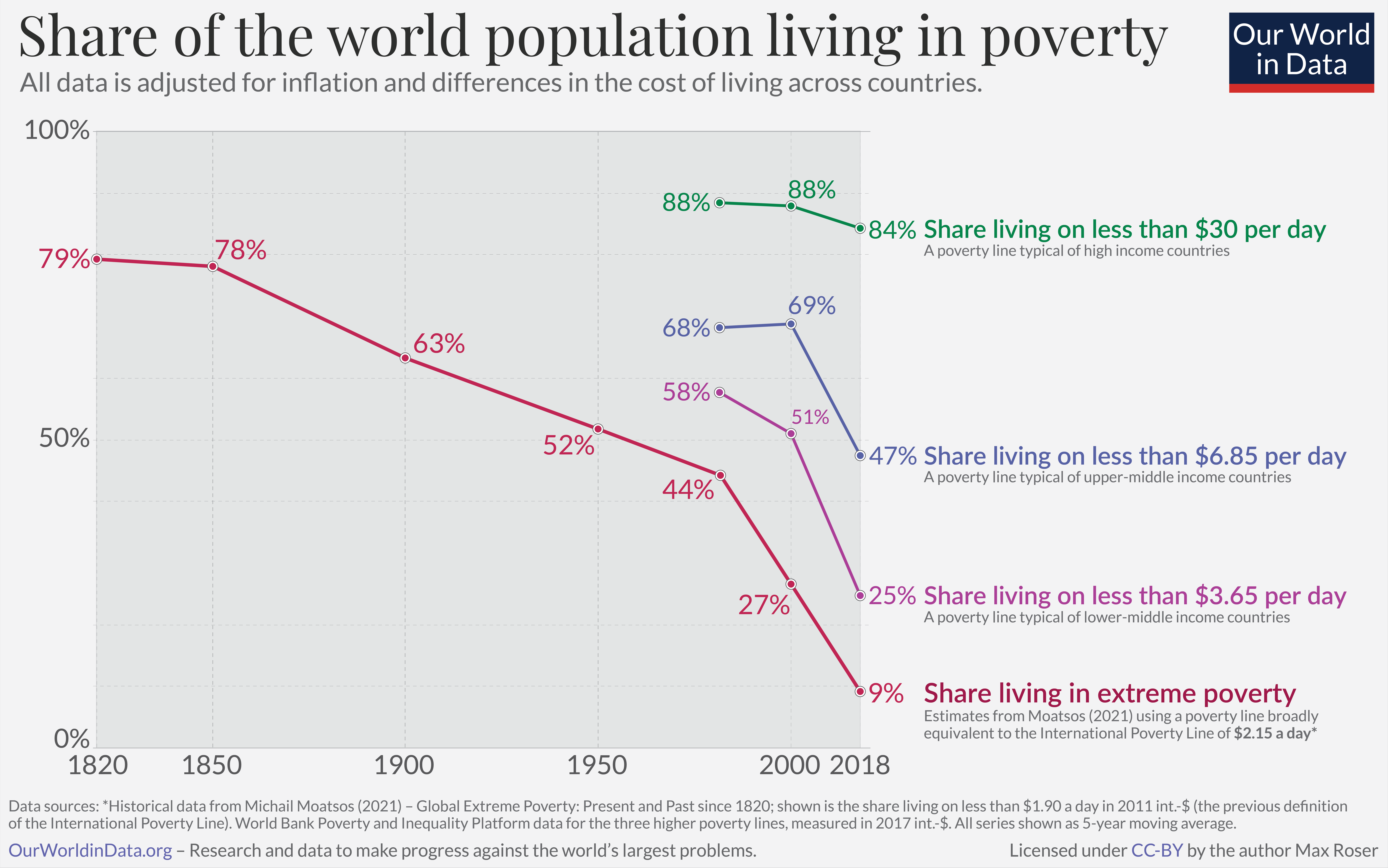
Explore Data on Poverty
About this data.
All the data included in this explorer is available to download in GitHub , alongside a range of other poverty and inequality metrics.
Where is this data sourced from?
This data explorer is collated and adapted from the World Bank’s Poverty and Inequality Platform (PIP).
The World Bank’s PIP data is a large collection of household surveys where steps have been taken by the World Bank to harmonize definitions and methods across countries and over time.
About the comparability of household surveys
There is no global survey of incomes. To understand how incomes across the world compare, researchers need to rely on available national surveys.
Such surveys are partly designed with cross-country comparability in mind, but because the surveys reflect the circumstances and priorities of individual countries at the time of the survey, there are some important differences.
Income vs expenditure surveys
One important issue is that the survey data included within the PIP database tends to measure people’s income in high-income countries, and people’s consumption expenditure in poorer countries.
The two concepts are closely related: the income of a household equals their consumption plus any saving, or minus any borrowing or spending out of savings.
One important difference is that, while zero consumption is not a feasible value – people with zero consumption would starve – a zero income is a feasible value. This means that, at the bottom end of the distribution, income and consumption can give quite different pictures about a person’s welfare. For instance, a person dissaving in retirement may have a very low, or even zero, income, but have a high level of consumption nevertheless.
The gap between income and consumption is higher at the top of this distribution too, richer households tend to save more, meaning that the gap between income and consumption is higher at the top of this distribution too. Taken together, one implication is that inequality measured in terms of consumption is generally somewhat lower than the inequality measured in terms of income.
In our Data Explorer of this data there is the option to view only income survey data or only consumption survey data, or instead to pool the data available from both types of survey – which yields greater coverage.
Other comparability issues
There are a number of other ways in which comparability across surveys can be limited. The PIP Methodology Handbook provides a good summary of the comparability and data quality issues affecting this data and how it tries to address them.
In collating this survey data the World Bank takes a range of steps to harmonize it where possible, but comparability issues remain. These affect comparisons both across countries and within individual countries over time.
To help communicate the latter, the World Bank produces a variable that groups surveys within each individual country into more comparable ‘spells’. Our Data Explorer provides the option of viewing the data with these breaks in comparability indicated, and these spells are also indicated in our data download .
Global and regional poverty estimates
Along with data for individual countries, the World Bank also provides global and regional poverty estimates which aggregate over the available country data.
Surveys are not conducted annually in every country however – coverage is generally poorer the further back in time you look, and remains particularly patchy within Sub-Saharan Africa. You can see that visualized in our chart of the number of surveys included in the World Bank data by decade.
In order to produce global and regional aggregate estimates for a given year, the World Bank takes the surveys falling closest to that year for each country and ‘lines-up’ the data to the year being estimated by projecting it forwards or backwards.
This lining-up is generally done on the assumption that household incomes or expenditure grow in line with the growth rates observed in national accounts data. You can read more about the interpolation methods used by the World Bank in Chapter 5 of the Poverty and Inequality Platform Methodology Handbook.
How does the data account for inflation and for differences in the cost of living across countries?
To account for inflation and price differences across countries, the World Bank’s data is measured in international dollars. This is a hypothetical currency that results from price adjustments across time and place. It is defined as having the same purchasing power as one US-$ would in the United States in a given base year. One int.-$ buys the same quantity of goods and services no matter where or when it is spent.
There are many challenges to making such adjustments and they are far from perfect. Angus Deaton ( Deaton, 2010 ) provides a good discussion of the difficulties involved in price adjustments and how this relates to global poverty measurement.
But in a world where price differences across countries and over time are large it is important to attempt to account for these differences as well as possible, and this is what these adjustments do.
In September 2022, the World Bank updated its methodology, and now uses international-$ expressed in 2017 prices – updated from 2011 prices. This has had little effect on our overall understanding of poverty and inequality around the world. But poverty estimates for particular countries vary somewhat between the old and updated methodology. You can read more about this update in our article From $1.90 to $2.15 a day: the updated International Poverty Line .
To allow for comparisons with the official data now expressed in 2017 international-$ data, the World Bank continues to release its poverty and inequality data expressed in 2011 international-$ as well. We have built a Data Explorer to allow you to compare these, and we make all figures available in terms of both sets of prices in our data download .
Absolute vs relative poverty lines
This dataset provides poverty estimates for a range of absolute and relative poverty lines.
An absolute poverty line represents a fixed standard of living; a threshold that is held constant across time. Within the World Bank’s poverty data, absolute poverty lines also aim to represent a standard of living that is fixed across countries (by converting local currencies to international-$). The International Poverty Line of $2.15 per day (in 2017 international-$) is the best known absolute poverty line and is used by the World Bank and the UN to measure extreme poverty around the world.
The value of relative poverty lines instead rises and falls as average incomes change within a given country. In most cases they are set at a certain fraction of the median income. Because of this, relative poverty can be considered a metric of inequality – it measures how spread out the bottom half of the income distribution is.
The idea behind measuring poverty in relative terms is that a person’s well-being depends not on their own absolute standard of living but on how that standard compares with some reference group, or whether it enables them to participate in the norms and customs of their society. For instance, joining a friend’s birthday celebration without shame might require more resources in a rich society if the norm is to go for an expensive meal out, or give costly presents.
Our dataset includes three commonly-used relative poverty lines: 40%, 50%, and 60% of the median.
Such lines are most commonly used in rich countries, and are the main way poverty is measured by the OECD and the European Union . More recently, relative poverty measures have come to be applied in a global context. The share of people living below 50 per cent of median income is, for instance, one of the UN’s Sustainable Development Goal indicators . And the World Bank now produces estimates of global poverty using a Societal Poverty Line that combines absolute and relative components.
When comparing relative poverty rates around the world, however, it is important to keep in mind that – since average incomes are so far apart – such relative poverty lines relate to very different standards of living in rich and poor countries.
Does the data account for non-market income, such as food grown by subsistence farmers?
Many poor people today, as in the past, rely on subsistence farming rather than a monetary income gained from selling goods or their labor on the market. To take this into account and make a fair comparison of their living standards, the statisticians that produce these figures estimate the monetary value of their home production and add it to their income/expenditure.
Research & Writing
Despite making immense progress against extreme poverty, it is still the reality for every tenth person in the world.
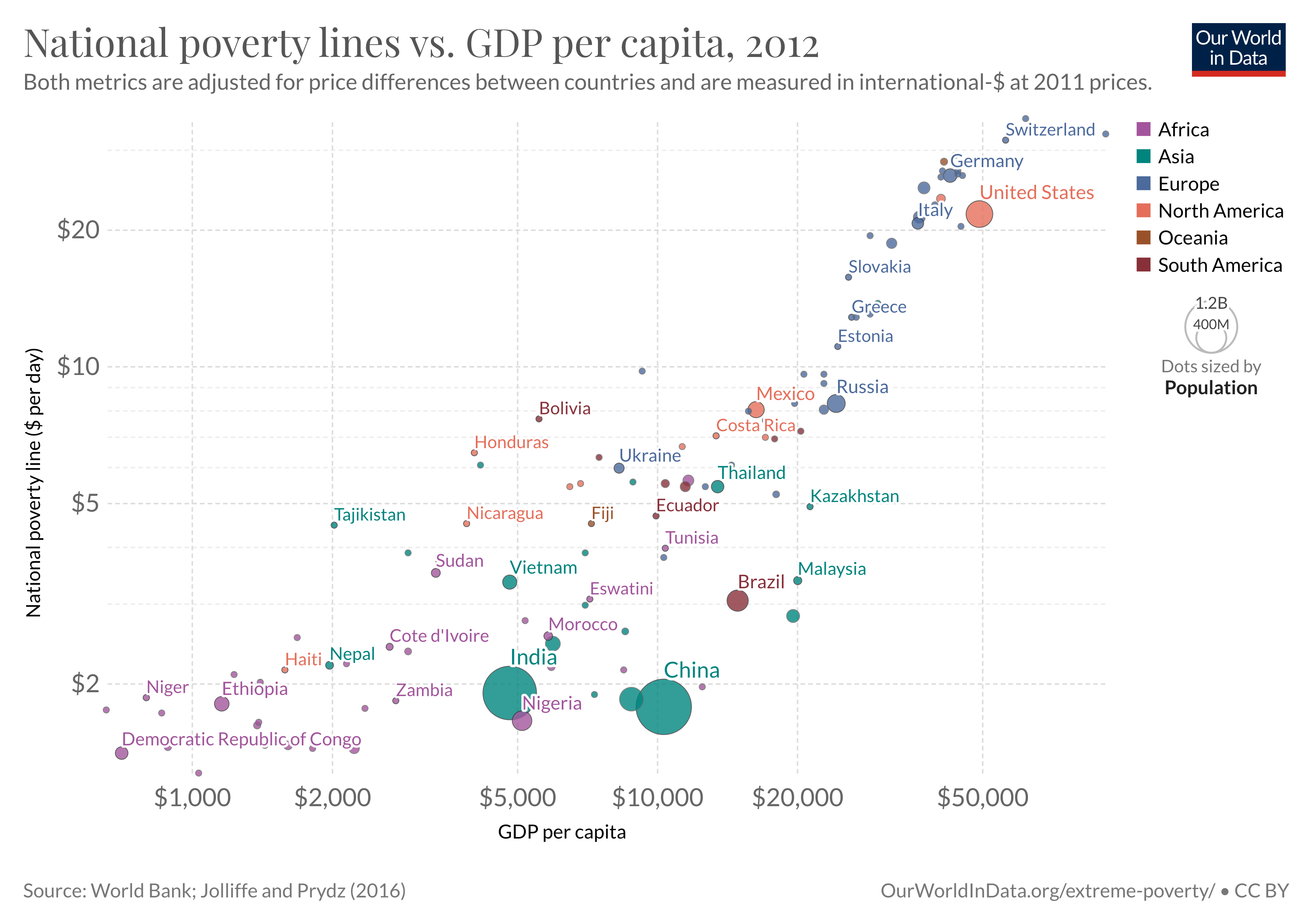
$2.15 a day: the updated International Poverty Line
What does the World Bank’s updated methods mean for our understanding of global poverty?
Global poverty over the long-run
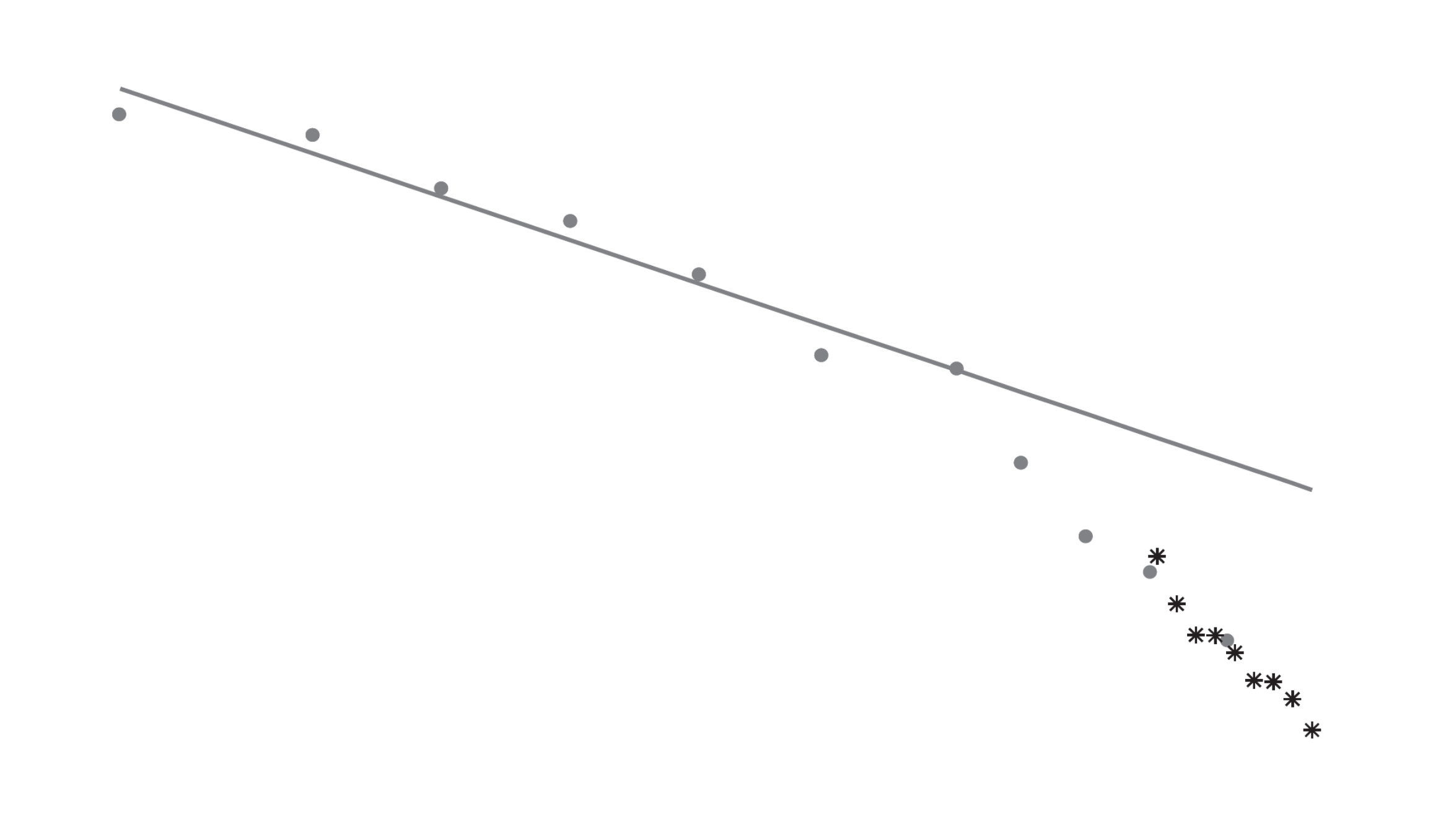
How do we know the history of extreme poverty?
Joe Hasell and Max Roser
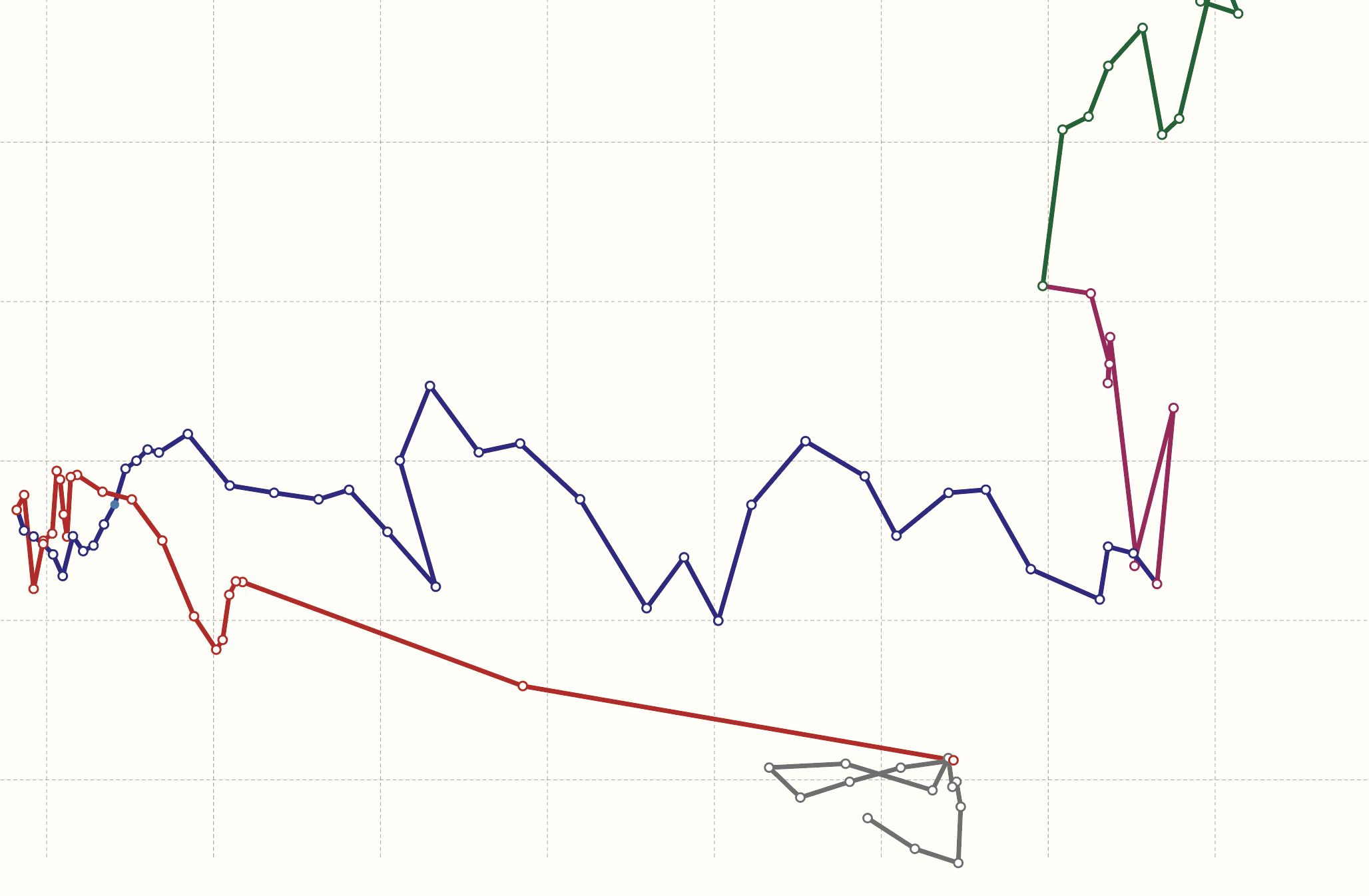
Breaking out of the Malthusian trap: How pandemics allow us to understand why our ancestors were stuck in poverty
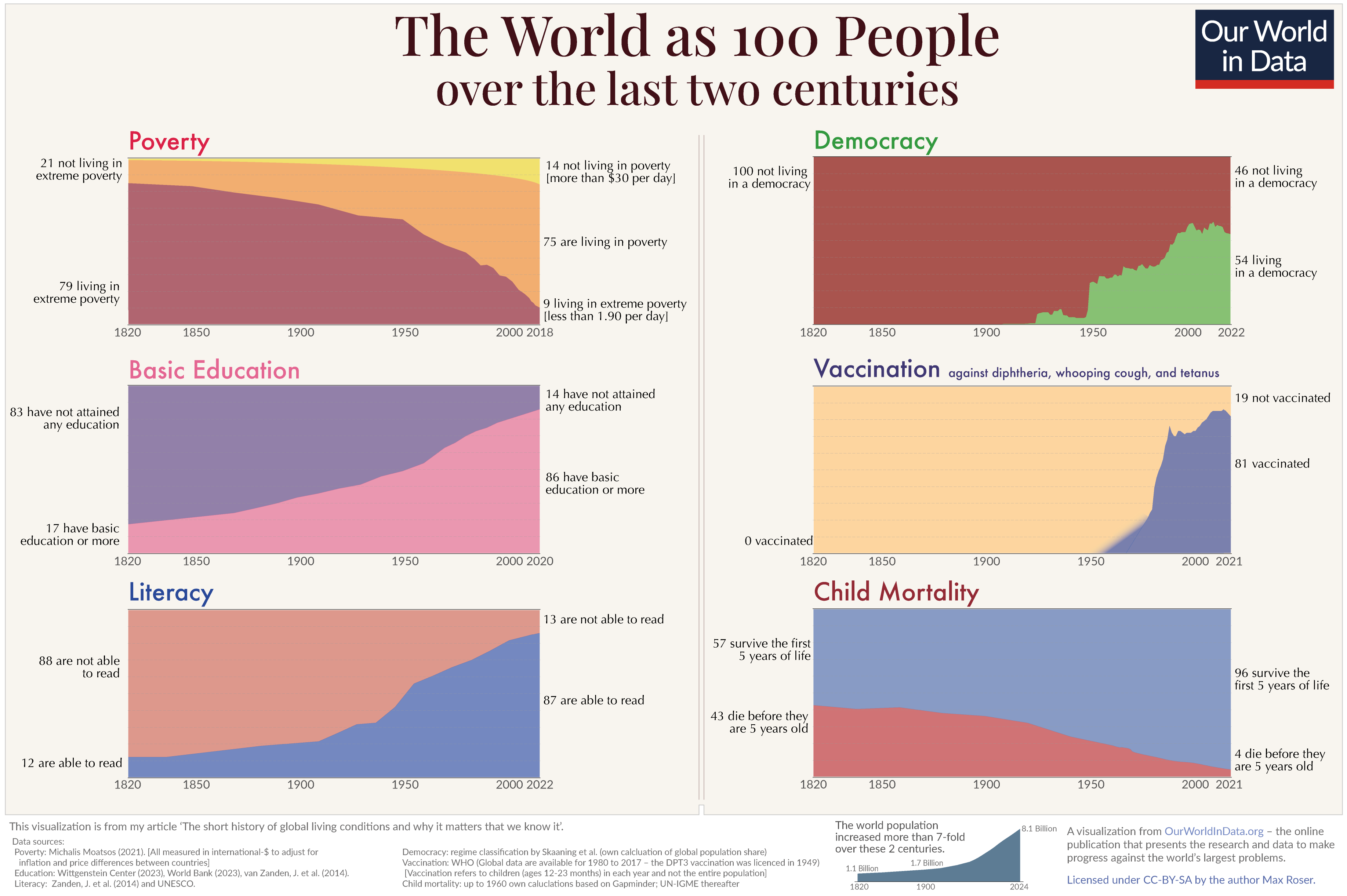
The short history of global living conditions and why it matters that we know it
Poverty & economic growth.
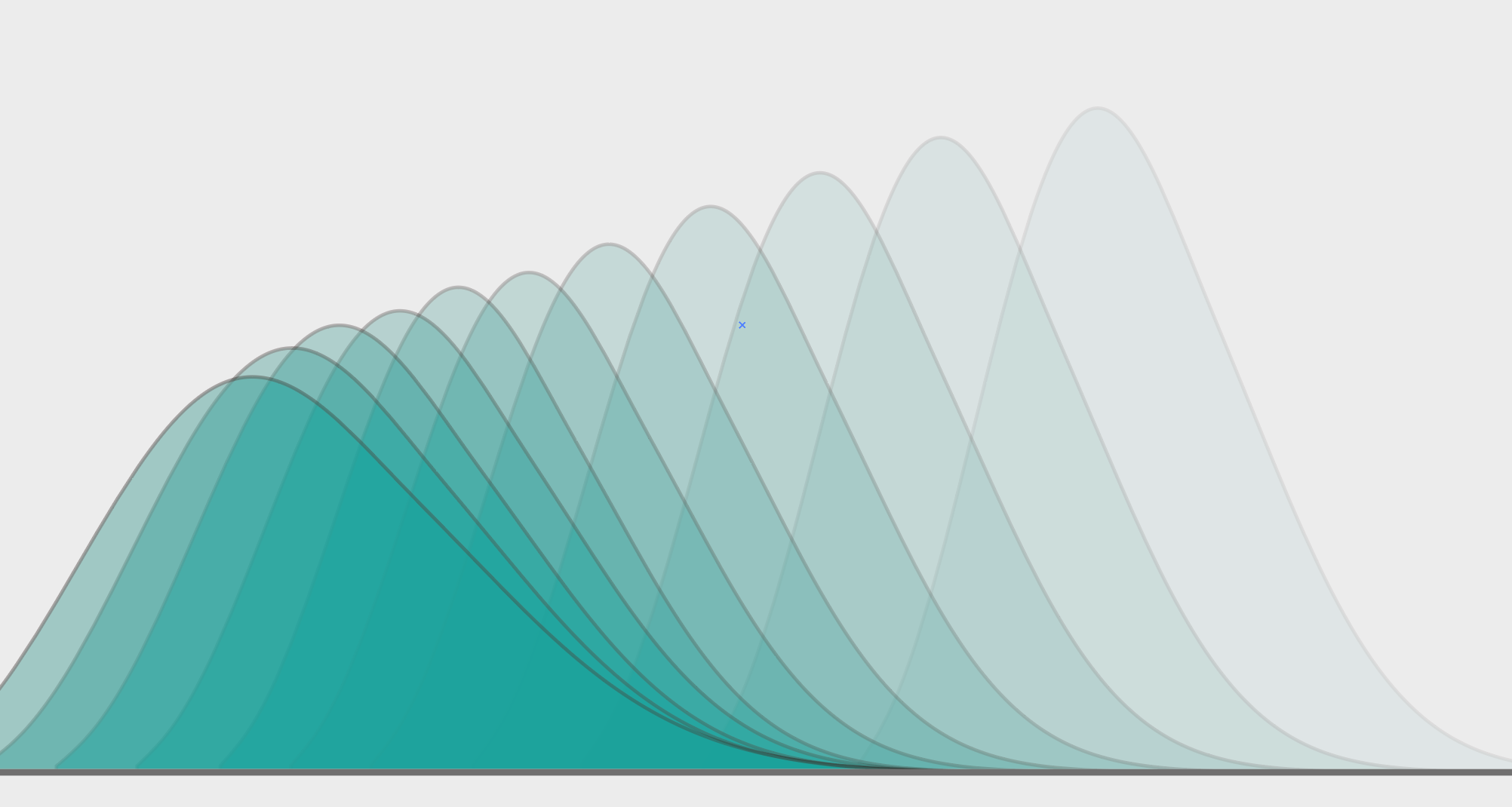
The economies that are home to the poorest billions of people need to grow if we want global poverty to decline substantially
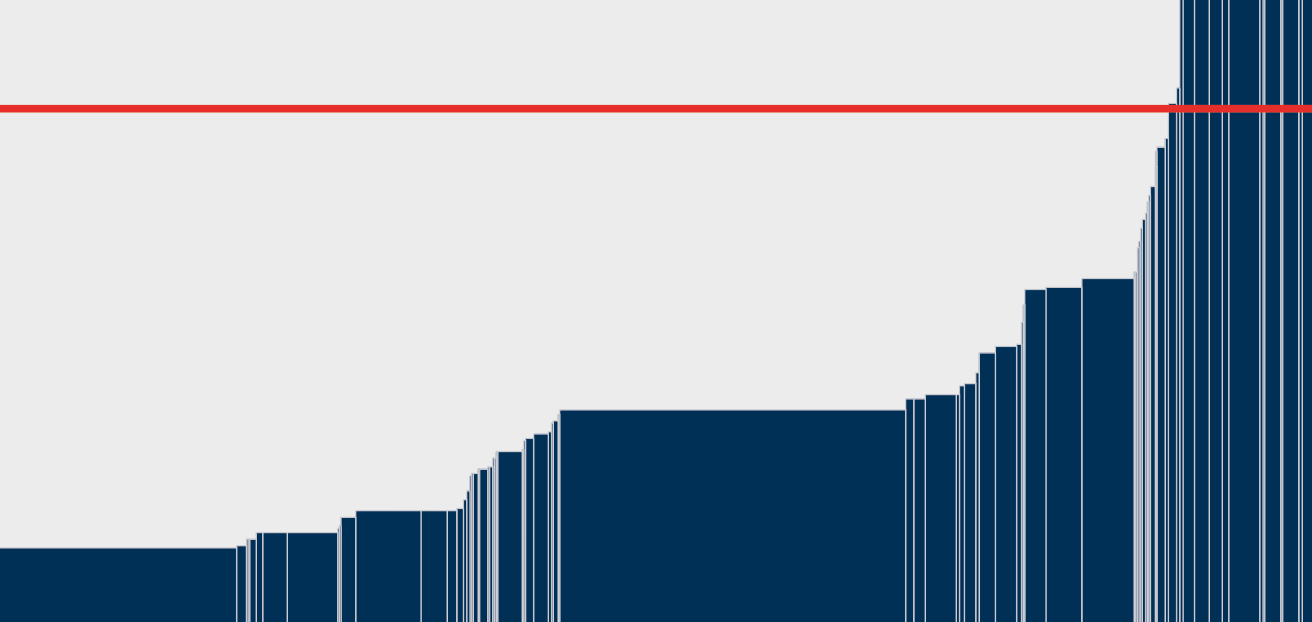
Global poverty in an unequal world: Who is considered poor in a rich country? And what does this mean for our understanding of global poverty?
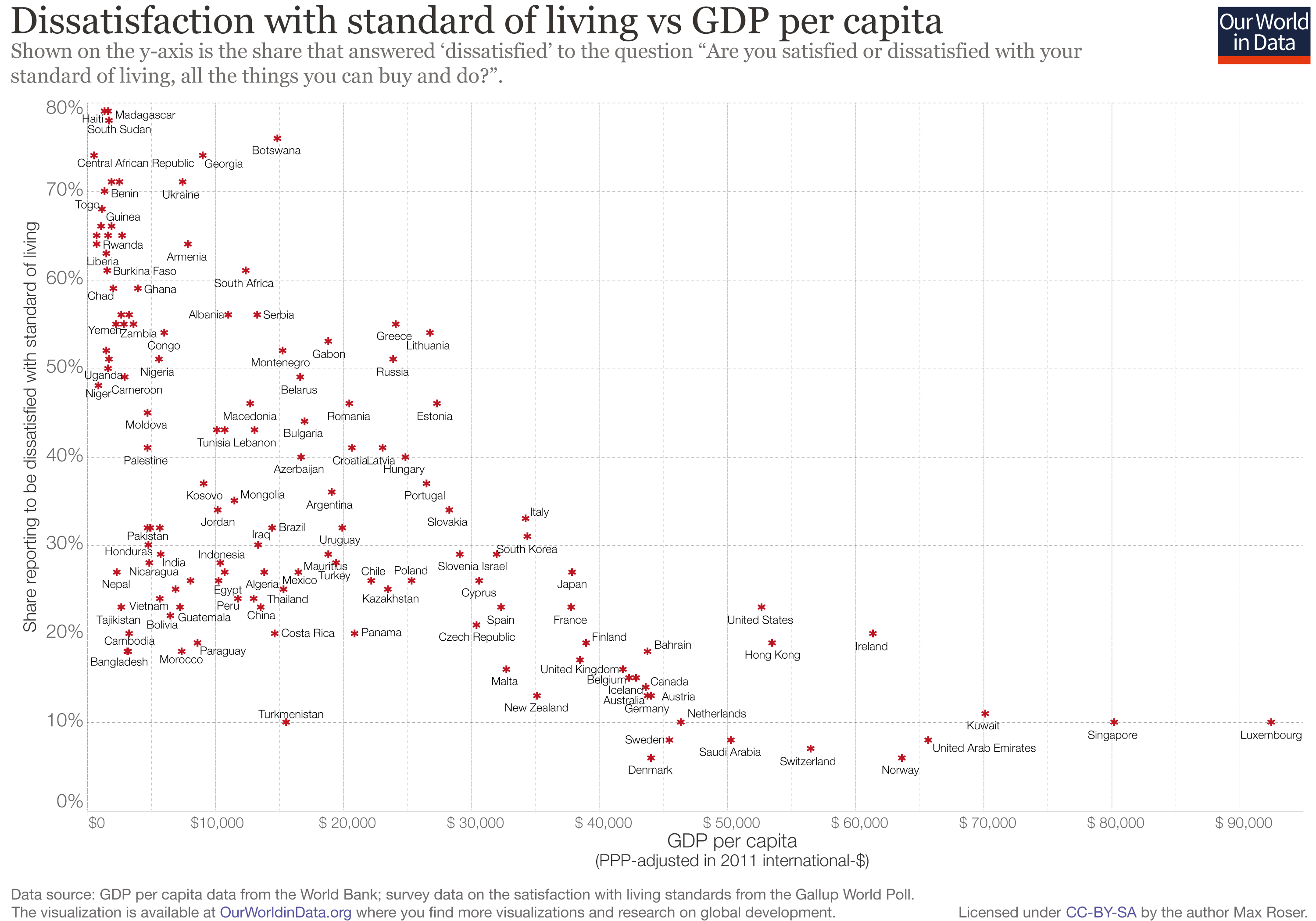
What do poor people think about poverty?
More articles on poverty.
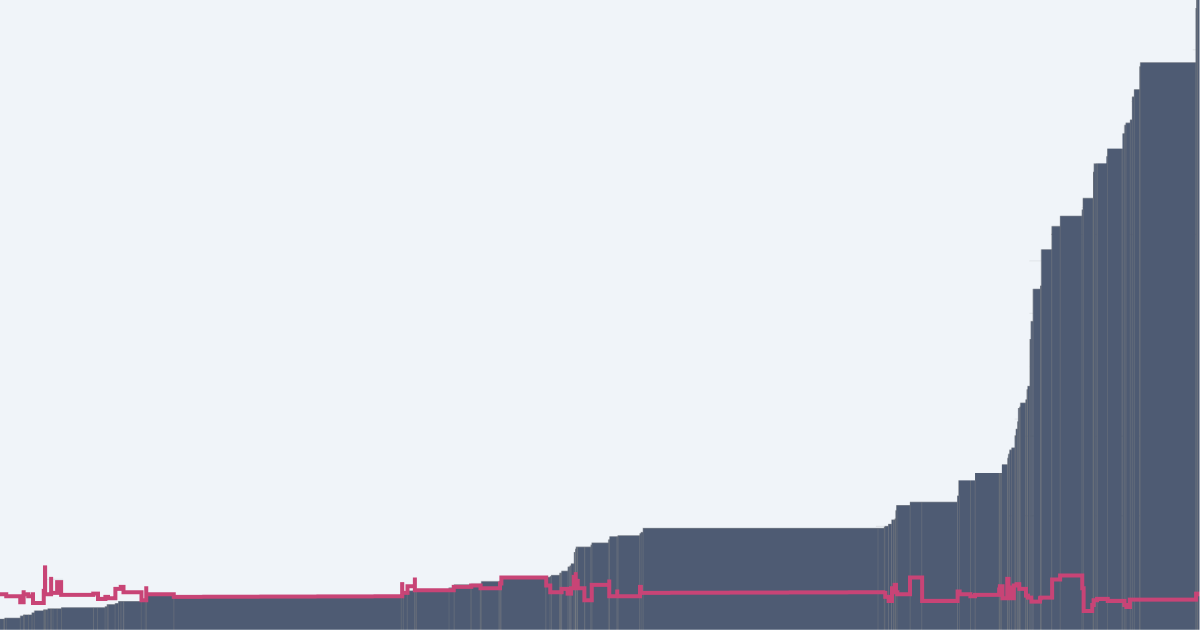
Three billion people cannot afford a healthy diet
Hannah Ritchie
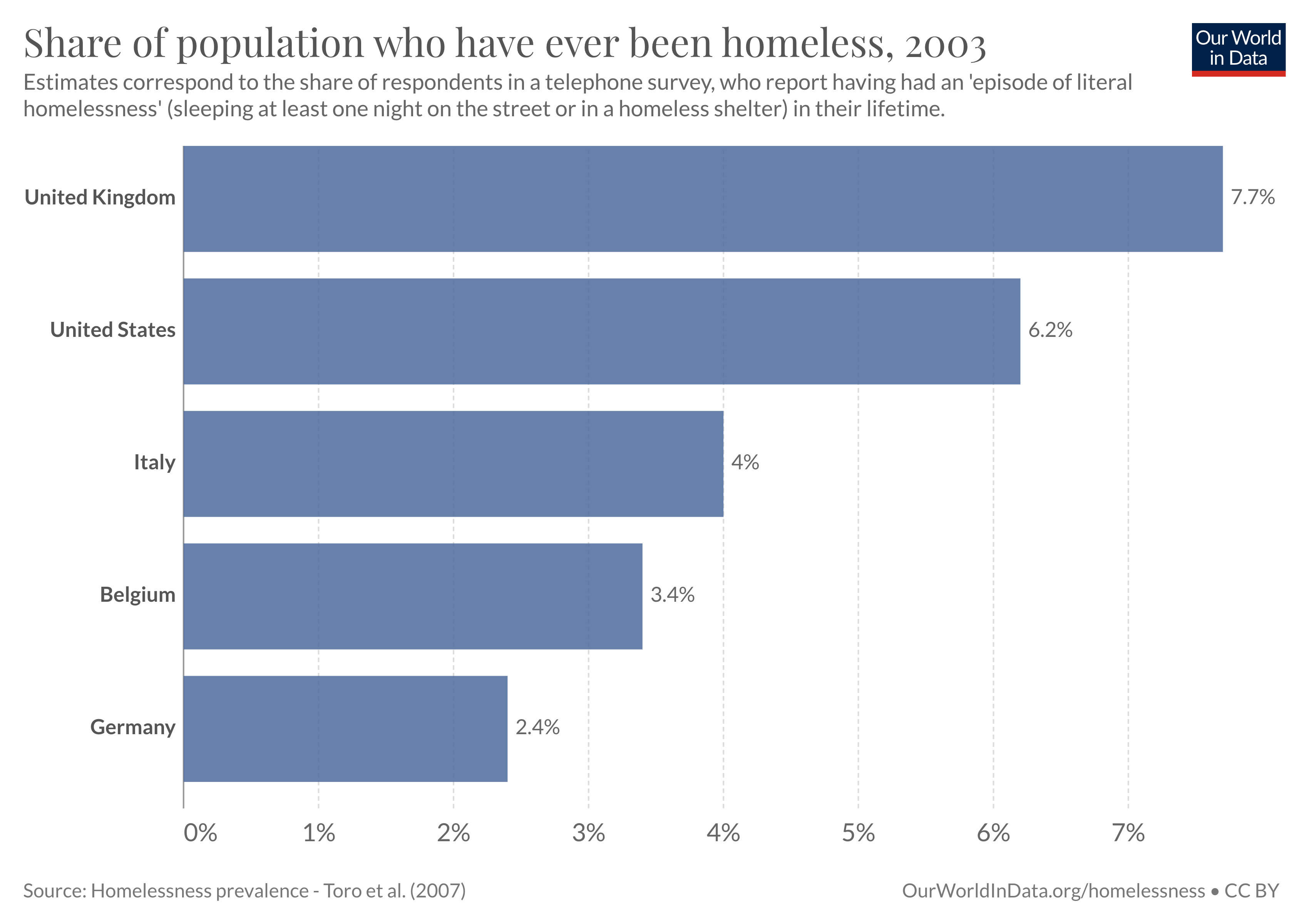
Homelessness and poverty in rich countries
Esteban Ortiz-Ospina
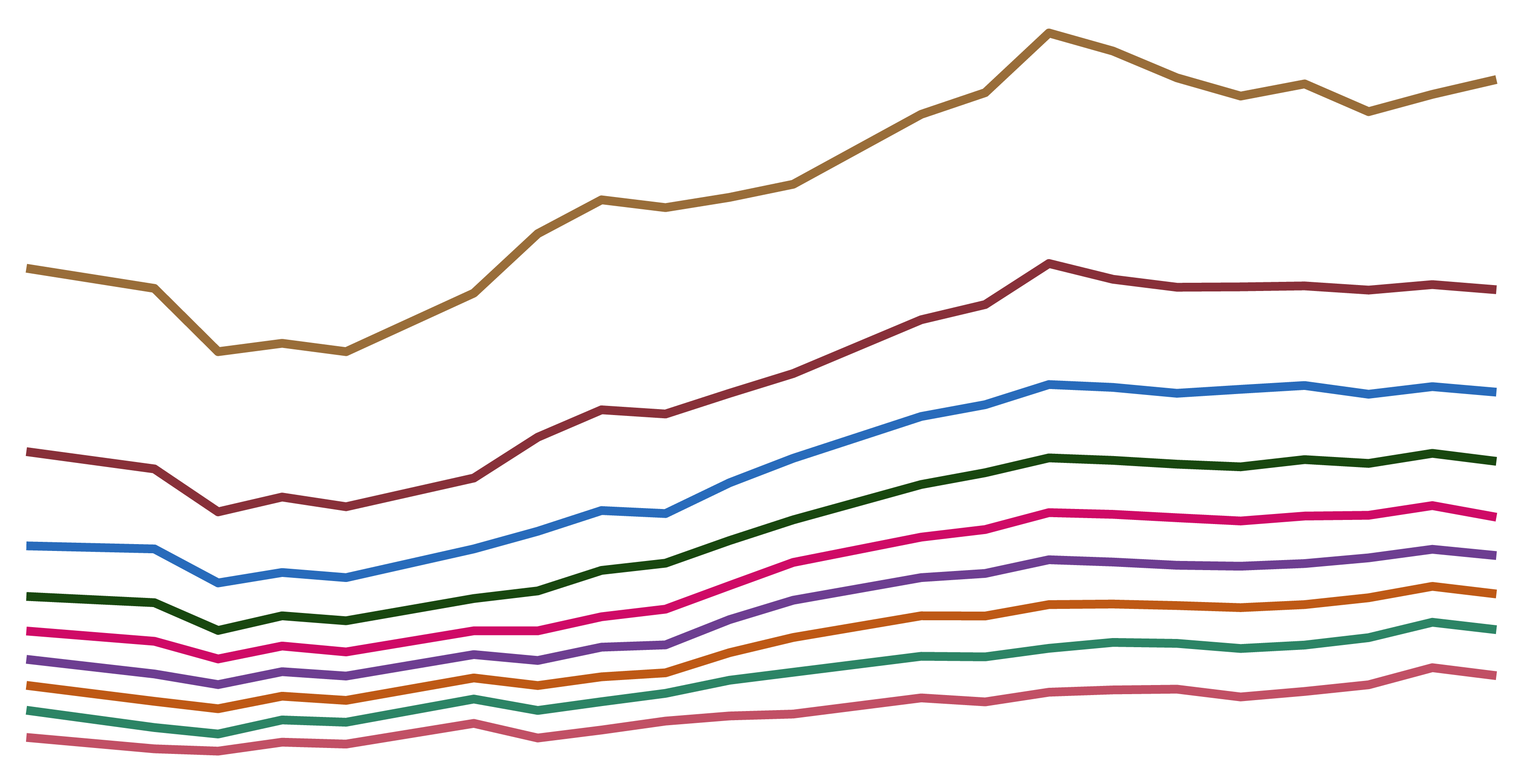
OWID Data Collection: Inequality and Poverty
Joe Hasell and Pablo Arriagada
Interactive Charts on Poverty
Official definitions of poverty in different countries are often not directly comparable due to the different ways poverty is measured. For example, countries account for the size of households in different ways in their poverty measures.
The poverty lines shown here are an approximation of national definitions, harmonized to allow for comparisons across countries. For all countries apart from the US, we take the harmonized poverty line calculated by Jolliffe et al. (2022). These lines are calculated as the international dollar figure which, in the World Bank’s Poverty and Inequality Platform (PIP) data, yields the same poverty rate as the officially reported rate using national definitions in a particular year (around 2017).
For the US, Jolliffe et al. (2022) use the OECD’s published poverty rate – which is measured against a relative poverty line of 50% of the median income. This yields a poverty line of $34.79 (measured using 2017 survey data). This however is not the official definition of poverty adopted in the US. We calculated an alternative harmonized figure for the US national poverty using the same method as Jolliffe et al. (2022), but based instead on the official 2019 poverty rate – as reported by the U.S. Census Bureau.
You can see in detail how we calculated this poverty line in this Google Colabs notebook .
Jolliffe, Dean Mitchell, Daniel Gerszon Mahler, Christoph Lakner, Aziz Atamanov, and Samuel Kofi Tetteh Baah. 2022. Assessing the Impact of the 2017 PPPs on the International Poverty Line and Global Poverty. The World Bank. Available to read at the World Bank here .
Because there is no global survey of incomes, researchers need to rely on available national surveys. Such surveys are designed with cross-country comparability in mind, but because the surveys reflect the circumstances and priorities of individual countries at the time of the survey, there are some important differences. In collating this survey data the World Bank takes steps to harmonize it where possible, but comparability issues remain.
One important issue is that, whilst in most high-income countries the surveys capture people’s incomes, in poorer countries these surveys tend to capture people’s consumption. The two concepts are closely related: the income of a household equals their consumption plus any saving, or minus any borrowing or spending out of savings.
To help communicate the latter, the World Bank produces a variable that groups surveys within each individual country into more comparable ‘spells’ (which we include in our data download ). Our Data Explorer provides the option of viewing the data with these breaks in comparability indicated.
The international-$ is a hypothetical currency that results from price adjustments across time and place. It is defined as having the same purchasing power as one US-$ in a given base year – in this case 2017. One int.-$ buys the same quantity of goods and services no matter where or when it is spent. There are many challenges to making such adjustments and they are far from perfect. But in a world where price differences across countries and over time are large it is important to attempt to account for these differences as well as possible, and this is what these adjustments do. Read more in our article From $1.90 to $2.15 a day: the updated International Poverty Line .
According to World Bank data, in 1990 there were 2.00 billion people living in poverty, and in 2019 that had fallen to 0.648 billion. The average fall over the 29 years in between is: (2.00 billion – 0.648 billion)/29 = 46.6 million. Dividing by the number of days (29 x 365) gives the average daily fall: (2.00 billion – 0.648 billion)/(29 x 365) = 128,000. (All figures rounded to 3 significant figures).
The projections are generally made on the assumption that incomes or expenditure grow in line with the growth rates observed in national accounts data. You can read more about the interpolation methods used by the World Bank in Chapter 5 of the Poverty and Inequality Platform Methodology Handbook.
We use the figures presented in the World Bank’s Poverty and Shared Prosperity 2022 report. Earlier estimates were also published in Lakner, C., Mahler, D.G., Negre, M. et al. How much does reducing inequality matter for global poverty?. J Econ Inequal (2022). https://doi.org/10.1007/s10888-021-09510-w . Available online here .
Earlier estimates were also published in Lakner, C., Mahler, D.G., Negre, M. et al. How much does reducing inequality matter for global poverty?. J Econ Inequal (2022). https://doi.org/10.1007/s10888-021-09510-w . Available online here .
The figures are taken from a World Bank blog post by Nishant Yonzan, Christoph Lakner and Daniel Gerszon Mahler. The post builds on and updates the estimates published by Lakner et al. (2022). In September 2022, the World Bank changed from using 2011 international-$ to 2017 international-$ in the measurement of global poverty. The International Poverty Line used by the World Bank and the UN to define extreme poverty was accordingly updated from $1.90 a day (in 2011 prices) to $2.15 (in 2017 prices). In order to match up to the projected figures, the extreme poverty estimates shown here relate to a previous release of the World Bank’s data using data expressed in 2011 prices, which vary slightly from the latest data in 2017 prices. You can read more about this change and how it affected the World Bank estimates of poverty in our article From $1.90 to $2.15 a day: the updated International Poverty Line . Lakner, C., Mahler, D.G., Negre, M. et al. How much does reducing inequality matter for global poverty?. J Econ Inequal (2022). https://doi.org/10.1007/s10888-021-09510-w . Available online here .
We use the figures provided in the blog post, which extend the methods presented in Lakner et al. (2022). Lakner, C., Mahler, D.G., Negre, M. et al. How much does reducing inequality matter for global poverty?. J Econ Inequal (2022). https://doi.org/10.1007/s10888-021-09510-w . Available online here .
Shown are those countries with a decline of more than 30 percentage points over a period of 15 years or more. There are a number of ways in which comparability across the different household surveys on which this data is based can be limited. These affect comparisons both across countries and within individual countries over time. The World Bank’s Poverty and Inequality Platform Methodology Handbook provides a good summary of the comparability and data quality issues affecting this data and how it tries to address them. In collating this survey data the World Bank takes a range of steps to harmonize it where possible, but comparability issues remain. To help communicate the latter, the World Bank produces a variable that groups surveys within each individual country into more comparable ‘spells’. Our Data Explorer provides the option of viewing the data with these breaks in comparability indicated.
You can read more about how the World Bank sets these higher poverty lines, as well as the International Poverty Line against which it measures extreme poverty, in our article From $1.90 to $2.15 a day: the updated International Poverty Line . To the three poverty lines adopted officially by the World Bank – $2.15, $3.65 and $6.85 – we add a higher line broadly consistent with definitions of poverty in high income countries. See our article Global poverty in an unequal world: Who is considered poor in a rich country? And what does this mean for our understanding of global poverty?
For details of the methods used to produce the long-run poverty data see, Moatsos, M. (2021). Global extreme poverty: Present and past since 1820. In van Zanden, Rijpma, Malinowski and Mira d’Ercole (eds.) How Was Life? Volume II: New Perspectives on Well-Being and Global Inequality since 1820. Available from the OECD here .
Cite this work
Our articles and data visualizations rely on work from many different people and organizations. When citing this topic page, please also cite the underlying data sources. This topic page can be cited as:
BibTeX citation
Reuse this work freely
All visualizations, data, and code produced by Our World in Data are completely open access under the Creative Commons BY license . You have the permission to use, distribute, and reproduce these in any medium, provided the source and authors are credited.
The data produced by third parties and made available by Our World in Data is subject to the license terms from the original third-party authors. We will always indicate the original source of the data in our documentation, so you should always check the license of any such third-party data before use and redistribution.
All of our charts can be embedded in any site.
Our World in Data is free and accessible for everyone.
Help us do this work by making a donation.

What is Poverty? Exercise : Summary and Question Answers
Share this article, what is poverty.
You can download our android app using below button to get offline access to the notes directly from your phone.

Understanding the text
Answer the following questions., a. what is poverty according to parker, b. how is poverty difficult for parker’s children list some specific examples., c. how does parker try to obtain help, and what problems does she encounter, d. why are people’s opinions and prejudices her greatest obstacles, e. how does parker defend her inability to get help how does she discount the usual solutions society has for poverty (e.g., welfare, education, and health clinics), reference to the context, a. explain the following: poverty is looking into a black future., b. what does parker mean by “the poor are always silent”, c. what writing strategy does the author use at the beginning of most of the paragraphs do you notice a recurring pattern what is it, d. how does parker develop each paragraph what details make each paragraph memorable, e. in the final paragraph, how does the author use questions to involve the reader in the issue of poverty, reference beyond the text, a. define a social problem (homelessness, unemployment, racism) imitating parker’s style..
A Social Problem: Unemployment
b. Using adjectives to highlight the futility of the situation, write a short definition essay on Growing up in Poverty.
Essay on Growing Up in Poverty
Don't miss our Nepali Guide
Moreover, If you have any doubt, suggestions or feedback about our services, then please feel free to contact us. You can contact us from the Contact Page . We will be happy to read your feedback and suggestions.
Additionally, You can also check our Privacy Policy page if you want to know how we may use your data generated from visiting this website.

Essay about Poverty Causes and Effects: Writing Guide and Topics
Poverty is a dreaded term, and the thought of its visitation elicits nasty reactions. As a high school, college, or university student, you must be well-versed in how to write an essay about poverty causes and effects. As it is a cause-and-effect essay , at least mostly, you must come up with supporting ideas for the causes and effects of poverty.
Sometimes, it can be descriptive causes of poverty essays. So when asked to write a short essay on poverty, you should first understand your writing type.
Writing a good poverty essay needs time and dedication. Getting a topic is never guaranteed as most people have always chosen the best. However, you can get a topic for your poverty essay with creativity and critical thinking.
In this article, apart from offering free topics for poverty essays, we advise you on how to write such essays. When you need help, too, our custom essay writing service is ready to help.
How to Begin a Poverty Essa (An Eye-Catching Introduction)
We can never tire reiterating that any essay begins with a sound, clear, and concise introduction. In your introduction, here are some questions to ask yourself:
- What is poverty?
- What are the causes of poverty?
- What are the causes and effects of poverty?
- What are the different eradication strategies for poverty?
- How many people are affected by poverty globally?
The above questions can also be part of the topic ideas for your poverty essay.
The introduction should also have an elaborate poverty essay thesis. The poverty thesis should highlight the gist of the entire essay in either one or two sentences. It helps the reader identify the plan and intention of the essayist when writing a poverty essay.
Your introduction should also have some statistics to show the gravity of the issue globally. And when using quoted statistics, ensure they are recent, from a scholarly source, and well-referenced.
If you write an argumentative or persuasive essay on poverty, follow the right introduction to the poverty essay format.
How to Format/Outline a Poverty Essay
When writing a cause-and-effect essay on poverty, a persuasive poverty essay, or an essay on the causes of poverty, an outline precedes the other sections.
Your global poverty essay should begin with a great topic. After the topic, outline the introduction.
The body paragraphs come immediately after the introduction. Depending on the length of the poverty essay, it can follow the five-paragraph format. The body paragraphs should contain one idea. For instance, if you are writing a short essay on poverty in the world, your ideas can be poor governance, lack of education, and climate change. Those points should be in their paragraphs.
If it is How to end poverty essay, some potential considerations would be policy changes, education, fair sharing of resources, and environmental conservation. The same applies when writing a short essay on helping the poor.
30 Suitable Topics for Essays on Poverty
Here is a list of some suitable poverty essay topics. They can help you brainstorm for the best topics or better yet you can choose and use them in your essays, research papers, theses, and dissertations.
- Child poverty and its impact on growth and development
- Is poverty inevitable?
- Is there a nexus between poverty and world hunger?
- Explore the causes and consequences of poverty in India.
- What are the most successful nations in eradicating poverty?
- Which countries have the highest poverty index?
- The impacts of poverty in our society.
- Poverty definition essay.
- Real-life examples of poverty.
- Poverty as a multifaceted issue.
- Exploring the American stagnant poverty line
- The connection between poverty and homelessness
- How poverty affects aboriginal communities
- Poverty in contemporary society.
- Poverty and crime rates.
- Prejudice and poverty.
- How poverty affects the progress of students
- Does terrorism cause poverty?
- Wars and poverty: A case study of Congo, Somali, and Iraq.
- Human Conflict and Poverty.
- How the United Nations and the Red Cross are fighting Poverty.
- State and Non-state actors in poverty eradication.
- Family planning and poverty.
- Poverty and access to quality healthcare.
- The link between culture and poverty.
- Does poverty in a nation depict poor governance?
- How poverty acts as a factor in human trafficking and prostitution.
- How is poverty measured?
- Capitalism and poverty?
- The Role of the Great Depression on Poverty.
Related Reading: Informative speech topics and ideas.
Concluding an Essay on Poverty (Leave the Audience Yearning for More)
Now, even after writing an excellent poverty essay, it must end. You don't bring it to an end anyhow. Instead, you will have a closing sentence that signals the reader that the essay, albeit great, is ending.
The best thing to do here is to highlight the essay's main points. Choose the best words to use when summarizing ideas. Again, you will need to restate the thesis in a reinvented format this time.
Make the conclusion memorable, like the introduction to your essay about poverty. You will score the best grades when you balance the introduction, body, and conclusion.
If you cannot find ideas for writing a poverty essay, our professional paper writers can help you. We are a known paper writing service .
From research papers to essays, term papers, thesis, thesis proposals, dissertations, dissertations, and research paper proposals, GradeCrest has experts in any field. Get a custom essay that is professionally done.
If you have written a poverty essay and need some editing, we can correct your poverty essay fast. Get to submit a paper that is devoid of plagiarism, relevant, and informative. After all, there are many reasons people seek essay writing services .
Useful Resources:
- Facts on Poverty
- Poverty World Clock (Real-time poverty index calculator)
- Defining Poverty
- Eradicating poverty

Gradecrest is a professional writing service that provides original model papers. We offer personalized services along with research materials for assistance purposes only. All the materials from our website should be used with proper references. See our Terms of Use Page for proper details.


Friday essay: ‘My family are always trying to buy us a house.’ We asked couples how class affects their relationships
Senior Lecturer, Macquarie School of Social Sciences, Macquarie University
Senior Research Fellow, Alfred Deakin Institute for Citizenship and Globalisation, Deakin University
Disclosure statement
Rose Butler has received funding from the Australian Research Council.
Eve Vincent does not work for, consult, own shares in or receive funding from any company or organisation that would benefit from this article, and has disclosed no relevant affiliations beyond their academic appointment.
Macquarie University and Deakin University provide funding as members of The Conversation AU.
View all partners
When Patrick first held a driver’s licence, his P-plates, he drove a beaten-up car “almost as old as myself”. If police didn’t pull him over once a month, he’d be surprised.
His older brother’s girlfriend, “an upper-class girl”, was once pulled over while on her P-plates while driving a new car, having forgotten to put her lights on. The officer told her in a friendly voice, “You should probably put your lights on.” She had responded mildly with, “Oh, cool, sorry.” Meanwhile, in a similar situation, Patrick had been charged over an insignificant technicality to do with displaying his P-plates.
“Just the expectation from me of dealing with authorities is … I have to toe the line,” he told us, “my expectations are I’m going to get slammed by them.”
When we spoke to Patrick, he was in his thirties. Now, he was a computer programmer, living a comfortable life. But throughout his childhood, Patrick, who is white, shouldered significant responsibilities amid severe material deprivation – he recalled going hungry, for instance.
His girlfriend, Felicia, grew up in the “upper class end of things” in the quiet south-eastern suburbs of Melbourne. Her dad was a doctor and her mum assisted with the practice. She and her siblings attended the local private school because, Felicia believed, her parents wanted her to associate with “the right people”. She described her family background as Jewish, English and “brown”, and her childhood as a “very happy time”.
Patrick told us Felicia can “talk her way out of” situations with authorities. “She can always explain the situation and get leeway.” He sees a big difference between them around “expectation”: of their treatment in the world and their place within it.
These divergent expectations reached into various aspects of their shared lives. “Dealing with things like real estate agents or businesses or whatever, she’s always got the expectation that something can be worked out.” Put another way, Patrick felt Felicia’s view of the world was, “What she wants can be got.”
Patrick, conversely, described how he couldn’t “shake” the feeling he needed to always have “everything in line”. If he was submitting a rental application for a house, for example, he took care to have all the documentation watertight and in hand. This is much easier to accomplish now he is earning a high wage as a programmer and living a settled life. Yet he still carries a somewhat amorphous anxiety, steeped in his class experience. “If I have one thing wrong, that one thing’s going to trip me up.”
Love across class
We spent two years interviewing 38 people about their experiences of love and class: members of 15 couples, plus eight women whose partners declined to take part.
When we asked about our interviewees’ cultural backgrounds, their descriptions included “white”, “mixed race”, “brown”, Aboriginal, Jewish, Vietnamese, Sri Lankan, English, Māori and Turkish.
What happens, we wanted to know, when people form a romantic relationship across class?

We were attracted to this question after a project where we’d interviewed parents about the changing multicultural dynamics of their local public schools and neighbourhoods. We noticed it was relatively easy for white, middle-class parents to recognise, feel positive about and know what to say about forming connections across “ethnic” difference in their school communities.
But they felt differently about their children forming friendships across class: this was far less appealing and more actively avoided. Many struggled to find a vocabulary to talk about the nature of class differences. These were communicated using other words, like “values” and “rough”.
We decided to embark on new research together, with “class” as an explicit focus. We interviewed people who perceived their class background, or “class origin”, to be different to their partner’s.
Many interviewees expressed relief and even catharsis in discussing class and its significance to their partnership – and their relationship to the world more broadly. We also talked with couples who felt confused about the role class difference played in their relationship, but sensed it was something they were grappling with. This was especially the case when people hailed from migrant or transnational backgrounds, or had experienced upward social mobility.
Two of our interviewees were hesitant to use the language of class: they worried it involved judgement and betrayal of their faith in meritocracy and individual character.
Class, we learned, manifests in subtle and not-so-subtle ways in these partnerships.
A similar place ‘from very different directions’
Patrick had spent his childhood moving up and down the east coast, “just random places”. His dad did “manual labour of various sorts” before a car accident wrecked his left arm. He did work “every so often” throughout his childhood, but was “mostly unemployed”. In his adulthood, Patrick’s parents separated and his mum started working in aged care.
Felicia told us Patrick was not a “man child”, unlike “so many of the people that I grew up with”. His maturity was very attractive to her, and she described him as “very emotionally intelligent”. As a child, Patrick’s family visited op shops to buy clothes, books and old computers. He talked about slowly building a nourishing life as he recovers from the psychic pain caused, in part, by abject childhood poverty.
Felicia says she and Patrick have arrived at a similar place “from very different directions”. She has come to feel increasingly “alienated” from “a lot of assumptions about lifestyle and money” she grew up with.
While her old school friends have mortgages and expensive cars bought with the “equity from those mortgages”, she rents in a lively, friendly neighbourhood and engages in just enough locum work as a doctor to sustain her lifestyle. She greatly values her spare time.
Felicia and Patrick’s close bond and respect for each other was clear to us. Yet Patrick also emphasised that his wounds remain raw, as he delved into the dynamics of their cross-class relationship.
Class is ‘one of our biggest issues’
Another couple, Caleb and Jacinta, described the class dynamics of their relationship in ways that echo Patrick and Felicia’s. However, they described a more pointed, building tension.
Jacinta, who grew up with far fewer opportunities and choices than Caleb, described class as “one of our biggest issues”.
Caleb is a white university student in his thirties from inner-city Melbourne, the sole child of “two detached lawyers”. Jacinta, who works as a TV producer, described herself as being from a “mixed” ethnic background. Her mum was a cleaner and her stepdad a security guard.
Caleb is “pathologically indifferent” to money, he told us. In their spacious inner-city apartment, Caleb appreciated both minimalism and quality. He enjoyed shopping at the local, pricier shops, rather than the supermarket where things were cheaper, and his approach to paying bills on time was relaxed. He explained with self-deprecating humour that he was “raised in the lap of luxury”, “firmly ensconced in the most comfortable class”.

“The class thing” had been at the forefront of Jacinta’s mind for a while, she told us. Despite Caleb’s family’s affluence, their wealth hadn’t been apparent to Jacinta in the early days of their relationship. Of course, she’d known Caleb’s family had money: their “nice house” was in “a very fancy part of town”, with “libraries of books on the walls”.
But they also actively obscured the advantages their wealth afforded them, and they loathed obvious displays of wealth. For Jacinta, who grew up under very different financial circumstances, this contradiction was difficult to grasp. Her in-laws lived a seemingly understated life, but one that was expensive to sustain.
Jacinta’s mum was 16 when Jacinta was born and later partnered with a man who also had a child and who already owned a house. Jacinta lived out the rest of her childhood with her mum, stepdad and three siblings in suburban Melbourne. Her mum was a primary carer and worked as a cleaner when she could. Her stepdad was a security guard. The family “sacrificed” so Jacinta and her siblings could play netball and gymnastics, although things like school camps were too expensive. Jacinta left school at 17, but eventually found her passion working as a producer in TV.
Once they moved in together, Caleb and Jacinta’s very different day-to-day approaches to financial matters became a hindrance and they found themselves frequently clashing over things “as basic as the food shopping every week”. On the one hand, Jacinta budgeted and planned. Caleb, on the other, reflected that he had “been kind of coasting” through life and wasn’t worried about money or accumulating it. “I’ve never really given a shit about that because it’s always been drummed into me that I don’t really need to.”
Different views on home ownership
It was the question of home ownership, and its relationship to growing wealth inequality , that really illustrated to them both how their differently classed childhoods had shaped their different relationships to money as adults – or their “different views of its possibility”, as Jacinta expressed it.
The role of intergenerational wealth in securing access to home ownership is frequently discussed in Australia. Owning assets today can pay more than working for wages, making intergenerational transfers of wealth a key mechanism in the 21st-century logic of class, centred on access to finance.
Jacinta and Caleb grappled with this painful new reality within their relationship. Renting had been a necessity for Jacinta since she left home – she now wants the security afforded by home ownership. Jacinta told us she was saving money and keeping a close eye on the housing market, as buying had become a very real possibility due to Caleb’s parents’ wealth.
“My family are always trying to buy us a house,” Caleb told us, laughing. His parents have even researched places and options, and stand ready to bear much of the financial burden. Caleb remains disengaged but felt that he and Jacinta will likely buy something in the end. “I don’t really care if I’m getting into the wrong part of the market,” he told us. “I don’t want to think about it that much.”
In sum, Caleb conveyed a cool disinterest that Jacinta could not entertain about this crucial question.
Realities of class
Our research shows that being in a cross-class relationship brings the realities of class more sharply into view. Couples like Felicia and Patrick, and Caleb and Jacinta, could not avoid conversations about class, as they grappled with possibilities, tensions and hurt that were in some way connected to their very different formative experiences.
Class proved a clarifying – and in some cases liberating – vocabulary to discuss some of these things. It provided our interviewees with a way to analyse the unequal distribution of advantages and material assets in our society.
Money is only one part of this picture.
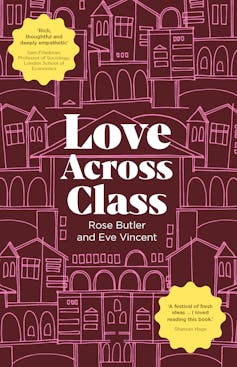
Class can play a role in shaping our expectations, anxieties and confidence, as both Patrick and Caleb pondered, from very different ends of the class spectrum, in their interviews with us. Sometimes, the class-based priorities and values we are raised with in childhood might come to repel us as adults, as Felicia explored.
And for Jacinta, access to material assets, including housing, could not be seriously discussed without recognising the significance of class-based wealth. It was her romantic relationship across class with the wealthier Caleb, more than her trajectory through school, mature-age study and work as a TV producer, that had brought home ownership within reach. And ironically, Caleb’s own ease of access to the money to buy a house produced an indifference to the home ownership she wanted.
Cross-class relationships demand facing class honestly. And in an increasingly unequal Australia , class is something many of us should think about more often. The personal reckonings we have documented, we hope, will stimulate a more honest, society-wide conversation about class in the midst of this growing inequality.
This essay draws on research and interviews from Love Across Class (MUP) by Eve Vincent and Rose Butler.
- Relationships
- Real estate
- Housing affordability
- Working class
- Middle class
- Friday essay

Data Manager

Director, Social Policy

Communications Coordinator

Head, School of Psychology

Senior Research Fellow - Women's Health Services
The Demonization of Rural America

B y the time I was seven or eight years old, I was keenly aware of my father’s drug use. He didn’t snort pills in front of me yet—he saved that for my teen years—but he talked about pills freely and I knew he took them. He was meaner than usual when he couldn’t get his pills, and I learned to recognize the signs of withdrawal long before I ever heard that term. Any hope for stability in our lives probably vanished before I could walk. And by the time I became an adult, everyone in my nuclear family—and plenty of my extended family members—was struggling to cope with the impacts of violence, incarceration, and addiction.
I grew up in Appalachian Eastern Kentucky, where systemic poverty has been a challenge for many decades. We always joked that Kentucky was 20 years behind the rest of the country but as a kid, I didn’t understand what we really faced: underfunded schools, inadequate transportation systems, poor healthcare, unreliable utilities. Prescription pain pills flooded into our region and did nothing to cure our collective pain, but instead exacerbated the personal and social struggles that the region is often associated with.

I was born in 1979, so most of this unraveling and destruction took place during the 1980s and 1990s . But it was sometime in the early 2000s when I read about the opioid epidemic online for the first time. At first, I was shocked to learn prescription pills had become a mainstream problem. But next, I was angry. By this time, pain pill manufacturers had changed their formulas so pills could no longer be crushed and snorted or injected; right away, heroin became widely available, which shocked me. When I was little, heroin was a city drug, scary and distant. Someone must have known that opiate-addicted hillbillies were a ripe market for a replacement opiate, just as someone had first found a way to saturate the Appalachian region with highly addictive pills without drawing attention to their crime.
But why wasn’t it talked about until now? Why wasn’t it an epidemic when it was ravaging my family for the last 20 years? Why wasn’t it newsworthy when my father chose pain pills over feeding his family, or when the same thing happened to families all around me?
I already knew the answer to those questions, though. Eastern Kentucky had been a throwaway place for a long time. Through a wide range of experiences, I learned at a young age that we were poor white trash. The stereotypes about us were, and continue to be, disdainful and dismissive, mixed with a potent disgust for good measure. Our accents are signs of ignorance and stupidity; we’re presumed to be shoeless and perpetually pregnant, sometimes—repulsively—even as a result of incest. Lawless and toothless, who would decry a manmade epidemic that wiped out thousands of hillbillies and their worthless children?
Read More: Kentucky Floods Destroyed Homes That Had Been Safe for Generations. Nobody’s Sure What to Do Next
Americans have discarded and scapegoated various socioeconomic groups throughout our history—this is not a new phenomenon. Unlike many biases that we have reckoned with, though, the vitriolic view of Appalachia—and to some extent, other areas of rural America—stems from an entrenched classism that remains unchallenged in our collective moral consciousness.
The most popular Mexican restaurant in our small town of Berea, Kentucky, has several machines where you can buy gumballs, small toys, and even temporary tattoos. When they were little, my kids always begged for a quarter or two so they could buy something after we ate there. But there was one novelty that made me cringe each time and I forbade my children from spending quarters on it: the hillbilly teeth , which are “the first line of fake teeth purposefully designed to look trashy, hillbilly-like, and downright gross.”
The teeth didn’t offend my sensibilities as a young mother; they publicized my shame. I grew up in a holler and the well my father dug for our house never functioned quite right. My parents often had to pump creek water into the well so we would have water pressure and I knew we weren’t supposed to drink it. But we still mixed it into Kool-Aid and coffee, cooked with it, and brushed our teeth with it. Most of the time, we drank milk or pop.
My brother and I both had visible black cavities on our baby teeth and I looked forward to the day they would fall out. But when my permanent teeth grew in, they were spaced too far apart on top and crowded against each other on the bottom; my gums bled at humiliating moments. Somehow, I always knew my teeth were a sign of the particular kind of poverty I came from.
Why didn’t my parents get us clean drinking water and ensure we had proper dental care? The first reason for these oversights was my father’s drug addiction; the second was his relentless abuse of my mother, my brother, and me. Visits to the dentist, fixing the well, braces for my permanent teeth—those concerns fade into the background for both the drug-addicted and traumatized minds.

When I moved away from my hometown, I found a way to hide my accent at college and work, as so many Appalachians do. But I couldn’t hide my teeth or fix them until I was well into adulthood. The hillbilly teeth at the Mexican restaurant served as a cruel reminder that it’s socially acceptable to mock the socioeconomic class I was born into; our problems are a joke.
Another popular, insidious sentiment loomed large in the 2016 election, and I suspect it was infused into early conversations about our opioid problem: “They deserve what they get.”
The 2024 book, White Rural Rage , highlights the problematic conversations around Appalachia in interesting ways. Early in the book, the authors claim that rural America poses “a quadruple threat to democracy” and they begin their critique with Mingo County, West Virginia. The authors decry the fact that this county’s majority vote went to Trump in both 2016 and 2020, but fail to acknowledge an important fact in Appalachian voting and indeed, in voting among many vulnerable populations: less than half of the registered voters cast a ballot in either election.
Even though this book doesn’t claim to focus on Appalachia, Mary Jo Murphy at The Washington Post suggests early in her review of it that “Someone write a new elegy for the bilious hillbilly, because these authors went for his jugular.” She addresses rural Americans from that point after. “Hillbillies” are historically associated with Appalachia, but the poor, white inhabitants of this handful of states don’t represent rural America as a whole. They’re used as an easy target—a convenient stand-in for the diverse population that actually comprises rural America—because they’re considered to be poor, ignorant, white trash that no one will defend.
There will be no social backlash against overt and covert claims that rural Americans deserve everything they get. Poor whites remain a safe target for political commentary and cheap humor alike.
Classism is not just a problem when someone writes a book about it. And it’s not just a problem when people take to social media to blame election results on some of our most disenfranchised citizens. Classism distracts us from solving our collective problems because it keeps us from asking the right questions. Classism tells us to blame rural whites for our country’s ills—just like other populations have been blamed in the past—demonizing our neighbors instead of the dysfunctional systems and perhaps even individuals who hold incredible power over our political and financial wellbeing.
Whether they are poor or not, white or not, rural Americans grapple with the same issues as everyone else: poverty, violence, addiction, and social decay are obviously not unique to rural areas. But this population faces those problems with fewer resources than their urban and suburban neighbors. Just as there is no excuse for bigotry, we cannot justify blaming our country’s challenges on a disempowered socioeconomic group. Placing blame fuels divide. We need to do some collective soul-searching to understand our biases and find a way to move past them.
Finding solutions is the harder work and the right work. That work requires that everyone has a voice and a seat at the table—especially the people who have historically been excluded. If we can find the courage to set aside classist prejudice, we might discover that there are no throwaway places and more importantly, no throwaway people. Not even hillbillies like me.

Photographer Stacy Kranitz has been documenting life in Appalachia for over 13 years to challenge stereotypes and provide an honest look at a complex region .
More Must-Reads from TIME
- How Selena Gomez Is Revolutionizing the Celebrity Beauty Business
- TIME100 Most Influential Companies 2024
- Javier Milei’s Radical Plan to Transform Argentina
- How Private Donors Shape Birth-Control Choices
- The Deadly Digital Frontiers at the Border
- What's the Best Measure of Fitness?
- The 31 Most Anticipated Movies of Summer 2024
- Want Weekly Recs on What to Watch, Read, and More? Sign Up for Worth Your Time
Contact us at [email protected]
75 books we’re most excited to read this summer
W hether you love fiction, nonfiction, mystery, or romance, we’ve got you covered! The Globe’s annual summer reading preview features 75 books coming out this summer that we think you’ll want to slip into that beach bag, backpack, or picnic basket.
Carole V. Bell is a Jamaican-born critic and communication researcher exploring media, culture, and politics.
Leland Cheuk is the author of three books, most recently “No Good Very Bad Asian.”
Lauren LeBlanc is a board member of the National Book Critics Circle.
Daneet Steffens is a book critic and journalist.
Kate Tuttle edits the Globe’s books section.
Chris Vognar , a freelance writer, was the 2009 Nieman Arts and Culture Fellow at Harvard University.
The Boston Globe may earn a portion of sales from products that are purchased through our site as part of our Affiliate Partnerships with retailers.
© 2024 Boston Globe Media Partners, LLC

Opinion Columnists | Dan Rodricks: Mac Mathias memories, nostalgia…
Share this:.
- Click to share on Facebook (Opens in new window)
- Click to share on Twitter (Opens in new window)
Baltimore Sun eNewspaper
- Readers Respond
Opinion Columnists
Opinion columnists | dan rodricks: mac mathias memories, nostalgia for a principled republican senator | staff commentary.

Imagine a Republican known for his political and moral courage, a champion of civil rights, voting rights, equal rights, the rule of law, ethical government, collegiality and bipartisanship.
Imagine a Republican known not so much for cutting taxes as for increasing efforts to eradicate poverty and hunger.
Imagine a senator who, despite his suburban/rural roots, wants to help cities like Baltimore.
He also wants to support strong environmental regulation to save the Chesapeake Bay and the development of clean energy sources to slow climate change.
He refuses to go along with the tough-on-crime trend of the moment, becoming the only senator to vote against mandatory sentences and the abolition of parole for federal inmates, warning (accurately) of mass incarceration as the nation escalates the war on drugs.
He demands campaign finance reform and decries the influence of money on both Republicans and Democrats. For this, he is called “the conscience of the Senate.”
As I say, it’s impossible to imagine such a thoroughly principled and progressive Republican in Congress today.
Maryland voters might still want to send such an admirable man to Washington, as they did repeatedly from 1961 to 1987.
But it’s hard to imagine that Maryland Democrats would see the point, with today’s congressional Republicans more cult than caucus, and so much potentially at stake with a partisan power shift in the Senate.
Most of all, it’s hard to imagine Charles McCurdy Mathias Jr. being a happy camper in Washington. It’s impossible to imagine him joining all those other spineless Republicans in supporting Donald Trump, by standing behind him at his criminal trial in New York or by cynically casting doubts on the integrity of the 2024 presidential election even before any votes are cast.
Were he still alive, Mac Mathias would be appalled at what’s become of his party.
In fact, when he left Washington, it was during the second term of President Ronald Reagan and the shift of the GOP to the right. That’s almost a quaint thought these days — Reagan’s brand of conservatism being mild by Trump-era standards — but it’s mentioned in a new book as one of the factors that led to Mathias’ decision to leave Washington.
He died in 2010, but memories of Mathias’ long service in both the House and Senate remain golden for those who knew him or worked for him.
The three-term senator is described in “Mathias of Maryland: Remembering a Lincoln Republican in the Senate,” a series of insightful and nostalgic essays published this month by McFarland Books. The editors are Frederic B. Hill and Monica Healy, both of whom worked for Mathias. (Hill is a former Sun foreign correspondent who became Mathias’ director of foreign affairs in 1985.)
Among the essay authors are Rep. Steny Hoyer and former Sen. Barbara Mikulski. The book closes with then-Vice President Joe Biden’s eulogy of Mathias.
“From Mac, more than anything else, I learned about courage, both moral and political,” Biden said. “It is Mac’s moral courage, the rarest of qualities, that made him stand out among the many great men and women with whom I have served.”
The essays, along with the foreword by political scholar and onetime congressional staffer Norman J. Ornstein, describe a very different Washington and GOP.
Once upon a time, Ornstein notes, Mathias operated among kindred spirits, moderates who believed in the importance and integrity of the Senate and holding to a norm that has been called “institutional patriotism.” They were partisan, to be sure, and there were bitter battles over civil rights, the Vietnam War and the GOP’s racially charged push toward “law and order.” But there were bipartisan bright spots — the passage of the Clean Water Act and the Clean Air Act, the establishment of the Environmental Protection Agency and Title IX rights for girls and women; even the Senate’s investigation of the Nixon Watergate scandal was bipartisan, civilized and thorough.
But the group of moderate and liberal Republicans who regularly worked across the aisle does not exist today, say Hill and Healy.
“Today’s party is a shell of what it once was,” they write. “It has been on a downward spiral since Ronald Reagan shifted the party to the right and House Speaker Newt Gingrich led it to a new level of tribalism.”
Ornstein notes that there are few, if any, conservative Democrats in the Senate and no moderate-to-liberal Republicans like Mathias. With the exception of the retiring Mitt Romney, Ornstein adds, the few Republican senators with Mathias-level gravitas “regularly voted with Donald Trump’s desires and interests, acting more like apparatchiks than independent-minded, problem-solving senators, saying little or nothing about Trump’s corruption and links to the world’s most vicious autocrats and dictators.”
Perhaps this will change someday, though it’s hard to imagine when — just as it’s hard to imagine Mac Mathias in Washington today.
“A liberal Republican, putting country over party, voting his conscience even when it clashed with the narrow interests of a president of his party, is simply nowhere to be found in the Senate or House,” writes Ornstein. “But one thing is clear to anyone who knew and worked with Mac Mathias: He would not bend his values one iota to fit the demands of his tribe if he were here and in the Senate today.”
More in Opinion Columnists

Opinion Columnists | Armstrong Williams: The unforgivable exploitation of innocence | GUEST COMMENTARY

Opinion Columnists | Armstrong Williams: Paul Ryan discusses divisiveness of identity politics | VIDEO COMMENTARY

Opinion Columnists | Armstrong Williams: Witnessing legend Rafael Nadal at French Open a privilege | STAFF COMMENTARY

Opinion Columnists | Dan Rodricks: As the World War II generation passes, a pause to honor one who served | STAFF COMMENTARY

Mexicans Are on the Verge of Electing Their First Female President
Claudia Sheinbaum is the front-runner in Mexico’s presidential race, but she is wrestling with the image that she could be a pawn of the current president.
If elected president of Mexico this weekend, Claudia Sheinbaum will inherit a long list of troubles from her predecessor and mentor, Andrés Manuel López Obrador. Credit... Marian Carrasquero for The New York Times
Supported by
- Share full article

By Natalie Kitroeff
Reporting from Mexico City
- May 30, 2024 Updated 6:33 p.m. ET
Claudia Sheinbaum’s list of accolades is long: She has a Ph.D. and a shared Nobel Peace Prize and was the first woman elected to lead Mexico City, her nation’s capital and one of the largest cities in the Western Hemisphere.
Now she has another chance to make history. Ms. Sheinbaum, 61, is the clear front-runner in the Mexican election on Sunday, putting her in position to become the country’s first female president.
But she has an image problem, and she knows it.
Many Mexicans are wondering: Can she be her own leader? Or is she a pawn of the current president?
“There’s this idea, because a lot of columnists say it, that I don’t have a personality,” Ms. Sheinbaum complained to reporters earlier this year. “That President Andrés Manuel López Obrador tells me what to do, that when I get to the presidency, he’s going to be calling me on the phone every day.”
With the Mexican election just days away, Ms. Sheinbaum is facing a fundamental dilemma.
She insists she will govern independently from her mentor, Mr. López Obrador, and has some different priorities. But veering too far from his agenda could be very risky.
She and Mr. López Obrador are “different people,” she said in an interview. He’s an oilman who invested in environmentally questionable projects; she’s a climate scientist. Yet Ms. Sheinbaum has risen to the top in part by aligning herself completely with him, and by backing moves like his big bet on the national oil company and constitutional changes that critics call antidemocratic.
Will she dare to stray from those policies if she wins office, inviting the reproach of Mr. López Obrador and the movement that got her there? Or will she dedicate herself to cementing his legacy, even if it means stifling her own vision?
“Claudia can’t say what she’s going to do, because right now she has to show absolute loyalty to Andrés Manuel,” said Ana Laura Magaloni, a legal expert who advised Ms. Sheinbaum during her first year as mayor.
“What’s going to happen when Claudia is free from that yoke, when Andrés Manuel is no longer there?” Ms. Magaloni said. “No one knows.”
The other top contender is a woman named Xóchitl Gálvez, a tech entrepreneur who is representing several opposition parties. But with Ms. Sheinbaum leading the polls by 20 percentage points, much of the national debate has centered on who she would really be as president.
Ms. Sheinbaum says it is sexist to suggest that the possible first female leader of Mexico is really only the puppet of a man.
“There’s a trace of misogyny, of machismo there,” she told one interviewer. “They say, ‘The only reason she’s ahead in the polls is because she’s the same as the president, or she’s the president’s favorite.’”

Mr. López Obrador will be remembered for doubling the minimum wage and lifting millions out of poverty, but also for empowering the military, prioritizing fossil fuels and pushing measures that critics say could weaken Mexico’s democratic institutions.
His successor stands to inherit a long list of troubles. The state-owned oil company is buckling under debt, migration through the country has reached historic highs, violence is raging and former President Donald J. Trump is already threatening tariffs if he wins the American election.
Ms. Sheinbaum told The New York Times that she was prepared to work with whichever candidate wins the next U.S. election. Publicly, she has echoed Mr. López Obrador’s emphasis on tackling Mexico’s cartel violence and migration by addressing their root causes. In a hint of potential change, she said in a recent debate that she would seek to reform the c ountry’s migration authority , an agency often accused of corruption.
“We need to be more effective in decreasing irregular crossings,” Juan Ramón de la Fuente, a member of her campaign team who is seen as her likeliest pick for foreign minister, said in an interview.
Some in Washington have privately questioned whether Mexico’s cooperation on migration could lag after the country’s elections, but Mr. de la Fuente batted away those concerns. “We will continue with the same, I would say, rigor trying to contain those flows of migrants,” he said.
A former ballet dancer, Ms. Sheinbaum calls herself “obsessive” and “disciplined.” But discipline may not be enough, analysts say.
Mr. López Obrador is a generational political talent who built his party into a juggernaut by relying on the force of his personality. When his coalition became fractious, he used his enormous political capital to corral internal rivals. When problems arose, he persuaded Mexicans he was solving them even if his own government’s statistics disagreed .
Now comes Ms. Sheinbaum, her demeanor more professorial than fiery, trying to take control of a political world defined by Mr. López Obrador’s brand of power.
“She needs him,” said Carlos Heredia, a Mexican political analyst. “She doesn’t have the charisma, she doesn’t have the popularity, she doesn’t have the political stamina of her own, so she needs to borrow that from López Obrador.”
The Times spoke with two dozen people who have worked with or know Ms. Sheinbaum and also visited campaign events, reviewed her writings and her media appearances and interviewed her, once in 2020 and again this year.
What became clear is that Ms. Sheinbaum has long seemed more comfortable quietly getting things done than selling herself or her achievements.
The granddaughter of Jewish immigrants who fled Europe, she rarely discusses being Jewish or almost anything about her personal life, colleagues say. When interviewers ask her about the Nobel Prize she shared with a panel of climate researchers, she notes how many others were involved in the work.
She is known as a tough boss with a quick temper who can inspire in her staff fear and adoration at the same time. Publicly, though, her affect is so controlled it verges on aloof.
Mr. López Obrador, by contrast, is entirely comfortable revealing his inner emotional state to the world. Nearly every weekday for the last five years, he has held a morning news conference in which he spends hours hashing out his anxieties, celebrating his wins and assailing his critics. When he’s not going for the jugular, he comes across as warm and charming.
“Andrés is more charismatic,” Marcelo Ebrard, the former foreign minister who is now on Ms. Sheinbaum’s campaign team, said in an interview. A one-time rival of Ms. Sheinbaum’s within the party, Mr. Ebrard didn’t mean this negatively. Hers is “a different kind of leadership,” he said, which may be “more efficient” than personality-driven.
For some Mexicans, a thrills-free woman may be an ideal antidote to an entertaining man who plunged the country into partisan turmoil.
But her opponents just see an opportunity.
At a recent campaign event for college students , Jorge Álvarez Máynez, the third-place candidate, was asked to define Ms. Sheinbaum.
“Very boring,” he said, smirking. The room broke into applause.
‘The Mayor Said To’
Born to two scientists who were leftist activists in the capital, Ms. Sheinbaum was always “a serious girl,” said Arturo Cano, a journalist who wrote a biography of the candidate. As a child, she made family visits to feed political prisoners, Mr. Cano said.
While at the National Autonomous University, she helped lead a movement protesting a plan to raise student fees and change admissions. She married one of the leaders of the movement and had a child with him.
In the early 1990s, they moved to California, where she studied Mexico’s energy consumption at the Lawrence Berkeley National Laboratory.
The candidate’s political career began when Mr. López Obrador was elected mayor of Mexico City in 2000 and invited her to a meeting at a diner. “What I want is to reduce pollution,” she recalled Mr. López Obrador telling her. “Do you know how to do that?”
Ms. Sheinbaum, who by then had written more than a dozen reports on energy use and carbon emissions, said yes. She became his environment minister. In meetings, she seemed willing to do almost anything to make her boss happy, according to several people who worked with her.
“The phrase she used over and over again was ‘The mayor said to,’” said Mr. Heredia, who worked with her in city government under Mr. López Obrador.
What that meant, according to Mr. Heredia: “We are not a cabinet for giving ideas,” he said. “We are a group of people here to execute what he decides.”
Mr. Heredia was confused when he learned that Ms. Sheinbaum, the climate expert, was overseeing the capital’s big new investment: building an elevated highway across Mexico City. The project would just encourage people to drive more, critics said.
At the time, Ms. Sheinbaum said that the new road reduced pollution by easing traffic, though experts say it is hard to corroborate that claim. One 2018 study said the effect on emissions was “not significant” because even though congestion was lower, the number of cars increased.
In 2006, Mr. López Obrador ran for president and lost by less than one percentage point. He disputed the results and led his supporters in a monthslong occupation of the capital’s downtown.
There, he held his own inauguration ceremony, where he proclaimed himself “the legitimate president” of Mexico. Ms. Sheinbaum helped adorn him with a presidential sash. When he then set up a “legitimate cabinet,” he named Ms. Sheinbaum as a minister.
“Many of us didn’t want to join them in this insanity of a ‘legitimate cabinet,’” said Guadalupe Acosta Naranjo, now in the opposition, who was then part of the leftist party Mr. López Obrador belonged to.
“But she was there with him,” Mr. Acosta Naranjo said, “living in this underworld, in this alternate, parallel universe full of people who thought they were making a revolution.”
‘What Do You Want, Someone Soft?’
In the years that followed, Ms. Sheinbaum straddled academia and politics, but she always stayed close to Mr. López Obrador. When he founded his Morena party in 2014, he asked her to run on the party’s ticket to become mayor of Tlalpan, a borough of Mexico City. With his backing, she won.
In 2018, he was swept into the presidency in a landslide and she became Mexico City’s mayor. She quickly gained a reputation as an exacting boss.
“One doesn’t go to her meetings to tell her, ‘I’m working on it,’” said Soledad Aragón, a former member of Ms. Sheinbaum’s cabinet. When she walked into a room, Ms. Aragón said, everyone sat up straight.
The mayor could remember specific numbers mentioned in a meeting weeks after it occurred, Ms. Aragón said, calling her “brilliant” and “demanding,” especially with herself, adding: “It has gotten results.”
Five officials who have worked with Ms. Sheinbaum, who were not authorized to speak publicly, said that she was quick to anger at times and would yell at her subordinates in front of large groups. Through a spokesman, Ms. Sheinbaum declined to comment on the accusation.
Mr. Cano, the biographer, said that when he asked Ms. Sheinbaum about the “many, many stories” he had heard of her toughness as a boss, she told him: “If there’s one thing I can’t stand, it’s lazy people.”
Her defenders say some people merely reacted badly to a woman in charge.
“I know that in her government, sometimes people got offended or felt bad because she yelled at them,” said Marta Lamas, a longtime feminist activist who has been close to Ms. Sheinbaum and her team. “But if a man yells, it wouldn’t be an issue because culturally, it’s different.”
“People say it in a critical way: ‘She’s tough,’” Ms. Aragón said. “What do you want, someone soft in charge of the city?”
By the time Covid hit Mexico, Ms. Sheinbaum had eked out some space to govern her own way, empowering technocrats over party loyalists and investing in the police to fight crime, instead of relying on the military like Mr. López Obrador.
Now, in interviews, she points to the pandemic as evidence that she and Mr. López Obrador are not always aligned .
Mr. López Obrador rarely wore masks in public, suggested two amulets would protect him from Covid and did not emphasize nationwide testing. Ms. Sheinbaum tested aggressively and pushed mask-wearing.
But when scientific principles conflicted with her loyalty, Ms. Sheinbaum chose loyalty.
As Christmas approached in 2020, with hospital beds running low, the federal government misled citizens about the severity of the virus in the capital, saying it hadn’t reached the critical level of contagion that would have required a full lockdown. The capital stayed open for weeks.
Ms. Sheinbaum could have shut the city down earlier, but didn’t. The result was an enormous outbreak.
An independent commission this year called the episode “one of the most serious government failures” of the pandemic in Mexico. Ms. Sheinbaum has said she disagrees with the commission’s findings.
No Confrontation, No Submission
Ms. Sheinbaum’s behavior during the campaign has been a kind of Rorschach test for the Mexicans obsessing over what path she would take if elected president. Those who think she would break from Mr. López Obrador see signs of autonomy everywhere. Those who disagree see only obedience.
Subscribers to the first narrative point to the candidate’s appointment of well-respected experts to her campaign team, her vow to promote renewable energy and her openness to re-evaluating the military’s expansion into public enterprises.
But she has also gotten behind some of the president’s most contentious ideas.
In February, Mr. López Obrador put forth a set of profound changes to the constitution, including eliminating independent regulators and requiring Supreme Court justices to be elected by popular vote. The move provoked alarm among critics, who said the president was trying to obliterate checks and balances.
Still, a day later, Ms. Sheinbaum fell in line, holding a news conference where she announced she would adopt all his proposals as her own.
To the naysayers, this was an illustration of their worst fears: Ms. Sheinbaum following instructions from Mr. López Obrador to take steps that would harm democracy.
But Mr. de la Fuente, who is helping to design Ms. Sheinbaum’s plans, seemed to downplay the importance of the proposed changes to the judiciary.
“I wouldn’t say it is necessarily the top priority,” he said, adding that Morena would need to win a supermajority in Congress to push the measures through, something party officials see as unlikely.
Between Ms. Sheinbaum and Mr. López Obrador, he added, “There will be no confrontation, but there will be no submission.”
For years, the candidate has tried to explain how she can be so in step with the president while also being herself. The answer, she says, is simple: She genuinely believes in him.
In 2022, a radio host asked her a pointed question from a female listener: “Why don’t you choose to be a woman who governs with her own ideas? Why don’t you get out of AMLO’s circus?” she asked, using Mr. López Obrador’s nickname. “Why have the same rhetoric with the same words?”
Ms. Sheinbaum didn’t hesitate.
“If you think the same as another person, it’s not that you’re copying them; you just agree with the ideas,” she said. “You can’t deny what you believe.”
Emiliano Rodríguez Mega contributed reporting from Mexico City.
Natalie Kitroeff is the Mexico City bureau chief for The Times, leading coverage of Mexico, Central America and the Caribbean. More about Natalie Kitroeff
Advertisement

IMAGES
VIDEO
COMMENTS
poverty, the state of one who lacks a usual or socially acceptable amount of money or material possessions. Poverty is said to exist when people lack the means to satisfy their basic needs. In this context, the identification of poor people first requires a determination of what constitutes basic needs. These may be defined as narrowly as ...
500+ Words Essay on Poverty Essay. "Poverty is the worst form of violence". - Mahatma Gandhi. We can define poverty as the condition where the basic needs of a family, like food, shelter, clothing, and education are not fulfilled. It can lead to other problems like poor literacy, unemployment, malnutrition, etc.
Essays about poverty give valuable insight into the economic situation that we share globally. Read our guide with poverty essay examples and prompts for your paper. In the US, the official poverty rate in 2022 was 11.5 percent, with 37.9 million people living below the poverty line. With a global pandemic, cost of living crisis, and climate ...
Poverty in "A Modest Proposal" by Swift. The high number of children born to poor families presents significant problems for a country."A Modest Proposal" is a satirical essay by Jonathan Swift that proposes a solution to the challenge facing the kingdom. Life Below the Poverty Line in the US.
Essay on Poverty. Poverty is a disease that has no cure. The deeper this disease is, the deeper its wound. By the way, man lives under compulsion. But usually one wants to avoid it. Poverty is a condition of extreme poverty for any person or human being. This is a situation when a person starts to lack important things in his life such as the ...
1. Introduction. Poverty "is one of the defining challenges of the 21st Century facing the world" (Gweshengwe et al., Citation 2020, p. 1).In 2019, about 1.3 billion people in 101 countries were living in poverty (United Nations Development Programme and Oxford Poverty and Human Development Initiative, Citation 2019).For this reason, the 2030 Global Agenda for Sustainable Development Goals ...
Essay on Poverty in 100 words. Poverty is defined as a state of scarcity, and the lack of material possessions to such an extreme extent that people have difficulties in fulfilling their basic needs. Robert McNamara, a former World Bank President, states that extreme poverty is limited by illiteracy, malnutrition, disease, high infant mortality ...
Overview. Around 700 million people live on less than $2.15 per day, the extreme poverty line. Extreme poverty remains concentrated in parts of Sub-Saharan Africa, fragile and conflict-affected areas, and rural areas. After decades of progress, the pace of global poverty reduction began to slow by 2015, in tandem with subdued economic growth.
The global poverty headcount ratio at $2.15 is revised slightly up by 0.1 percentage points to 8.5 percent, resulting in a revision in the number of poor people from 648 to 659 million. ( World Bank)
1. End poverty in all its forms everywhere. Find out more. END POVERTY IN ALL ITS. FORMS EVERYWHERE. Eradicating poverty is not a task of charity, it's an act of justice and the key to unlocking an enormous human potential. Still, nearly half of the world's population lives in poverty, and lack of food and clean water is killing thousands ...
5 Essays About Poverty Everyone Should Know. Poverty is one of the driving forces of inequality in the world. Between 1990-2015, much progress was made. The number of people living on less than $1.90 went from 36% to 10%. However, according to the World Bank, the COVID-19 pandemic represents a serious problem that disproportionately impacts the ...
Dalrymple states that the comfort and certainty of having the government provide the necessities to live have negatively impacted lower-income and disadvantaged groups. It is stated: "the squalor of England was not economic but spiritual, moral, and cultural" (Dalrymple). Thus, spiritual poverty is more severe and intricate than mere ...
"What Is Poverty?" Jo Goodwin Parker The following selection was published in America's Other Children: Public Schools Outside Suburbs, by George Henderson in 1971 by the University of Oklahoma Press. The author has requested that no biographical information about her be distributed. The essay is a personal account, addressed directly to
Poverty itself is typically regarded as a lack of income, which in turn is related to poor housing, inadequate education, insufficient medical care, excessive fertility, unemployment, and many other depressing problems. Some areas, such as Appalachia, appear as massive concentrations of poverty.
234 essay samples found. Poverty, a state of deprivation of basic human needs and economic opportunities, is a pervasive issue across the globe. Essays could explore the systemic causes of poverty, its impact on individuals and communities, and the various strategies employed to alleviate poverty. Additionally, discussions might delve into the ...
According to Tagler and Cozzarelli (2013), poverty is an economic condition that is characterized by sustained low levels of income. The status affects access to basic services of education, health, food, and shelter. The research focuses on the causes of poverty and the benefits of poverty alleviation in achieving sustainable development.
Poverty brings the poor to low levels of health and education, lack of clean water and sanitation, inadequate physical security, lack of voice, and insufficient capacity and opportunity to better one's life. To discuss the issue of poverty, this essay analyzes global trends, causes, effects, and management of poverty.
Poverty is a state or condition in which a person or community lacks the financial resources and essentials to enjoy a minimum standard of life and well-being that's considered acceptable in ...
Global poverty is one of the most pressing problems that the world faces today. The poorest in the world are often undernourished, without access to basic services such as electricity and safe drinking water; they have less access to education, and suffer from much poorer health.. In order to make progress against such poverty in the future, we need to understand poverty around the world today ...
On the problem of poverty, though, there has been no real improvement — just a long stasis. As estimated by the federal government's poverty line, 12.6 percent of the U.S. population was poor ...
In this essay, the author uses her repetition strategy at the beginning of most of the paragraphs. She repeats the phrase "Poverty is". The essay is well organized where she repeats the word - poverty many times. That means her main concern is poverty and she is showing her bitter feelings and frustrations about her miserable conditions.
Your global poverty essay should begin with a great topic. After the topic, outline the introduction. The body paragraphs come immediately after the introduction. Depending on the length of the poverty essay, it can follow the five-paragraph format. The body paragraphs should contain one idea.
Had adequate attention been paid to the concerns raised by the editors of the Book titled Poverty, Chronic Poverty and Poverty Dynamics: Policy Imperatives when it was released, India might have been better prepared to tackle the adverse effects of the COVID-19 pandemic on people's lives. The set of nine essays in the Book highlight key concerns of the poor and vulnerable, whose insecurities ...
Long Essay on Poverty is usually given to classes 7, 8, 9, and 10. Poverty is a worse situation that represents poor quality of life, rising illiteracy and malnutrition, lack of basic and essential elements of living, lower development of the human resource, and others. This is a more significant challenge, significantly hindering the growth of ...
Irreparable Evil: An Essay in Moral and Reparatory History by David Scott, Ruth and William Lubic Professor in the Department of Anthropology, explores the legacy of slavery and its moral and political implications, offering a nuanced intervention into debates over reparations. Scott reconsiders the story of New World slavery in a series of ...
What happens when people form romantic relationships across class? Eve Vincent and Rose Butler interviewed 38 people to find out. Their candid answers are revealing.
By Bobi Conn. May 23, 2024 7:00 AM EDT. Conn is a Kentucky author of memoir and fiction. Her new novel Someplace Like Home explores the resilience of women living in Appalachia and rural America ...
State of Paradise. by Laura van den Berg. A ghost writer and her husband quarantine with her family in Florida, a place "equal parts danger and magic.". Against this fraught backdrop, van den ...
A new book, published this month by McFarland Books, offers insightful and nostalgic essays about the late Republican senator.
Ms. Sheinbaum says it is sexist to suggest that the possible first female leader of Mexico is really only the puppet of a man. "There's a trace of misogyny, of machismo there," she told one ...